#and whose architecture was based on instruments to play that music
Explore tagged Tumblr posts
Text
working on 100%ing Fontaine and finally finished Remuria yesterday and Genshin's soundtrack has always been a strong point, but I really was not emotionally prepared for the Gathering Tempest -> Glory and Decay -> Whisper of Domus Aurea combo
#Remuria was a society whose whole thing was music. whose political structure was based on music#and whose architecture was based on instruments to play that music#and yet music = good bowled me fully over#don't even talk to me about hiding 'Year of Tribulation' as the ost for a fucking. bubble popping challenge lmao. hilarious choice.#I'm going to be thinking about whisper of domus aurea for a LONG time#the final movement of a thousands of years long symphony from a dead society played not only as the final nail in the coffin.#but also to usher a hundred thousand souls into the peace of death so they may someday be reborn. and we play it with such TENDERNESS#not technically part of the combo but still relevant: honorable mention to Requiem Resonantia for the killer boss backing#genshin impact#the thing about this game is that I'm so normal about it okay#personal
1 note
·
View note
Text
Peter Hook and the Light, Joy Division: A Celebration. Brixton Academy, 10.07.2022
Beyond all this good is the euphoria
A greatest hits night at The Brixton Academy, with its ceiling that resembles the lunar surface, is in keeping with the music of Joy Division, but for some fans, will have Ian Curtis turning in his grave, as the band’s bassist continues to tour the back catalogue, following his classical re-boot with Manchester Camarata in 2019.
Even a nuts and bolts celebration of Joy Division seems a contradiction in terms, especially in the height of midsummer, as the performance, after a brief aperitif of New Order, essentially charts the trajectory of a troubled singer’s odyssey to suicide as The Light segues from Warsaw material to the albums Unknown Pleasures and Closer in full.

So little at first glance stacks up in the enterprise’s favour. And there is also the challenge of reproducing live those two albums which are masterpieces of studio production, singularly crafted in 1979 and 1980 by Martin Hammett of Factory records. There was further grist to the sceptic mill as Hook’s voice failed to carry on occasions and the sonic intricacies and depth of space in tracks such as Insight and Wilderness were lost.
Hook, of course, has every right to plough the reprise furrow, as he was not only a member of New Order and Joy Division, but central to both’s architecture and unique sound. Like Jacque Burnel’s in The Stranglers, his bass functions like lead guitar; at the base of the fretboard for New Order and nearer the top of the neck for Joy Division. Hook makes a valiant attempt to ape Bernard Summer and Curtis’ vocal styles, even as he hangs over his bass like a sullen, dispirited gorilla or a costume of one hung out to dry, rather than attempting to mirror Curtis’ onstage echoes of his own epilepsy.

At other junctures he wields the instrument as a piece of machinery that’s capable of felling a redwood, legs wide apart to emphasise its heft. This is entirely fitting for the early DIY Warsaw tracks, grandiose terrors of Day Of The Lords and the explosive chords of Shadowplay; that come surging at the audience like the wrecking of an afternoon’s peace on a deserted country highway, by the onrush of a juggernaut. Just as they do on the original recording. The magisterial New Dawn Fades is also faithfully intact. Nevertheless at the interval the ledger records Unknown Pleasures as a somewhat mixed success.
As we process to Closer, whose original tone is one of inexorable fate being played out, a fait accompli like a Greek tragedy, Hook’s macho physical posture is at odds with Curtis’ even keener mental fragility. However, besides A Means to an End, its emotional punch is consumately transmitted. The atmospheric and ethereal Heart and Soul retains the album’s clean, crisp drum riff and The Eternal is just as heartrending as on the original vinyl. Paul Kehoe captures Stephen Morris’ distinctive drum patterns brilliantly throughout the night.
The set naturally concludes with Decades, building gloriously to its climax of lyrical beauty and abject desolation. Then the horde is pulled down the Academy’s famous slope, for a rousing encore of Atmosphere, Ceremony, Transmission and Love Will Tear Us Apart that creates sheer delirium, just had as it did with the New Order coda, Temptation, at the evening’s outset.

To paraphrase Atmosphere, people like us did indeed find it easy, and we were, all said and done, by the end walking on air. Perhaps Curtis would have been posthumously cheered to have seen his brief but extraordinary contribution to the output of the post punk years still dragging forward the fans with its irresistible undertow. Salford Rules, read one of the amps. Hard to disagree on an august night like this.
Words: Adrian Cross
Images: Richard Gray
0 notes
Note
Hey, just saw your post about Egal the Bard or whatever his name is having inaccurate instruments and making inaccurate music. Your info was very helpful about the instruments, but could you please speak more to why it's musically inaccurate? Or maybe, do you have video examples of what traditional medieval ensemble music sounds like?
Thank you for asking! I run this blog to share things with the intellectually curious.
The misrepresentation of historical music is my pet peeve. I was not kind to this burnout bard, this short-shift schop, this miniature Minnesinger, because he is making the work of medievalists harder. I don't care if someone wants to play bard, but they shouldn't advertise their modern pop stylings as having been informed by the sonic architecture of the middle ages.
Here's the lowdown on medieval European instrumental music:
A lot of it came from North Africa and the Middle East. The Maghrebi Arab-Berbers, whom the Europeans called the Moors, conquered Andalusia and added it to the Umayyad Empire, which was huge and was comprised of Arabs, Persians, Turks, formerly-Byzantine Christians, and Jews. They brought instruments like the lute and shawm with them, and these instruments subsequently spread across Europe. The Moors brought a lot of culture to Europe in general: Córdoba became the European center of learning, especially in math, astronomy, medicine, and philosophy. The three Abrahamic faiths coexisted peacefully (well, after the invasion, and until the Christian Reconquista and subsequent expulsion of the Jews). Arabic, Persian, and Syriac cultures had also preserved classical Greek writings, and as Europeans returned from their various Crusades, they brought this knowledge with them. Aristotle inspired the monastic, literate intellectual life of medieval Europe, and Plato, via Arabic transmission, later inspired the Italian Renaissance.
We don't know how medieval instrumental music sounded, as we have no recordings and very few surviving instruments, and because most of the music and music theory that was written down was sacred a capella music recorded by literate monks and nuns. Secular instrumental music was seen as a baser art, although that was the opinion of the monastic intellectuals, whose perspective is the only one that survives in writ. History is written by the ruling classes.
We can gather clues by looking at medieval depictions of instrumentalists. Illustrations are often simple and stylized, and historicist luthiers' recreations based solely on iconography tend to be cartoony and rough (like anime cosplay!). They should be relegated to theatre props. However, iconographic evidence may be augmented with the study of surviving "folk" music traditions (pardon the classist label. All music is folk music because all music is made by folks!). Some European folk instruments are very old and have evidently changed very little over the centuries, and many of their Middle Eastern and North African progenitors are still played, and the artistry of the great instruments like the oud (lute) and qanoun (psaltery) has been cultivated to greater depths than were ever reached in Europe, because their roots are so much older. The European genius is just as brilliant, but fickle: it often discards its old tools for new ones. For instance, the barbat, the Central Asian/Greater Iranian lute, has been played since ancient Mesopotamian times, and its descendents are more popular today than ever before.
Unfortunately, the Anglophone medieval European academic scene is still overcoming its inherited Eurocentrism, and Arabic scholarship is largely inaccessible to us due to language barriers. I'm sure everything is thoroughly documented and annotated in Arabic scholarship...
If we want to imagine what medieval Al'Andalus sounded like, our best bet is to listen to traditional Andalusian ensembles. The Arab-Andalusian Orchestra of Fez is over a century old - the oldest Andalusian ensemble that is still active - and its repertoire goes back to the middle ages:
youtube
Note the melodic intervals sound European, not Arabic. The ensemble prides itself on this. European tuning theory has changed subtly over the centuries, but from its earliest Greek roots it is still recognizable to the modern western ear. Traditional Andalusi music is similarly familiar, though Arabic, Persian, and Turkish music sound microtonally exotic to unaccustomed ears.
We have a treasure, a 13th century Galician illuminated songbook from the court of Alfonso X, el Sabio, of Castile. It's called the Cantigas de Santa Maria and it is full of sacred and pseudo-sacred Marian poems with notated melodies and illustrations of musicians.
Here are scenes from the musical life of Alfonso's court:










Here is a leading European early music ensemble's imagining of how it MAY HAVE sounded:
youtube
Here is another glimpse of the past, the painted ceiling of the Capella Palatina of Palermo, Sicily, Fatimid in style, from the 12th century. There are a lot of images of musicians on the six pages of this website.
In short, one mustn't take recordings of recreations of medieval music as gospel. Musicologists, music historians, and historical performers like myself do as best to be as authentic as we can, but the further we look back in history, the more we must engage in creative guesswork. It can be seen as artistic collaboration across time.
"The past is a foreign country."
- L.P. Hartley
13 notes
·
View notes
Text
Dust Volume 7, Number 3

Black Country, New Road
One of the funniest parts of Martin Amis’ Inside Story concerns an up-and-coming novelist, constantly asked at literary festivals to differentiate between his short stories and novels and just as consistently coming up with new ways to say that the short stories are, well, shorter. Same deal with Dust. These abbreviated reviews are, indeed, shorter than the full-lengths, but otherwise well worth reading. And, hoo boy, are there a lot of them this time. Contributors include Ian Mathers, Jennifer Kelly, Bill Meyer, Tim Clarke, Patrick Masterson, Arthur Krumins, Eric McDowell, Justin Cober-Lake, Andrew Forell, Ray Garraty, Jonathan Shaw and Bryon Hayes.
Aarktica and Black Tape for a Blue Girl — Eating Rose Petals (Projekt: Archive)
Eating Rose Petals by Aarktica and Black Tape for a Blue Girl
Aarktica’s Jon DeRosa and Black Tape for a Blue Girl’s Sam Rosenthal have known each other for a long time, but this release is the first time they’ve actually worked together. Rosenthal was so struck by the title song, one of the few from Aarktica’s 2019 release Mareación to feature DeRosa’s vocals, that with the latter’s permission and participation he created the almost 19-minute “Fleeting Rose Petals”, which features the original track backwards with wordless additional vocals from DeRosa, plus additional material by Rosenthal before and after it. The original (also included here, along with the closing “Valley of the Roses” which features Rosenthal further reworking the additional material from “Fleeting Rose Petals”) already felt like a single lambent moment in time suspended and held, and by reworking and reconfiguring that material over a full 37-minute span that effect is only intensified.
Ian Mathers
Altaat & Euter — Split (Ikuisuus)
split by Altaat / Euter
Two experimental drone outfits from Finland play extended abstract compositions on this split LP. Altaat’s sidelong “Palava Palaava” sounds like an orchestra tuning up in a wind tunnel as it splices long bowed tones with the rush and whir of large machinery. But however, chaotic that may sound, the actual effect is quite serene, the om of dissonant overtones melting into a white noise background of rattling, humming, whooshing mechanical sounds. Altaat’s Niko Karlsson and Miki Brunou, along with Jari Koho, subsume the noisy clatter of the post-industrial era into a dream-like, beckoning hiss. Euter, also a duo but not willing to give up personal names, works a less organically grounded sound, filling an expansive, echoey space with chortling, wobbling synth cadences, metallic clangs and staticky, between-stations blare. The long “Slowly Underwater,” unfolds in chilly surreality. You get the sense of vast metal furnaces blowing out corrosive chemical clouds, of mechanical sensors picking up and sending signals and of chittering, hurrying life amid ruins. (No, I’m not hearing anything especially watery.) “Magnetic Mammals,” which follows, is similarly machine-like and ominous, picking up vast, sirening sounds as if from a distance with bubbling bursts of radio interference in the foreground. Altaat’s side is certainly closer to conventional Western classical music, but Euter finds some intriguing, disquieting spaces. Makes you wonder what they’re putting in the water up there in reindeer land.
Jennifer Kelly
Rrill Bell — Ballad of the External Life (Elevator Bath)
ballad of the external life by Rrill Bell ////// aka The Preterite
One of the challenges of early electronic music was its labor intensity; it could take months of recording, processing, card-punching and pondering to come up with a few minutes of music. But tools change, and with them, opportunities for access open up. The music of Rrill Bell, a German-based American musician, makes that lengthy process shake hands with instant performance. Originally trained as a percussionist, he works mainly with tapes, which he records, uses in performance, and in the course of performance, records over and re-uses again. But in concert, he tends to improvise with these materials, making split-second decisions that occasionally get preserved for potential re-visiting.
If that sounds like a recipe for frenetic sonic action, it’s not. Mr. Bell’s tastes in original sounds tend towards bells and environmental captures, and he rarely crowds the mix. Tones squiggle and unspool, unidentifiable bumps appear and disappear, and birds chirp at the periphery. It’s easy to characterize this as ambient music, since a low-volume listen is pleasant but undemanding. But keep in mind that successful ambient music must be interesting as well as ignorable, and the dream-like sound walk of Ballad of the External Life still delivers.
Bill Meyer
Black Country, New Road — For the First Time (Ninja Tune)
For the first time by Black Country, New Road
“Sunglasses” erupts out of a blare of feedback, a roar of guitar noise that splinters and disintegrates as you trace its melody. Synths sound like police sirens. It’s all very slow and ominous, and for a minute, all those Slint comparisons make sense. And then it resolves into something like an indie rock song, spoke-sung over thunderous drums by one Isaac Wood, he of the tremulous voice and the unreliable narrative, whose art song proclivities may bring bands like Wild Beasts to mind, though without the fey falsetto. The song is a marvel of bravado and doubt, working the soft seam between ordinary male adolescence and mental illness, and the sunglasses play a key part. Says Wood, “I am looking at you with my best eyes and I wish you could tell/I wish all my kids would stop dressing up like Richard Hell/I am locked away in a high-tech/Wraparound, translucent, blue-tinted fortress/And you cannot touch me.” (Also, later, “I am more than adequate/Leave Kanye out of it,” which strikes me as brilliant for reasons I can’t fathom.) The point is that there are startling, riveting lyrics here, of the sort that you could make a case for leaving it unadorned, but Black Country, New Road is not interested in simplicity. The rather large ensemble includes not just the regular rock instruments but saxophone, violin and synths, all knotted up in proggy complexities and paced by a drummer (Charlie Wayne) good enough to give Black Midi’s Morgan Simpson a run for his money (the two bands are aligned and friends and Black Midi gets a name check in one of the songs). Indeed, the opening track of this six-cut collection is aptly titled “Instrumental,” a whirling gypsy klezmer cubist fantasy that is, if anything, nervier and more complicated than the vocal tracks. This is exciting, volatile stuff that could go anywhere from here.
Jennifer Kelly
Deniz Cuylan — No Such Thing As Free Will (Hush Hush)
No Such Thing As Free Will by Deniz Cuylan
Everything about Deniz Cuylan’s solo debut is understated. Six instrumental tracks running to just 27 minutes, released on the fittingly named Hush Hush Records, No Such Thing As Free Will seeks to evoke something subtle and universal out of minimal ingredients. There’s a robust architecture to this music, generating a sober, contemplative mood. Arpeggios on nylon-string classical guitar cycle around in precise arcs, gently bolstered by piano, clarinet and cello. The space in opener “Clearing” shyly invites the listener in; the record reaches a modest peak in the bright harmonics of “She Was Always Here” and the almost joyful elegance of “Flaneurs in Hakone”; then the music recedes into a melancholic fog on the closing title track. It’s telling, therefore, that Cuylan has worked as a soundtrack composer — his music feels complementary, receding modestly into life’s scenery rather than commanding the spotlight.
Tim Clarke
Arnold de Boer — Minimal Guitar (Makkum)
MINIMAL GUITAR by arnolddeboer
Somedays you just don’t do what you’re supposed to do. At the end of the last summer, Arnold de Boer decided to extend his holiday by a day and take a walk around town. When he got back home, he sat down, picked up an instrument and listened to the music that came out of his fingers. The music was no more expected than the activity that preceded it. Instead of the rough, voltage-enhanced intricacy of the music he plays with The Ex or his one-man band, Zea, de Boer played a set of acoustic guitar solos. Neither ostentatious nor self-consciously rustic, de Boer’s playing tends to zero in on an idea and see where it wants to go. Each rhythmic pattern, decaying harmonic, or rap on the body proposes an idea, which de Boer either explores or restates with minimal variation. Ah, there’s that word. This isn’t a study in minimalism, but an appreciation of how little you need to do if the original idea is sound.
Bill Meyer
Dusk + Blackdown — Rinse FM Mix January 28, 2021 (Rinse FM)
Rinse FM · Keysound (100% Keysound Production Mix) - 28 January 2021
I’m not sure there’s a place left on the internet better suited to explaining the rise of grime, dubstep and its attendant mutations than Martin Clark’s aging Blogspot under his Blackdown alias. From ground zero in London, Clark has been documenter, eyewitness and participant alike, a true lifer fully evidenced by his longtime partnership with Dan Frampton, aka Dusk, showcasing new music on their monthly Rinse radio show and Keysound Recordings record label. They’re an essential part of the culture, so it’s especially pleasant when they serve up some of their own riches. After the traditional December year-end roundup show, Dusk and Blackdown came roaring out of the gates in January with an all-Keysound broadcast in the middle of the night that features gobs of unreleased rollage over its two hours. It’s a nice reminder that though time may pass, URLs may cut out and memories may dim, some are still putting in the work one release, one radio show, one listen at a time. The sound is the key is right.
Patrick Masterson
EKG — 200 Years Of Electricals (Bandcamp)
200 Years of Electricals by EKG (Ernst Karel & Kyle Bruckmann)
Most things don’t hold their value. Why should time be any different? So, if Gabriel Garcia Marquez wrote 100 Years of Solitude in the 1960s, EKG might as well proclaim 200 Years Of Electricals in 2021. EKG is Kyle Bruckmann (double reeds, analog electronics, organ) and Ernst Karel (analog electronics, microphones). The duo first convened in the mid-1990s, when both men lived in Chicago, and Karel was mainly known as a trumpeter. They’ve carried on in sporadic fashion ever since, playing increasingly rare concerts as each man moved away from his original home base. They’ve turned snippets from these shows into subdued musical constructions, which they’ve issued on a number of compact discs over the years. For their first release in over a decade, the duo, who currently both live in the Bay area, have ditched the trumpet and the physical album format, and incorporated some of the field recordings that have become Karel’s main sound material in his solo work. But in other respects, this effort is every bit as concerned with iteration and inevitability as Marquez’ book. When you flip a switch, something hums. When you layer quiet sounds, they don’t necessarily get louder, but they do exert a stronger magnetism upon your ear. And you when spread your quietness over a vast stretch of silence, efforts to follow the sound inevitably do strange things to your sense of time. Wait, how many years have we been listening to that crackle? Why stop now?
Bill Meyer
Michael Feuerstack — Harmonize the Moon (Forward Music Group)
Harmonize the Moon by Michael Feuerstack
Montreal-based singer-songwriter Michael Feuerstack sweeps aside all extraneous fluff on his new album, Harmonize the Moon, zeroing in on precise finger-picked guitar parts, vivid lyrical imagery and a stark, affecting tone. He has a knack for smuggling blink-and-you’ll-miss-it moments of understated wonder into traditional-sounding folk songs you’ll imagine you’ve heard somewhere before. Indeed, he wryly admits to recycling the past in the opening song: “I used to be a singer, bumping around in the astral plane / Picking up astral trash, to polish it up again.” Though the foundation of guitar and vocals carries most of the weight, there’s tasteful reinforcement from vocal harmonies, electric guitar, lap steel, bass and drums. Amid these clean, spare arrangements, some of the lines stop you in your tracks, like the following from “Too Kind”: “The world is broken mirrors, traps and triggers / And cold blood pools in the kindest eyes.” With 10 finely honed songs running to just over half an hour, everything is measured and rather lovely. (Beautiful cover art, too.)
Tim Clarke
Michael and Peter Formanek — Dyads (Out Of Your Head Records)
Dyads by Michael and Peter Formanek
Virtuoso bassist, stalwart sideman, solid bandleader, fearless improviser, intriguing composer — Michael Formanek is all of those things, but he’s also a cool dad. At least that’s what it looks like from the outside. Not only did he include his son, Peter, in his musical activities from an early age, giving the youngster a chance to sit in with the likes of Tim Berne and Jim Black. Upon Peter’s return home from college, he joined him in a working duo. Dyads is their first recording, and it is testimony to the merits of giving the kid first-hand experience in the family business. Peter, who plays tenor saxophone and clarinet, has learned the merits of having a bold tone, a flexible improvisational approach and a way with a tune. Their performances unfold with a combination of patience and pith, which permits the listener to savor the elegance with which each musician supports the other.
Bill Meyer
Chris Forsyth & the Solar Motel Band — Rare Dreams: Solar Live 2.27.18 (No Quarter)
Rare Dreams: Solar Live 2.27.18 by Chris Forsyth & The Solar Motel Band
Chris Forsyth teams with Sunwatchers Peter Kerlin and Jason Robira at London’s Café OTO for expansive, incendiary jams that will remind you like a physical ache of what you’ve been missing in live music this awful year. “Dream in the Non-Dream” is a wide-horizon, endless vamp, driven ever forward by Kerlin and Robira in lock-sync, while Forsyth ratchets up tension with a car jack, then spins it off in wreckless, fiery abandon. “The First Ten Minutes of Cocksucker Blues” similarly balances rigor and open-ended-ness, marking off the measures with a hammering, repetitive cadence that becomes a mantra over time. There are also two Neil Young covers, both tending towards the electrified, Crazy Horse side of things, a slow by blistering “Don’t Be Denied” and a raucous “Barstool Blues” from Zuma. It’s all great stuff, and it might hold you for a month or two until we can all crowd up to the stage again.
Jennifer Kelly
Alexander Hawkins — Togetherness Music (Intakt)
Togetherness Music by Alexander Hawkins
Whether you listen to him in duos with Evan Parker or Tomeka Reid, small bands like the Chicago/London Underground or Decoy, or leading his own ensembles, English keyboardist Alexander Hawkins accompanies and improvises with an astute perception of the situation’s requirements. The title Togetherness Music can be taken several ways. The six-part suite combines parts from two different commissioned pieces, and it brings together elements of free and conducted improvisation, scored chamber music, and some discrete electronic interventions. Passages showcasing Evan Parker’s intricate soprano saxophone lines and Mark Sanders’ kinetic percussion contrast and coexist with rich and patiently evolving string passages executed by the Riot Ensemble. This music feels less like a sum of differing approaches than the expression of a cohesive in which all Hawkins’ good ideas fit together.
Bill Meyer
Russell Hoke — The Melancholy Traveller (Round Bale Recordings)
The Melancholy Traveler by Russell Hoke
This release follows up on the archival compilation A Voice From the Lonesome Playground from 2016 of Hoke’s material from small run releases of the 1980’s. With the new material here, Hoke delves into the unadulterated sound of voice and guitar or banjo, with mainly his own songs of loneliness and also the singularly bittersweet moments of existing as yourself, free and detached from society. Also covering two beautiful takes on Sandy Denny songs, which fit into the UK/US traditional direction of the rest. The album rests in the same delicate territory as other folkies such as Connie Converse, Jackson C. Frank, or even the more sedate songs of Daniel Johnston. What brings the album together is the expressiveness in any given moment of a song. The tact and execution consistently bring the emotion of the songwriting home.
Arthur Krumins
In Layers — Pliable (FMR)
Pliable by In Layers
In Layers puts up a middle finger against anyone who thinks that European unity is a passed fancy. The quartet’s members come from Portugal, Iceland and Holland, and their collective experience encompasses Nordic music theatre, lyric free jazz and the tooth-powderingly loud trio, Cactus Truck. But the music they make doesn’t really sound like any of that. Guitarist Marcelo Dos Reis, drummer Onno Govaert, pianist Kristján Martinsson and trumpeter Luís Vicente improvise music that is spacious enough to frustrate viral transmission, but composed of elements hefty enough to tip a scale. There’s plenty of bravura playing, but the displays are subordinate to the music’s abstract cohesion. You won’t hum it, but you won’t forget it, either.
Bill Meyer
Just For the Record: Conversations With and About “Blue” Gene Tyranny

Composer, writer and pianist Robert Sheff, better known as “Blue” Gene Tyranny, collaborator with everyone from Iggy Pop to Robert Ashley, passed away at the end of 2020. Just before that, David Bernabo’s documentary about Tyranny’s life and work, and more generally about the avant garde world Tyranny was a vital part of, how much of it almost vanished and the ways it continues to be vibrant even today, was released. For a while Just For the Record was available to rent, but this year Bernabo made it available for free on UbuWeb Film. It’s a wonderful watch for anyone who’s a fan of “Blue” Gene’s work, for sure. The conversations with him are near the end of his life, but his evident joy in music and art and people shines through, and the conversations with Joan La Barbara, David Grubbs, Kyle Gann and others cast new light on both his history and work and importance and the group of artists that he worked with and around. There’s so much here you almost wish for a miniseries instead (one episode on reissue labels and blogs, one on Robert Ashley’s operas, one on Tyranny’s time as a Stooge…), but given how overlooked artists like “Blue” Gene Tyranny often are, it still feels like a gift to have what’s here.
Ian Mathers
Kariu Kenji — Sekai (Bruit Direct Disques)
youtube
Sekai is a COVID-era exercise in circumstantial lemonade-making. Kariu Kenji’s band, OWKMJ, executes intricate, quick-changing jazz rock with aplomb. Stuck alone at home, he has made a solo record that never betrays his prodigious dexterity as a guitarist. Instead, Kenji has fashioned an album of low-key, keyboard-heavy bedroom pop. It is low key, almost to a fault, since you could easily miss the subtle fault lines between clean and distorted sounds, let alone the moments when he unobtrusively pulls the rhythmic rug out from under a song. The songs poetically render small memories and quietly absurd scenarios, which are considerately translated for the benefit of people who won’t understand Kenji’s all-Japanese crooning.
Bill Meyer
Kid Congo and the Pink Monkeybirds — Swing from the Sean Delear (In the Red)
youtube
Kid Congo Powers has been in more great bands than anyone I can think of — The Cramps and The Gun Club to start with, but also Nick Cave’s Bad Seeds, Divine Horsemen and, just last year, the Wolfmanhattan Project with Mick Collins and Bob Bert. That’s exalted company all round, and his latest, with Pink Monkeybirds, is no slouch alongside any of them. It begins with a vamping, churning, soul-funk-psychedelic “Sean DeLear,” which commemorates the recently deceased Bay Area punk-fashion icon in exultant, chandelier-swinging style. All three side one cuts are bangers, spinning out Sam & Dave bass-and-drum foundations into dayglow garage extravaganzas, but the 14-minute b-side “He Walked In” takes things in another direction, slowing the pace down and letting the music smoulder, a trippy hippy flute weaving through heat-shimmered desert psychedelia. Like the opener, it’s an elegy, this time to Gun Club front man, Jeffrey Lee Pierce, a haunted surf rock dreamscape where spirits dwell.
Jennifer Kelly
Katy Kirby — Cool Dry Place (Keeled Scales)
Cool Dry Place by Katy Kirby
Katy Kirby makes a stripped down, lofi pop that aspires to bigger things. Even low-key, acoustic strummed, bedroom ballads like “Eyelids” are always on the verge of busting out into flute-y, melismatic diva choruses. Even the tender “Cool Dry Place,” dreams of a big pop payoff and gets there in the end. And the single “Traffic!” is strung through with the tension between its muted, all-natural melody and the crescendoing climax that waits at the end. Here Kirby’s plain, wholesome voice gets threaded with fluttering autotune, not because she can’t hit the notes, but because that’s how big pop songs sound. This is the opposite of Katy Perry doing carpool karaoke. It’s acoustic, unadorned versions of songs that long for mainstream gloss and glamor.
Jennifer Kelly
The Koreatown Oddity — “Breastmilk” b/w “My Name Is Dominique” (Stones Throw)
Breastmilk by The Koreatown Oddity
“I got the hook-up from my baby mama / While you fetish freaks get it off the black market.” If the cover art left any room for doubt, the lyrics soon make it clear that Dominique Purdy’s approach to the subject of his latest single is every bit as literal as it is cartoonish. While albums like last year’s Little Dominiques Nosebleed put the Koreatown Oddity’s powers as a storyteller on full display, the rapper’s rhetorical mode here is ostensibly argumentative, with appeals to the all-naturalness — and deliciousness — of his preferred “regimen”:“You looking at me like I’m a strange human / But you drinking cow’s milk — fuck is you doing?” In the space of just two and a half minutes, he also achieves a hilarious upending of a range of hip-hop tropes, from the objectification of women to the glorification of illicit substances, not to mention MC braggadocio. There may even be a comment on fatherhood in there, too, for anyone who really wants to go looking.
The b-side of the 7” offers something different altogether, a stiff-legged but hypnotic beat beset by periodic electronic splatters and the somewhat manic refrain: “My name is Dominique and I’m a fresh musician.” Indeed.
Eric McDowell
Bobby Lee — Origin Myths (Tompkins Square)
Origin Myths by Bobby Lee
A swamp-gassed shimmer hangs over Bobby Lee’s electric blues, as notes bloom and waver and subside like ghostly lights in a humid dusk. Bobby Lee, the man, lives in Sheffield, England, but his music dwells in some lysergic delta, in the south but not entirely of it or anywhere else. Listen to the way that notes flicker in the steady runs of “Broken Prayer Stick,” a regular cadence of them left to warp and wander in steamy sunshine. Or the way that sustained tones drift like seaweed in “Looking for Pine and Obsidian,” losing themselves in thickets of overtone and echo. Bobby Lee would likely find a kindred spirit in Tarotplane’s PJ Dorsey or in William Tyler in a transcendental mood. Like them, his blues drift towards revelation but very, very slowly.
Jennifer Kelly
Nashville Ambient Ensemble — Cerulean (Centripetal Force)
youtube
Thinking of Nashville doesn't typically bring to mind ambient music, nor does the image of pedal steel guitar typically suggest the work of an electronic composer. Nashville Ambient Ensemble, though, mixes those elements. What makes the group's debut album Cerulean feel special isn't its oddness — other acts, of course, do this sort of dreamy work — but that the Nashville elements remain so present. Pedal steel player Luke Schneider does much of the work to create that feel. The instrument itself has long since moved out of its traditional settings (a quick dip into the music of Susan Alcorn, for example, can prompt a fun rabbit trail of the guitar far removed from Western swing), but composer Michael Hix and this group enjoyably maintain the country signifiers even while moving into far spacier terrain. Some of the album pushes toward psychedelic swirls, but the ensemble restrains these gestures. As they head west out of Nashville, they resist simply playing a given genre with a gimmick. Cerulean isn't spaced out country, and it isn't twanged-up ambient. Instead, the group develops its own curious space.
Justin Cober-Lake
Neutrals — "Personal Computing” b/w “In the Future” (Slumberland)
Personal Computing by neutrals
The clever punk lifers in Neutrals upload two incisive songs about technology here. The a-side, “Personal Technology,” bashes antically through a tale of a young man with an, ahem, very committed relationship with computer paraphernalia, amid crashing, Clash-like chords and rumbling bass and drums. As noted when Neutrals’ 2020 EP Rent/Your House pried Dusted’s Jonathan Shaw away from black metal mid-last year, the front-person Allan McNaughton retains a Glaswegian accent, despite decades stateside, which gives these two cuts a rough Northern post-punk glamor. But the obsession with last year’s state-of-the-art, the excruciating torture of “loading,” is all Silicon Valley, enjoying BDSM with its peripherals. The b-side takes a somewhat more expansive view of technology, asking a la Dan Melchior what happened to the flying cars we were promised. Both are sharp and stinging and utterly catchy. I’d call it old school except for its fascination with the new.
Jennifer Kelly
Nun Gun — Mondo Decay (Algiers Recordings/Witty Books)
youtube
Mondo Decay is the audio component of a recent collaboration between Algiers’ multi-instrumentalist Lee Tesche and visual artist Brad Feuerheim (who drums on four of the tracks). The two bonded over a mutual love of 1970s Italian cannibal zombie films and their soundtracks. Joined by fellow Algiers member Ryan Mahan and a roster of guest vocalists including Mark Stewart (The Pop Group), ONO and Mourning [A] BLKstar, Tesche reconfigures the soundtracks to make explicit the connections between present conditions and the socio-political turmoil that informed the original films. Musically that means claustrophobic dub inflected industrial grind, hip-hop influenced cut-ups, mutant disco and plenty of noirish saxophone. Nun Gun emphasizes atmospheric atrophy and deliberate decay with great and pointed effect to create a terrifically dark soundtrack to accompany the book of Feuerheim’s bleak photographs of post-industrial malaise.
Andrew Forell
Oui Ennui — Virga/Recrudescence (self-released)
Virga/Recrudescence by Oui Ennui
In the words that accompany the release of Jonn Wallen’s second album of 2021, he says that “when rationalizing yet another synthesizer purchase, I've often remarked to myself, ‘Well why wouldn't I want that color? I'll have it.’” It’s that attachment to messing around with new toys, a mass of streaks of rain appearing to hang under a cloud and evaporating before reaching the ground (“Virga”), the recurrence of an undesirable condition (“Recrudescence”), and what seems to be a whole lot of Brian Eno (“Oblique Strategies”) that informs these two extended avant-garde digressions. “Virga” is a roaring 24-minute star birth that veers into plinking helicopter rotaries without warning at one point, while “Recrudescence” covers more ground both literal (it’s 39 minutes) and figurative (woodland creatures, Space Age percolations and various rhythms sprout up throughout). Likely better experienced at high volume in a small club setting, we’ll have to settle instead for our headphones barely handling another intriguing development in the ongoing Oui Ennui experiment. How long before DFA co-founder Jonathan Galkin stops lurking in his Bandcamp buys and starts offering him a deal, I wonder?
Patrick Masterson
Payroll Giovanni \ Cardo — Another Day Another Dollar (BYLUG Entertainment)
youtube
At some point in his career, Payroll Giovanni switched from worker to boss. His new album with the producer Cardo is another chapter in the Boss of All Bosses saga. Songs on the CD approximate the language of business manuals and the cheap sloganeering of workers union reps. Work harder, save more, invest, save again — the usual tips handed down to the unfortunate few who didn’t make it like Payroll did. By the middle of the album, you start to feel like you are at a stakeholders meeting where the CEO went for rapping instead of a PowerPoint presentation. When the rapper fails, it’s hardly the producer’s fault, so Cardo just plays up to Payroll with lazy, muzak-ish beats.
Ray Garraty
Rio da Yung Og \ Nuez — Life of a Yung Og (Southern Giants/Ghetto Boyz)
youtube
Rio da Yung Og has been working with a lot of producers (and quite a few of them later got their fame because of it), but up until now he hasn’t released a collaboration with a single producer. His EP with Nuez came out of nowhere but it is a nice change of beats. Up to now, Rio has mostly recorded his raps with very bassy beats. Nuez provides a Southern vibe, more relaxed and less heavy on the bass, which allows to Rio shine. At this point it’s evident that Rio da Yung Og saves his best lines for his solo work (just compare this EP with simultaneously released Heatcheck EP, a collaborative work with artists of varying degrees of talent). In fact, the whole 21 minutes seem to be recorded in one single sleepless studio session with Rio freestyling his way through under the heavy influence of lean. This is Rio at his most desperate, just before his five-year bid in the federal pen. On “Whatchu Need” and “Last Call” (thanks to Nuez’s production) he sounds close to the early Scarface in a paranoid mode.
Ray Garraty
Ben Roidl-Ward and Zachary Good — arb (Carrier)
arb by Zachary Good and Ben Roidl-Ward
A decade back, bassoonist Ben Roidl-Ward and clarinetist Zachary Good were students at Oberlin College. The two friends formed a duo, The Arboretum, which performed new works. Nowadays they teach and perform separately, but share an apartment in Chicago. When the city got locked down and their gigs dried up, they revived the band, after a fashion. The six pieces on arb (named after that first project), which clocks in at just under half an hour, focus on a single musical phenomenon. Each musician plays sustained multiphonics (a technique whereby a horn player sings or hums a note while playing another) that are pitched close enough that their sounds interfere as well as blend with one another. The interactions can be dramatic; on “Guby,” the clarinet sounds like it is keying morse code into the fabric of the bassoon’s timbres. Listening to this music is a bit like staring at a heat mirage; the harder and longer you focus, the less certain you are of your own perceptions.
Bill Meyer.
Rotura — Estamos Fracasando (Self-released)
Estamos fracasando by Rotura
This new EP of melodic anarcho-punk from Barcelona is deceptively breezy stuff. Rotura’s guitars have some crunch and the rhythm section is tight — think Subhumans c. Rats meets Orange County in 1982. But the alto vocals of Silvia (no last names provided) are clean and tuneful, and there are seductive hooks galore. All the musical excitements and pleasures contrast with the intense reports of misery and struggle in the lyrics. “Pisadas (Confinament)” sounds like a COVID-period song, documenting the sound of footsteps resounding through a network of deserted streets and abandoned shops; “Sobrevivir”engages the manifold alienations and inhumanities that attend the refugee crisis in Europe’s Mediterranean nations. Upbeats subjects, those ain’t. But the music keeps your hips shaking and your head nodding. Rotura constructs lively sonic spaces in which to encounter some sharply political punk discourse. One of the EP’s best songs is “Palabras,” which sets to music a poem included in Svetlana Alexandrovna Alexievich’s The Unwomanly Face of War (1987); like much of that book, “Palabras” speaks in the voice of a female combat veteran of the Soviet Army, one who served in World War II. It’s a terrific song, from a very good punk record.
Jonathan Shaw
Sahara — The Curse (Regain Records)
The Curse by Sahara
Argentine miscreants Sahara bill themselves as a “stoner doom” band, and one wonders why anybody would willingly self-apply a label so surpassingly stupid to music they made and presumably care about. The middle-schooler-with-a-magic-marker degree of technical polish on the art for the cassette’s j-card doubles down on the crispy-fried semiotics — but sort of lovably so. This reviewer was rather charmed. If you can penetrate the choking layers of weed smoke and unironic hesherdom to press play, you may be pleasantly surprised. Sahara’s songs don’t evoke Kyuss or Acid Witch nearly so much as Blue Cheer, and that’s a really good thing. It’s power-trio, bluesy-boogie music, played by dudes who cut their teeth on Master of Reality and No Sleep ‘til Hammersmith (with just a little Physical Graffiti in the mix, for the boogie). While no wheels are being reinvented (or competently balanced, for that matter), there’s a winning rawker quality to the enterprise, kicked up a notch or three by the unambiguously great time these guys are having playing the tunes. It won’t be for everyone: it sounds like it was recorded in someone’s Dad’s garage, and the songs have titles like “Altar of Sacrifice” and “The Curse (instrumental).” But if you love the fact that they included “(instrumental)” in parens, it could be for you. Buyer beware: when listening, you may find yourself suddenly craving a sheet of brownies. The entire sheet.
Jonathan Shaw
Bernard Santacruz / Michael Zerang — Cardinal Point (Fundacja Sluchaj)
Cardinal Point by Bernard Santacruz & Michael Zerang
French bassist Bernard Santacruz and Assyrian-American percussionist Michael Zerang have encountered each other in larger ensembles on either side of the ocean since the turn of the century, but it took them until the autumn of 2019 to record a distillation of their musical concord. Beyond their shared history, they are matched in depth of experience. Both were born in the latter half of the 1950s, and each has passed through a myriad of improvisational settings on their way to developing their respective styles. Santacruz is an economical player with a beautiful, rounded tone. Zerang can supply whatever rhythm you need, but whenever freed from time-keeping requirements, he gravitates to sounds that project the movement and friction required to make them. So, while this is a record made with drums and a double bass, it’s by no means a groove-bound affair; melodic fragments confront seething ruptures, and strings and skins knot together into thickets of texture. Each man maintains his individuality while they jointly solve the problems of collaborative music-making.
Bill Meyer
Ignaz Schick & Oliver Steidle — ILOG2 (Zarek)
ILOG2 by Ignaz Schick & Oliver Steidle
These two German gentlemen lay down a bizarre yet intriguing hybrid of free jazz, hip hop and musique concrète on their sophomore effort as a duo. Schick is a serial collaborator who divides his time between turntablism and saxophone skronk. Steidle, on the other hand, is rooted in the free jazz world as a drummer. Together they conjure two distinct modes: ADHD-inspired percussion-and-noise workouts and atmospheric electronics-forward soundscapes. Between these two disparate personalities, the more aggressive one tends to dominate. It’s in this high-energy state that the duo dwells in the worlds of hip hop, jungle and free jazz. Steidle’s drumming is out in front, as he deftly throws himself around the kit with the enthusiasm of Lightning Bolt’s Brian Chippendale. Schick takes an everything-but-the-kitchen-sink approach to noise-making. His Bomb Squad-meets-Pierre Schaeffer method of weaving snippets of speech, instrumental passages, drones, and blasts of noise is the perfect foil for Steidle’s frenetic skin-pounding. Schick and Steidle tug at the outer limits of beat-making with their unusual blend of electro-acoustic sound, and while they let a slight touch of the ethereal temper their blaze, the sparks still fly.
Bryon Hayes
John Tejada — Year Of The Living Dead (Kompakt)
Year Of The Living Dead by John Tejada
On Year Of The Living Dead, John Tejada chases the human through machines, seeking the traces of connection and shadows of loss blurred by the conditions we continue to live through. His minimal dub-inflected techno is immaculately produced and composed rather than constructed. Suffused with warmth and emotional depth, Tejada employs a sonic palette the elasticity of which makes his music generously expansive and resonant. Melancholy chord progressions, heartbeat percussion, a bottom end in turns ominous and cocooning. The 4X4 structure provides a framework in which Tejada is free to focus on the granular aspects of tone, pitch, ebb and flow so that while on the surface his brand of microhouse may sound “all the same” there is both plenty of interest for home listeners and danceable beats for the more active. There’s no abrasion here, no confrontation, little to challenge but Tejada’s music moves along with the relentless soft power of molten molasses.
Andrew Forell
Tree — Soul Trap (self-released)
SOUL TRAP by TREE
Tremaine Johnson is one of those heads who’s been around the block. He’s gotten that MTV airtime, he’s done records with Chris Crack and Vic Spencer, he’s outlasted a car company that sponsored one of his EPs, he’s performed at Pitchfork. But maybe more than anything, the Chicago rapper and producer wants to make sure he doesn’t forget his roots as the father of “soul trap” — and you don’t, either. Following steadily on from 2020’s abbreviated The Blue Tape and nearly two years on from his last proper full-length We Grown Now, Tree has lost none of his step as he rounds 40 years aboard this tainted orb exuding the confidence of a relaxed auteur rowing through verses and songs at his own pace; his sandpaper vocals sound at ease with his beats as he addresses negotiating parenthood, bills, the creation and maintenance of his art. Though these tracks had reportedly been sitting around for years before Soul Trap’s release, listening to this album only goes to serve the greater point that the man has a style out of step and time with his contemporaries. That’s worth more than remembering; it’s worth celebrating.
Patrick Masterson
Dave Tucker / Pat Thomas / Thurston Moore / Mark Sanders — Educated Guess (577 Records)
youtube
Hale, hearty, and steeped in the lore of a multitude of American underground art movements, Thurston Moore always seemed like a guy who was creatively rooted in his native soil. But he seems to have found solid footing since moving to England. On this record, he fits right into an improvising ensemble that is composed of Café Oto regulars. Keyboardist Pat Thomas, drummer Mark Sanders and guitarist and electronic musician Dave Tucker, who convened the quartet, are all long-standing members of London’s improvised music scene. But Moore, a punk from way back when, was probably quite tickled that Tucker played with the Fall for a brief spell in 1981. The sound they develop over the course of this set is pleasingly unbounded, with fragments of monster movie sound design and some jungle-style drum machine beats that could have been pulled from a pirate radio broadcast in 1994 sharing space with cavernous prepared piano, restless percussive exploration, and Moore sounding just like himself, but respectfully restrained when the moment demands.
Bill Meyer
Karima Walker — Waking the Dreaming Body (Keeled Scales)
Waking the Dreaming Body by Karima Walker
Karima Walker’s second album considers the full-ness of empty space. Her songs, if that’s what they are, arise out of soft, slow drones that fluctuate in a natural way, like tides or winds or aurora borealis. They incorporate natural desert sounds captured from near at hand as she locked down in Arizona, and they unfold in a sublimely gradual way as if, like the growth of plants, the movement of continents, the melting of snow, they cannot be rushed but must proceed on their own terms. She sings, a bit, in brief, dream-haunted phrases that seem as distant and unknowable as the organ tones that swell around her. “Reconstellated” best represents her eerie blend of human and electronic sounds, internal dialogue and the wide spaces of the natural world. She murmurs, “Sonoran sky plays a movie/Draw a line to the stars inside of me/Write it down, tell your friends/I know where I am but I can’t tell where I started,” against a blipping, percolating atmosphere. The title track is, by contrast, several orders folkier and more conventional, a gentle conjunction of acoustic guitar and Walker’s clear, trilling soprano, as she considers the way the ineffable intersects with the mundane. “Seems every morning starts the same way, waking the dreaming body,” she croons in this track near the end of the album, coming up into the daylight after a long nocturnal exploration.
Jennifer Kelly
Whisker — Moon Mood (Husky Pants)
Moon Mood by Whisker
Bassist Andrew Scott Young and multi-instrumentalist Ben Billington are luminaries of Chicago’s experimental jazz and electronic scenes as members of Tiger Hatchery, soloists and collaborators with a range of local groups. In Moon Mood the duo performs two lengthy improvisations for double bass and electronics. Young’s bass is to the fore, and his bow work is particularly expressive as he explores the registers of his instrument. Billington works a number of patches to interpolate all nature of blips and plinks and squelchy runs that respond to and interrogate the bass. The workouts are as much an investigation of sonic limits as a demonstration of the sympathetic interaction between natural and artificial sounds, if that is even a worthwhile dichotomy these days. Moon Mood is a fascinating conversation well worth eavesdropping on.
Andrew Forell
Wode — Burn in Many Mirrors (20 Buck Spin)
Burn In Many Mirrors by Wode
The guys in Manchester-based band Wode play black metal, but they don’t wear corpsepaint or futz around with severed goat’s heads and candelabras. That’s a good thing, because their music has bombast aplenty. Any additional theatrics might send the project over into a species of irritating kitsch. When Wode’s music works — as it does on “Lunar Madness,” the first track on the band’s latest LP, Burn in Many Mirrors — it’s muscular stuff, with terrific momentum and gut-thudding energy. Throughout the song, vocalist Michael Czerwoniuk does his usual stuff, chewing the sonic scenery, plentiful groans and gurgles punctuating all his shouting. Even in the maximalist context of black metal vocals, he’s a handful. But on “Lunar Madness,” there’s enough interest and excitement generated by the rhythms and riffs to offset his histrionics. A couple songs on the record are shaped by oft-handled forms, and rely overmuch on Czerwoniuk’s outsized presence; upon listening to “Fire in the Hills,” you may find yourself flashing on the self-parodic antics of Jim Dandy Mangrum, or on metal heroics that were already tired on records like Bark at the Moon. That’s too bad. When Wode clicks as a unit, they can make compelling sounds. “Sulphuric Glow” moves at a dead run for nearly the entirety of its five minutes, and while Czerwoniuk’s vocal stylings are still a bit much, the riffs are fluid and furious. If he could just dial stuff back to 11, folks might be able hear the rest of the band. They’re pretty good.
Jonathan Shaw
#dust#dusted magazine#aartika#black tape for a blue girl#ian mathers#altaat#euter#jennifer kelly#rrill bell#bill meyer#black country new road#deniz cuylan#tim clarke#arnold de boer#dusk#blackdown#patrick masterson#ekg#michael feuerstack#michael and peter formanek#chris forsyth#alexander hawkins#russell hoke#arthur krumins#in layers#blue gene tyranny#kariu kenji#kid congo and the pink monkeybirds#katy kirby#the koreatown oddity
8 notes
·
View notes
Audio
Matthew Halsall - Salute to the Sun - this is out today too! Trumpeter Halsall has a new band but the grooves are as deep, the vibe as spiritual as ever (Gondwana Records)
Matthew Halsall unveils new band and announces ‘Salute to the Sun’ his new album on Gondwana Records Composer, trumpeter, producer, DJ and founder of Gondwana Records, Matthew Halsall has always worn many hats. But at the heart of everything that he does Halsall is first and foremost an artist and a musician. A trumpeter whose unflashy, soulful playing radiates a thoughtful beauty and a composer and band-leader who has created his own rich sound world. A sound that draws on the heritage of British jazz, the spiritual jazz of Alice Coltrane and Pharoah Sanders, as well as world music and electronica influences, and even modern art and architecture, to create something uniquely his own. A music that is rooted in Northern England but draws on global inspirations. Salute to the Sun is his first album as a leader since Into Forever (2015) and marks the debut of his new band. A hand-picked ensemble featuring some of Manchester’s finest young musicians: Matt Cliffe flute & saxophone, Maddie Herbert harp, Liviu Gheorghe piano, Alan Taylor drums and Jack McCarthy percussion as well as long-time Halsall collaborator, bassist, Gavin Barras who has been at the heart of Halsall’s bands for over a decade. For Matthew it was important to have a band based locally and able, pre-Covid, to meet and play each week, and who also performed a sold-out monthly basement session at Yes in Manchester. The album draws energy from these sessions and inspiration from themes and ideas that have inspired Halsall through the years (on albums such as Oneness, Fletcher Moss Park and When the World Was One) ideas of ecology, the environment and harmony with nature. “I feel Salute to the Sun is a positive earthy album. I wanted to create something playful but also quite primitive, earthy and organic that connected to the sounds in nature. I was listening to lush ambient field recordings of tropical environments such as jungles and rainforests and found myself drawn to percussive atmospheric sounds which replicated what I was hearing (bells / shakers / chimes / rain sticks) and I started to experiment with more wooden percussive instruments such as kalimba and marimba”. Salute to the Sun features lush wholly improvised tunes inspired by ambient rainforest and jungle field recordings, deeply soulful tunes built around hypnotic harp and kalimba patterns, deep Strata-East inspired spiritual jazz grooves and some of Halsall’s most beautiful playing and inspiring healing melodies yet recorded. The album was recorded at the band’s weekly sessions, using Halsall’s own recording set-up, giving the recordings a relaxed vibe and unforced energy that really lets the music breath. The result is arguably Halsall’s most beautiful and complete recording to date, playful, charming and imbued with the warmth of the sun and the energy of life.
10 notes
·
View notes
Text
“The State as apparatus of capture has a power of appropriation; but this power does not consist solely in capturing all that it can, all that is possible, of a matter defined as phylum. The apparatus of capture also appropriates the war machine, the instruments of polarization, and the anticipation prevention mechanisms. This is to say, conversely, that anticipation prevention mechanisms have a high power of transference (...)”. “(...) (W)ar machines have a power of metamorphosis, which of course allows them to be captured by States, but also to resist that capture and rise up again in other forms, with other “objects” besides war (revolution?). Each power is a force of deterritorialization that can go along with the others or go against them (...). Each process can switch over to other powers, but also subordinate other processes to its own power.” (1) “The idea of a constitution (...) involves not only the idea of hierarchy of authority or power but also that of a hierarchy of rules or laws, where those possessing a higher degree of generality and proceeding from a superior authority control the contents of the more specific laws that are passed by a delegated authority.” (2) It is time for a new humanism. Time to set a place, a forum able to stage the powers of today. Time to call up the ancient, dispose them, squeez them, twist them to reassess todays world. We have lost the meaning of natural proportions, let us look at godly excess. Monotheic religion castrated our apprehension of the world, seeing things either good or bad. The polytheic family encompasses the world and beyond, spinning around our prosaic flatland. A figure founded on intricated concepts is a powerfull constellation naviguating above polysemic ambiguities. As the grand daughter of the Philantropist eponym Elisabeth Murdoch, Elisabeth Murdoch feels the will to engage her vision in the public debat. Since her childhood she was confronted to a rigourous, competitive, mostly manly world. Inspired by her grandmother she cultivated a spiritual friendship with greek feminin characters. Grew up with them. Now her interest does not lie in presenting her various personal relations with them but to stage them. “(...)(A)dvertising, news, publicity, periodical literature.” This is Elisabeth's inherited background. “(...) They work to a single end: to give the stamp of authenticity and value to the style of life that emanates from the metropolis.They establish the national brand: they attempt to control the national market: they create a picture of a unified, homogeneous, completely standardized population that bears, in fact, no relation to the actual regional sub stratum—although in the course of time it partly succeeds in producing the thing it has imagined.” Take Paris for example: “(...) the Champs Elysées, become the goals of vulgar ambition (and a)dvertisement becomes the “spiritual power” of this new regime.” (3)
“This is the moment when the masterpieces of ancient sculpture are about to appear in all their glory in front of the eyes of France (...) (they) have chosen to live amongst the French, and are to be adored in their living images. Ah! Who would be able to step into the temple of these divinities without saying to himself: these masterpieces, these gods had ceased to be gods for us; the cult of Antiquity had been forgotten; who would believe it?(...); it is Vien, it is David, who then made themselves into their apostles and ministers; it is through them that this great revolution, which has at least given us the hope of creating gods ourselves, has taken place in the arts.” (4)
The time of revolution is now back but as Foucault said : “il faut avoir une méfiance absolue et totale à l'égard de tout ce qui se présente comme un retour. L'une des raisons de cette méfiance est logique : il n'y a jamais, en fait, de retour.”(5) Therefore the story of Elisabeth's friends will intentionally follow the unfaithfull path. In Momus from Alberti “the extended climax (of the seventh book) occurs in an urban theater where the gods act as their own effigies(, Alberti) repeatedly uses the word persona (and so will we) (“mask” or “personality'') to underline the false, theatrical behavior of his characters.” (6) “Or, as is the case now, the mask assures the erection, the construction of the (new) face (of Elisabeth), the fascialization of the head and the body: the mask is now the face itself, the abstraction or operation of the face. The inhumanity of the face.” (1) So be it. Let them be the masked actors of a twisted tragedy, trapped in their performance, speculating above our heads, fertilizing our ground. A spectacle of a new kind. Let them play, individually, together, contradict each other, themselves. Let them work as technologies, systems, embedded in concepts and rituals. “They (a)re living geometry, lines and curves of color, entwined into a coalescing whole yet maintaining distinct identities.” (7)
Three personas. Pandora, Circe, Metis. Not the ones we usually know. Their Alter Ego. The ones who stand up, do not apologize. This is Elisabeth's Friends. Pandora has inherited a box, a jarre which contains unspeakable truth. She knows now how to sort things, pick up elements, unleash others. Circe masters metamorphosis by exploring with drugs and potions. She learned to articulate her recipes and to play with the right parameters and Metis is renowned for his wiseness and cunning, making problems no longer valid. As a constellation, they are powerful. As a unity, they can deal with the plenty, transform it. As an unfaithful story, it accesses the realm of discussion. As statuses, they need a sophisticated territory from which to operate, a palace. Three Faces where “(i)t is not the individuality of (each) face that counts but the efficacy of the ciphering it makes possible, and in what cases it makes it possible.(...) The face is a surface, (...) the face is a map.” (1 ) “How disappointing this answer seems to be! We asked what was the origin of Ideas and where problems come from: in reply we invoke throws of the dice, imperatives and questions of chance instead of an apodictic principle; an aleatory point at which everything becomes ungrounded instead of a solid ground.” (8)
“For each genre, now, the problem will be to decide whether its audience is such as to demand utility or delight or both, and what brand of either of these will be acceptable to it.” (9) To anchor ourselves we will now deepen our reflexion in space with Alberti and Vitruve. But keep in mind : “The mathematics that is needed here is of a new brand.” (10) Their concept and ideas of proportions being a fertile ground from which we should elevate. This palace will be a theater, a circus and a amphitheater, simultaneously, as the temple of our time, able to adapt to change, suitable to glorify the unknown. If we follow Alberti and Vitruve who compare the three typologies as such: “(...) (W)e will describe both manners of spectacles. In the first, which is for the delight of peaceful times, are introduced the poets, musicians, and actors. In the second, which regard the studies of war, are performed different kinds of duels and contests having to do with bodily strength and dexterity.To the former is dedicated the theatre, a name which means both ‘spectacle’ and ‘a place to watch’.To the latter, which are spectacles of agility and dexterity such as running or jumping, is dedicated the circus. To events such as assaults and fights against animals or men is dedicated the amphitheatre. There are some things that are proper to all of these spectacles: first, that they are horn shaped and curved; next, that they have an open space in the middle; and finally, that they have steps all around and raised places where people can sit and watch.” (11) “But then they differ as to the Form of the aforesaid Area; for those which have this Area in the Shape of a Moon in its Decrease are called Theatres, but when the Horns are protracted a great Way forwards, they are called Circusses, because in them the Chariots make a Circle about the Goal.” (12) So if we follow them and we free this typologies from their form, we can imagine a place which could embody the spectacle. The Palace of Spectacle. This Palace will be entered through a garden where a fountain lies at its very center. Heron's Fountain one could claim. Another form of spectacle.
1) Deleuze Guattari, A Thousand Plateaus 2) Hayek, The Constitution of Liberty 3) Mumford, The Culture of Cities 4) Harrison Wood Gaiger, Art in Theory 1648 1815 5) Foucault, Le savoir, le pouvoir et l'espace 6) Alberti, Momus (Preface) 7) Asimov, Complete Robot Anthology 8) Deleuze, Difference and Repetition 9) Weinberg, A History of Literary Criticism in the Italian Renaissance 1 10) Ayache, The Blank Swan 11) Williams, Daniele Barbaros Vitruvius of 1567 12) Alberti, 10 books of architecture 1755
-----------------------------------------------------------------
Further quotes:
Vitruve
these vessels - ( poor vessels) large jars made of clay, but similarly resonant
THE plan of the theatre itself is to be constructed as follows. Having fixed upon the principal centre, draw a line of circumference equivalent to what is to be the perimeter at the bottom, and in it inscribe four equilateral triangles, at equal distances apart and touching the boundary line of the circle, as the astrologers do in a figure of the twelve signs of the zodiac, when they are making computations from the musical harmony of the stars. Taking that one of these triangles whose side is nearest to the scaena, let the front of the scaena be determined by the line where that side cuts off a segment of the circle (A B), and draw, through the centre, a parallel line (C D) set off from that position, to separate the platform of the stage from the space of the orchestra.
The circus was based, so it is said, on the heavens
Unlike that of the amphitheater, the central area of a circus was not empty, nor was it filled with a stage, like that of a theater --------------------------------------------------------------- Alberti
We have dealt with the theater; next we shall discuss the circus and amphitheater.All buildings of this type are derived from the theater: a circus is nothing but a theater with its wings extended along parallel lines, although its nature does not require the addition of a portico; an amphitheater, meanwhile, consists of two theaters, their tiers linked into a continuous circle.They differ in that the theater is a form of semiamphitheater; another difference is that the central area of the amphitheater is quite empty and free of any stage. In every other respect they are similar, especially in their tiers, porticoes, passages, and so on. The amphitheater, we think, was built originally for the hunt; this was why they decided to make it round, so that the wild beast, trapped there and baited, with no corner into which to retreat, would be easier for the hunters to provoke.
The rest of the ornament is taken from the temple
The theater takes the lineament of its area from the hoofprint of a horse.Once this is done, the uppermost portico is built on top. The facade and colonnade of this portico do not receive light from outside, as those we have described below it do, but face instead toward the central area of the theater, as we have mentioned already. This work prevents sound from escaping, and compresses and fortifies it; we shall therefore call the work the circumvallation.
--------------------------------------------------------------------- Perrault (on Vitruvius)
And the Paintings represented three sorts of Buildings, which made three sorts of Scenes, viz. The Tragick by Magnificent Pallaces, the Comick by Private Houses, the Satyrical (i. e. the Pastoral) by Fields and Groves.The Parascenium or Postscenium was the hinder part of the Theater, and the place whither the Actors retired and dressed themselves, and had their Rehearsals, and where the Machines were kept.Near the Theaters, were Publick Walks, in length a Stadium, which is about 90 Perches. There were Trees planted
3 notes
·
View notes
Text
The Head -- It Just Won’t Stay Dead
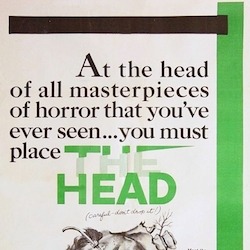
In the early 1960s, the overwhelming majority of European horror films imported to the United States were either British or Italian, the British films being easily understood and the Italian ones frequently pretending to be of British origin. Examples of French horror were rare (odd for a country whose cinema was so rooted in the fantastique), reaching an early apex with Georges Franju’s Eyes Without a Face (1960), which came to the US in a well-done English dub called The Horror Chamber of Dr. Faustus during the Halloween season of 1962.
Seldom paid much attention in retrospectives of this fertile period in continental horror cinema is a rare German example, Die Nackte und der Satan (“The Naked and the Devil,” 1959), which came to the US retitled The Head almost exactly one year before the arrival of the Franju masterpiece. Critics like to refer to The Head as “odd” and “atmospheric,” words that seem to disregard deeper consideration, never really coming to terms with it as anything but a sleazy shock trifle. However, it was in fact the product of a remarkable and rarely equaled concentration of accomplished patrimonies.
Consider this: The Head starred the great Swiss actor Michel Simon, renowned for his roles in Jean Renoir’s La Chienne and Boudu Saved From Drowning; it was directed by the Russian-born Victor Trivas, returning to his adopted homeland for the first time since directing Niemandsland (1932, aka No Man’s Land or Hell On Earth), a potent anti-war statement that was all but obliterated off the face of the earth by the Nazis when he fled the country, and who furthermore had written the story upon which Orson Welles’ The Stranger (1946) was based; it was photographed by Georg Krause, whose numerous international credits include Stanley Kubrick’s Paths of Glory (1957); its sets were designed by Hermann Warm, the genius responsible for such German Expressionist masterpieces as Robert Weine’s The Cabinet of Dr. Caligari (1919), Fritz Lang’s Destiny (1921), as well as Carl Dreyer’s The Passion of Joan of Arc (1928) and Vampyr (1932), and its score is a wild patchwork of library tracks by Willy Mattes, the Erwin Lehn Orchestra, and a group of avant garde musicians known as Lasry-Baschet, who would subsequently lend their eerie, ethereal music to Jean Cocteau’s The Testament of Orpheus (1960). If all this were not enough, The Head was also filmed at the Munich studios of Arnold Richter, the co-founder of the Arri Group, innovators of the famous Arriflex cameras and lenses.
Though made after the 1957 horror breakthroughs made in Britain and Italy (Terence Fisher’s The Curse of Frankenstein, and I vampiri, co-directed by Riccardo Freda and Mario Bava), The Head represented a virtual revolutionary act in postwar Germany, where horror was then considered a genre to avoid. The project was proposed to Trivas by a young film producer named Wolfgang C. Hartwig, head of Munich’s Rapid-Film, whose claim to fame was initiating a niche of exploitation cinema known as Sittenfilme – literally “moral movies” – which, like many American exploitation films of the 1930s, maintained a higher, judgmental moral tone while telling the stories of people who slipped into lives of vice (prostitution, blackmail, drug addiction), their sordid experiences always leading them to a happy or at least bittersweet outcome. Though it goes quite a bit further than either Britain or Italy had yet gone in terms of sexualizing horror, The Head nevertheless checked all the boxes required for Sittenfilme and was undertaken by Hartwig in early 1959 as Rapid-Film’s most prestigious production to date.
After the main titles are spelled out over an undulating nocturnal fog, the story begins with a lurker’s shadow passing along outside the gated property of Prof. Dr. Abel. With its round head and wide-brimmed hat, it looks like the planet Saturn from the neck up. When this marauder pauses to pay some gentle attention to a passing tortoise, we get our first look at the film’s real star - Horst Frank, just thirty at the time, his clammy asexual aura topped off with prematurely graying hair and large triangular eyebrows that seem carried over from the days of German Expressionism. More bizarre still, he later gives his name as Dr. Ood, whose explanation is still more bizarre: at the age of three months old, he was orphaned, the sole survivor of a cataclysmic shipwreck .
“That was the name of the wrecked ship,” he explains. “S.S. Ood.”
The ambiguous Ood takes cover as another late night visitor comes calling: a hunchbacked woman wearing a nurse’s habit as outsized as an oxygen tent. This is Sister Irene Sanders (the screen debut of Karin Kernke, later seen in the Edgar Wallace krimi The Terrible People, 1960). Though Irene cuts a figure as ambiguous and unusual as any Franju ever filmed, she owes her greatest debt to Jane Adams’ hunchbacked Nina in Erle C. Kenton’s House of Dracula (1945). As with Nina, Irene lives in the hope that her deformity can be eradicated by the skill of a brilliant surgeon.
When Irene leaves after meeting with Dr. Abel, Ood presents himself with the written recommendation of a colleague he previously, supposedly, assisted. A burly old walrus of a man, Abel (Michel Simon) already has two younger associates, Dr. Walter Burke (Kurt Müller-Graf, “a first class surgeon”) and the handsome, muscular Burt Jaeger (Helmut Schmid), who hasn’t been quite the same since an unexplained brain operation. Both associates share a creative streak; Burke is also “an excellent architect, [who] designed this house,” while Jaeger “designed my special operating table; it allows me to work without assistants.” (So why does he have two of them? With names that sound the same, no less!) Given the high caliber of Hermann Warm’s talent as a production designer, Burke and Burt together are every bit as skilled in architecture as was Boris Karloff’s Hjalmar Poelzig in Edgar G. Ulmer’s The Black Cat (1934). The main floor of Abel’s sprawling house is dominated by a vast spiral stairwell, striking low-backed furniture, a mobile of dancing palette shapes, and an overpowering wall reproducing Leonardo da Vinci’s “The Virtuvian Man.” Down in the lab, Burt’s robotic surgical assistant looks as if it might have been conceived by the brain responsible for the Sadean mind control device in Jess Franco’s The Diabolical Dr. Z (1965) - a film that, along with Franco’s earlier The Awful Dr. Orlof (1962), seems considerably more indebted to Trivas on renewed acquaintance than to Franju. The film was shot in black-and-white and at no point inside Abel’s abode do the silvery, ivory surfaces admit even the possibility of pigment.
Adding to its effect, the music heard whenever the film cuts back to Abel’s place is anything but homey. It consists of a single, sustained electric keyboard chord played in a nightmarish loop that seems to chill and vibrate, its predictable arc punctuated now and again with icy spikes of cornet. Though I don’t recall reading any extensive discussion of the film’s music, The Head represents what is surely the most important advance in electronic music in the wake of Louis & Bebe Barron’s work on Forbidden Planet (1956). Though the film’s music credits list bandleader Willy Mattes, Jacques Lasry and the Edwin Lehr Orchestra with its music, the most important musical credit is displaced. Further down the screen is the unexplained “Sound Structure, Lasry-Baschet.”
Lasry-Baschet was a musical combination of two partnerships – that of brothers Francois and Bernard Baschet, and the husband-and-wife team of Jacques and Yvonne Lasry. The two brothers were musicians who played astonishing instruments of their own invention, like the Crystal Baschet (played with moistened fingers on glass rods), the Aluminum Piano, the Inflatable Guitar, the Rotating Whistler, and the Polytonal Percussion. The Lasry couple, originally a pianist and organist, began performing with the Baschets on their unique devices in the mid 1950s. Some of the music they produced during this period is collected on the albums Sonata Exotique (credited to Structures for Sound, covering the years 1957-1959) and Structures For Sound (credited to the Baschet Brothers alone, 1963), a vinyl release by the Museum of Modern Art. These and other recorded works can be found on YouTube, as well; they are deeply moving ambient journeys but I cannot say with certainty that they include any of the music from The Head. That said, the music they do collect is very much in its macabre character and would have also fit very well into Last Year At Marienbad (1961) or any of Franju’s remarkable films.
When Ood meets with Abel and expresses his keen interest in experimental research, the good doctor mentions that he has had success copying “the recent Russian surgery” that succeeded in keeping the severed head of a dog alive – however, his moral code prevents him from taking such experimentation still further. After leaving Abel, Ood finds his way to the Tam-Tam Club, a nightspot where a life-sized placard promotes the nightly performances of “Tam-Tam Super Sex Star Lilly.” This visit initiates a parallel storyline involving Lilly (Christiane Maybach), who supplements her striptease work as an artist’s model, and is the particular muse of the brooding Paul Lerner (Dieter Eppler), a man of only artistic ambition, much to the annoyance of his father, a prominent judge who wants him to study law. Maybach reportedly won her role the day before she began filming. According to news reports of the day, the actress originally cast – the voluptuous redhead Kai Fischer – had signed on to play the part, after which producer Hartwig decided she must also appear nude. Fisher sued Hartwig for breach of contract in March 1959 and he was sentenced to pay out a compensatory fee of DM 4,000 – in currency today, the equivalent of about $35,000. As it happens, Christiane Maybach doesn’t appear nude in the film’s final cut either.
The English version of The Head opens with a credit sequence played out over a shot of the full moon taken from near the climax of the picture. Unusually, the German Die Nackte und der Satan doesn’t present its title onscreen until Lilly is ready to go on. It’s superimposed with inverted commas on pleated velvet curtains that suddenly rise, revealing a stage adorned by a single suit of armor. Lilly dances out, stage right, garbed in a medieval conical hat, scarves, a bikini and a black mask, performing her dance of the seven veils around the impervious man of metal. She only strips down to her bikini but her dance ends with her in the arms of the armor we assumed empty, which tightly embraces her as its visor pops open, revealing a man’s face wearing skull makeup. Lilly screams, the lights go out, and the house goes wild with applause – a veritable blueprint for the striptease of Estella Blain’s Miss Death in Franco’s The Diabolical Dr. Z (1965).
The music heard during the film’s Tam-Tam Club sequences was recorded by the Erwin Lehn Orchestra, evidently with Jacques Lasry on piano, though its emphasis on brass is its outstanding characteristic. Erwin Lehn was a German jazz musician and composer who established the first German Big Band Orchestra for South German Radio. Brass was a major component of his sound – indeed, he made pop instrumental recordings credited to The Erwin Lehn Beat-Brass. You can find their album Beat Flames on YouTube, as well.
Backstage, the beautiful Lilly is a nagging brat, drinking and flirting with patrons while berating Paul’s lax ambitions on the side. Dieter Eppler, a frequent player in the Edgar Wallace krimis and also the lead bloodsucker in Roberto Mauri’s Italian Slaughter of the Vampires (1964), makes for inspired casting; he looks like a beefier, if less dynamic Kirk Douglas at a time when Vincente Minnelli’s Lust For Life (1956) would have still been in the minds of audiences.
Once Ood joins the payroll, Dr. Abel confesses that his heart is failing rapidly. The only means of saving himself and perpetuating his brilliant research is by doing the impossible – that is, transplanting the heart from a donor’s body into his own, which he insists is possible given his innovation of “Serum X.” What Abel could not foresee was that his own body would die during the procedure. Ood tells Burke that the only way to save Abel’s genius is to keep his head artificially alive, which his associate rejects uncatagorically, pushing Ood over the edge into murder. Then Ood proceeds with the operation, working solo with Jaeger’s robo-assistant passing along surgical tools as he needs them. When Abel revives, Ood breaks his news of the procedure gently by holding up a mirror and exclaiming that he’d had “one last chance – to perform the dog operation on your head!” Abel screams in revulsion of what he has become. The conciliatory Ood gently cautions him, “Too much emotion can be extremely dangerous now.”
The severed head apparatus is a simple yet ingenious effect, shot entirely in-camera and credited to Theo Nischwitz. It utilizes what is generally known as a Schufftan shot, a technique made famous by spfx shots achieved by Eugen Schufftan for Fritz Lang’s Metropolis (1926). Essentially, Michel Simon was seated behind a pane of mirrored glass with all the apparatus seen from his neck up. The silvering on the reverse portion of the mirror was scraped away, allowing the camera to see through to Simon and the apparatus while reflecting the apparatus arrayed below his neck, in position for the camera to capture its reflection simultaneously. In at least one promotional photo issued for the film, Simon’s shoulders can be transparently glimpsed where they should not be.
Irene returns to meet with Dr. Abel and is surprised to find new employee Ood now alone and ruling the roost. When he offers to perform her operation himself, she instinctively distrusts and fears him – but is reassured after hearing Abel’s disembodied voice on the house’s sophisticated intercom.
After the killing and burial of Burke, whose body Bert Jaeger later finds thanks to the barking of Dr. Abel’s kenneled hounds (a detail that one imagines inspired Franju’s use of a kennel in Eyes Without a Face), the film introduces the dull but nevertheless compulsory police investigation, headed by Paul Dahlke as Police Commissioner Sturm. Sagging interest is buoyed by a surprise twist: when Dr. Ood returns to the Tam-Tam Club and asks the perpetually pissy Lilly to dance, he refers to her in passing as “Stella,” prompting her to recognize him as “Dr. Brandt” (the scorecard now reads Burke, Bert and Brandt), who has inside knowledge pertaining to her poisoning of her husband! Given that his earlier writing projects include Orson Welles’ The Stranger and the bizarre Mexican-made Buster Keaton item Boom In the Moon (also 1946), in which an innocent shipwrecked sailor is rescued from his castaway existence only to find himself confused with a serial killer, Victor Trivas would seem partial to characters who live double lives.
Though Ood/Brandt’s aura is basically asexual through the first half of the film, the second half requires him to take an earthier interest in the female bodies finding their way into his hands. He takes the already tipsy Lilly/Stella home for a drink and some mischief.
“What’s in the glass?”
“Drink it and find out.”
“I hope it’s not poisoned.”
“That’s not my specialty, is it?”
Lilly/Stella becomes the necessary auto parts for Irene’s pending operation. In a nicely done montage, the film dissolves from Lilly’s unconscious body to a glint of light off the edge of Ood’s poised scalpel. It cuts to a curt zoom into Abel’s scream at being forced to watch a procedure he abhors, then a dissolve from his mouth to the spinning dials of a wall clock, followed by some time-lapse photography of cumulous clouds unfurling from an open sky, before Irene awakens in her recovery room with a decorative choker around her throat. She is able to gain her feet and covers her nude body in a sheet. She finds Ood lounging in Abel’s old office. He walks toward her as the sheet tumbles off her bare shoulders.
“How do you feel?” he asks.
“Well, I… I’ve a strange kind of feeling, as if my whole body were changed, as if my body didn’t want to do what I wished.”
Therefore, Ood has not only taken away her deformity but her responsibility for her actions, as well. Though she has never smoked before, she craves a cigarette. As Ood lights one for her, her wrap falls further, undraping her entire bare back and thus exposing a birthmark on her left shoulder blade that becomes an important plot point. Ood confesses she’s been unconscious for 117 days, during which time he has passed the time by performing numerous enhancing procedures on her inert body. When he compliments her superb figure, she self-consciously covers her legs and recoils from him.
“Why run from everything you desire?” he asks. “You can’t run from yourself.”
He draws Irene into a surprising deep kiss, which – to her own apparent horror - she returns. Ood then tries to take things further but she refuses. After a brief (and surprisingly curtailed) attempt at abduction, he releases Irene, who dresses in a black cocktail dress and heels left behind by Lilly and returns to the humble apartment she kept in her previous life, where a full-length mirror stands covered. In a scene considerably shortened by the US version, she rips the cover away in a movement evocative of a symbolic self-rape, and glories in her new reflection. The score turns torrid, brassy, and trashy as she admires her shapely terrain, fondling the curves of her breasts and hips in a prelude to a gratifying personal striptease. She then goes to her bed, where she tries on an old pair of slippers; she laughs and kicks them away, delighted at how small her feet now are. When she wakes the next morning, she finds a pamphlet for the Tam-Tam Club in Lilly’s old purse, which leads her body back to its former place of employ. When she arrives, another striptease artist is working onstage with a bed. This performance appears to burlesque Irene’s own motions from the night before; she kicks off one of her shoes as Irene had done.
From the moment she walks into the club, still wearing Lilly’s clinging black dress, Irene evokes a black widow, a kind of Alraune – the femme fatale of Hanns Heinz Ewers’ novel, filmed in 1930 with Brigitte Helm and in 1952 by Hildegarde Knef. Like Alraune, she’s the beautiful creation of a mad scientist’s laboratory, but unnatural. In this case, she’s not really a soulless artificial being out to destroy men; on the contrary, she is soulful, starving for some insight into who she is, what she is. In this way, she particularly foreshadows Christina, the schizophrenic subject of Baron Frankenstein’s “soul transplant” played by Susan Denberg in Terence Fisher’s Frankenstein Created Woman (1966).
She quickly attracts Paul’s artist’s eye, just as the now-topless dancer onstage swirls into a swoon on a prop bed – unconsciously mimicking Lilly at the only time she ever saw her, when Ood gave her a sneak peek at the unconscious woman on his living room couch. She asks about Lilly, whom Paul mentions has been dead now for three months, her body (in fact, Irene’s former body) found maimed beyond recognition on some railroad tracks. He asks her to dance, but Irene refuses, as she has never danced, never been asked to dance before. But he insists and they both discover that she can: “You must be a born dancer!”
Beautiful and irresponsible, she allows herself to follow Paul back to his studio, where drawings of Lilly are displayed. Paul asks to draw her, and when she turns her back to bare her shoulders, he recognizes Lilly’s beauty mark. She flees from the apartment and confronts the unflappable Ood.
“You must have grafted her skin on my body!”
In the movie’s most hilarious line, he fires back, “You have a poor imagination!”
She rejects his true account of the procedure and demands to see Dr. Abel, so Ood takes her down to the lab for a personal confirmation from the man himself. Ashamed to be seen this way, Abel pleads with Irene to disconnect him from the apparatus. She is driven away before she can accomplish this, and tries to shut away the horror of the truth that’s been revealed by losing herself in her new relationship with Paul – but the old question arises: Does he love her for her body or her mind? There seems to be one answer when he first kisses her, and another and his lips venture further down her front.
I should leave some things to be discovered by your own viewing of the film, but it demands to be mentioned that Irene – the triumphant climax of Ood’s genius, so to speak – actually survives at the end of the film to live happily ever after. Think about this. This is something that would have been considered unacceptable in any of Hammer’s Frankenstein films at the time – indeed, through the following decade. So, although Ood is ultimately destroyed (you’ll need to see it to find out how), the mad science he propounds is actually borne out. It’s left up to Paul and Irene, as they walk off together toward a new tomorrow, how they will manage to live with the fact that the two of them are in fact a ménage à trois. Will they keep the details of her existence a secret? Will medical science remain ignorant? Should they ever have any, what will they tell their kids?
The Head was hardly the first word on severed heads in horror entertainment. In his own admiring coverage of the film, Euro Gothic author Jonathan Rigby likens the film to the story of Rene Berton’s 1928 Grand Guignol play L’Homme qui à tue la mort (“The Man Who Killed Death”): “There, Professor Fargus revived the guillotined head of a supposed murderer and the prosecutor lost his mind when the head continued to plead his innocence.” Earlier such films would include Universal’s Inner Sanctum thriller Strange Confession (1945, in which a never-seen severed head is a main plot point), The Man Without a Body (1957) and The Thing That Couldn’t Die (1958), the latter two proving that the concept was actually trending at the time The Head was made. Also parenthetically relevant would be She Demons (1958), which involves the nasty experiments of a renegade Nazi scientist living on an uncharted tropical island, who removes the “beauty glands” of native girls to periodically restore his wife’s good looks. Though The Head wasn’t the first of its kind, many of the traits it introduced would surface in similar films that followed – not only in Franju’s Eyes Without A Face or Franco’s The Awful Dr. Orlof and The Diabolical Dr. Z, but also in Anton Giulio Majano’s Italian Atom Age Vampire (1960), Chano Urueta’s The Living Head (1963), and most conspicuously in Joseph Green’s The Brain That Wouldn’t Die, not released until 1962 though filmed in 1959, some six months after The Head.
It must be mentioned that the film’s unusual quality did not go unrecognized by its American distributor. Trans-Lux Distributing Corporation advertised the film that took a most unusual approach to selling a horror picture. The ads did not promise blood, or that your companion would jump into your lap, or shock after shock after shock. Instead, Trans-Lux promised that “At The Head of All Masterpieces of Horror [my italics] That You’ve Ever Seen… You Must Place… The Head.”
Of course it was an overstatement, but the size of its overstatement would seem to have narrowed appreciably with time.
So why has The Head, with its rich pooling of so much European talent, been so neglected?
A key reason may be that horror fans like their actors and directors to maintain a certain consistency, a certain fidelity to the genre. Horst Frank (who died in 1999) would appear in other horror films, but never again played a lead; he pursued his career as a character actor and singer, maintaining a career on the stage and keeping close to home, never making films off the continent or appearing in productions originating from England or America. After The Head, Victor Trivas made no more horror films. The other four features he made had been produced a quarter century earlier and the majority are impossible to see in English countries. Those who remembered him for Niemandsland would have considered The Head an embarrassment, an unfortunate last act. It wasn’t quite a last act, however. The following year, he returned to America, where he sold his final script to the Warner Bros. television series The Roaring 20s, starring Dorothy Provine. Though the show avoided fantasy subjects, it was a voodoo-themed episode entitled “The Fifth Pin,” directed by Robert Spaar and televised during the series’ first season on April 8, 1961. The guest stars included John Dehner, Rex Reason, Patricia O’Neal and, surprisingly, beloved Roger Corman repertory player Dick Miller. Trivas died in New York City in 1970, at the age of 73.
The English version of The Head is considered to be a public domain title and has been available from Alpha Video, Sinister Cinema and other PD sources. This version was modestly recut to create a new main title sequence and to remove certain erotic elements unwelcome to its target audience in 1961. Happily, a hybrid edition – which, in a fitting fate, grafts the English dub onto the original uncut version from Germany – was recently made available for viewing on YouTube.
In the immediate wake of The Head, producer Wolf C. Hartwig pushed another erotic horror film into production, Ein Töter hing in Netz (“A Corpse Hangs in the Web,” 1960). Scripted and directed by Fritz Böttger, the film (Böttger’s last as a director) was first released in America as It’s Hot In Paradise (1962), sold as a girlie picture with absolutely no indication of its horror content. It was later reissued in 1965 as Horrors of Spider Island (1965). Under any of its titles, the film is notably lacking all of the artistic and aesthetic pedigree that made its predecessor so special and, indeed, influential.
Sixty years further on, The Head warrants fuller recognition as a spearhead of that magic moment on the threshold of the 1960s when so-called “art cinema” began to be fused with so-called “trash cinema,” leading to a broader, wilder, more adult fantastique.
by Tim Lucas
[1] Victor Trivas’ Niemandsland may be viewed online at https://www.youtube.com/watch?v=S-4XhNMWoyw
[2] Rapid-Film’s later successes would include the German film that was subsequently converted into Francis Ford Coppola’s directorial debut (The Bellboy and the Playgirls, 1962), Ernst Hofbauer’s Schoolgirl Report film series (1970-80), and Sam Peckinpah’s Cross of Iron (1977).
[3] You can see Lasry-Baschet perform and be interviewed in a French newsreel from January 1961 on YouTube: https://www.youtube.com/watch?v=awaFd6gArLg&t=46s.
[4] Well, as “recent” as 1940, when footage of a supposedly successful Soviet resuscitation of a dog’s severed head was included in the grisly 20m documentary Experiments In the Revival of Organisms. The operation was performed (and repeated) by Doctors Sergei Brukhonenko and Boris Levinskovsky, making use of their “autojektor,” an artificial heart/lung machine not unlike the contraption seen in The Head. A close look at Experiments reveals that it really shows nothing that could not have been faked through means of special effects. (When George Bernard Shaw learned of the Soviet experiment, he’s said to have remarked, “"I am tempted to have my own head cut off so that I can continue to dictate plays and books without being bothered by illness, without having to dress and undress, without having to eat, without having anything else to do other than to produce masterpieces of dramatic art and literature.") Experiments In The Revival of Organisms has been uploaded to YouTube: https://www.youtube.com/watch?v=ap1co5ZZHYE.
[5] Rigby, Jonathan. Euro Horror: Classics of Continental Horror Cinema (London: Signum Books, 2017), p. 79.
[6] Joseph Green also worked in motion picture distribution and later formed Joseph Green Pictures, which specialized in spicy imported pictures, some from Germany. It’s possible that he saw the Trivas picture when it was still seeking distribution in the States. When Ostalgica Film released The Head on DVD in Germany under its Belgian reissue title Des Satans nackte Sklavin (“The Devil’s Naked Slave”), the disc included The Brain That Wouldn’t Die as a bonus co-feature.
[7] A fine quality homemade experiment, it runs 91 minutes 47 seconds and can be found at: The Head (Die Nackte und der Satan) 1959 Sci-Fi / Horror HQ version!.
6 notes
·
View notes
Text
MMA and MAMA 2019 Theory

welcome back loves to another theory with me!!! so it really has been a while since I have done any theory, mainly because homegirl is stuck in uni and is dying in it with useless group mates but anyway, i finally got back to doing another ever since I watched the MMA and MAMA 2019 ones and wow, there is so much to unpack.
also, a huge congratulations to our 4-Daesang winners aka BTS who not only swept all of the Daesangs in MAMA but MMA in 2019. honestly, still shocking considering how we all know how the industry is like lmao. but anyway, let’s begin.
if you want to support my ko-fi, feel free to do so
⇝ theory masterlist
theory: if I were to compare their MMA and MAMA VCRs, I believe there’s more to analyse for the MAMA ones because of the length and also because MMA’s one, I believe the hints are more centred around the individual performances and set ups.
So starting off with MMA, looking at the VCR. I am putting it out there is literally I Need U all over again. The camera pans out to Namjoon, Seokjin, Jimin, Yoongi, Hoseok, Taehyung and lastly Jungkook. For some reason, this has me thinking of the HYYH the Notes pairings that I keep mentioning throughout the theories about them. (read here) These were similar to that of Wings, but I guess Namjoon and Seokjin’s pairing was the one of the BST JP and instead of Taehyung being that Omelas boy, though some may say it’s Jungkook (because of how he is the youngest and he is affected by all and in this theory, Taehyung is the trigger), maybe could explain why the camera pans out to Jungkook last.
do you not think that the setting reminds me of of HYYH? the whole light, couches thing etc


But moving on, if you see at 0:49, you see the shadows of the boys walking behind them at the back but somehow settling behind each respective member which I find extremely creepy and somehow reinforces that the next instalment is Shadow but at 1:05 it shows the lighter.

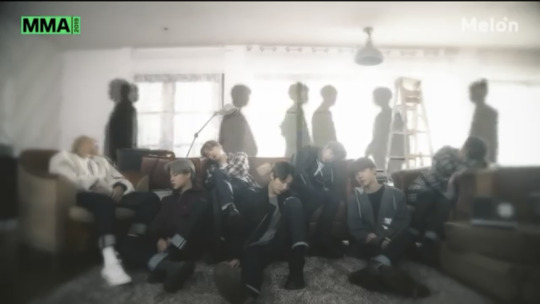



One could recall it being one of Yoongi’s key charcateristics as he smokes and across the HYYH the Reel, or in the I Need U MV, but at the same time, common with Jungkook’s Little Matchstick Girl story and of course not to forget, just like here In the VCR, how Namjoon worked at the gas station and somehow dropped the lollipop on a cash but it caught fire etc which somehow related to his death in one of the theories.



We had Namjoon’s strong Persona intro and you could see at the back, the words ‘shadow’, ‘ego’, ‘what am I to you’ etc, scribbled behind though repeatedly. The words ‘shadow’ and ‘ego’ should be signifying the next two releases for bangtan’s map of the soul trilogy series based on jung’s map of the soul book which focused heavily on persona, shadow and ego along with many other theorists who believed that the other two instalments of the series to be called ‘shadow’ and ‘ego’. Other identified scribbles include ‘Im Not What’ ‘Happen to Me’, ‘No More Dream’, ‘Who are you, Who Am I’, ‘Dream, Love, Happiness’ etc. But anyway, after the Persona stage, the intro of ‘What am I to you’ is played and I swear it was Dark and Wild all over again before it went on to ‘Boy in Luv’ and parallelly, they moved on to ‘Boy With Luv’ such a stark contrast but shows their diversity. Afterwards, a short VCR with the truth untold instrumentals playing in the background before somehow they decided to crush my heart and played mikrokosmos and hearing Namjoon’s words is making me feel things.
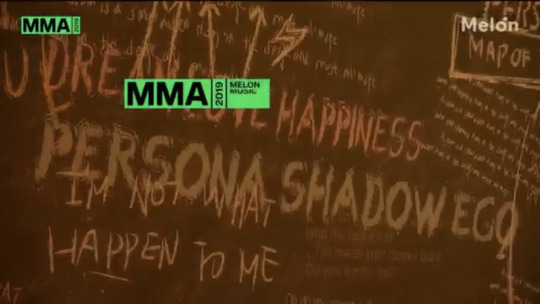

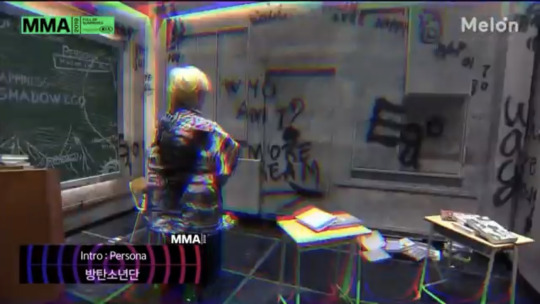
Anyway, moving on, after that stage ended, the VCR played again with how Jungkook woke up and this idea of trying to figure out who he is, as he watches various screens of himself across the years with eg Save Me, No More Dream , fake love playing, danger, the lines ‘I’m still looking for who I used to be, who I am now., before Namjoon hugs him (note the Wings pairing) before the rest comes together in this formation. Yoongi, Jimin, Namjoon, Jungkook, Jin, Hoseok and Taehyung; Taehyung was the last one.





similar to this

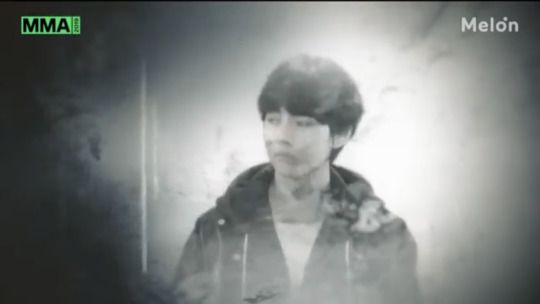


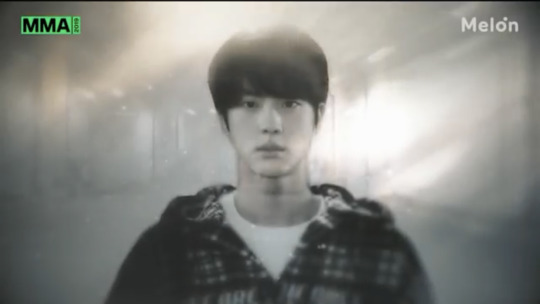
this reminds me of this open room in fake love as well for Seokjin.
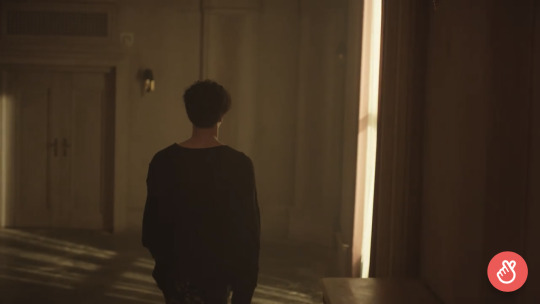
Then somehow in the midst of this, they show how the boys ‘appearing’, Jungkook forming from the clouds, Namjoon from the leaves, Jimin from smoke, Hoseok from the ‘fake love coloured setup’, Taehyung from ‘the spray can’ (he even had the sound effect of the spray can, Yoongi from fire and Jin from what seems to be in a room full of mirrors..? it seems oddly familiar but I can’t pinpoint as to where this is from. And yet after all this, as they all gaze into the screens, somehow only Taehyung is the one looking unsettled, at most a really really small smile, not sure if it was on purpose or just coincidental,


Jungkook’s ment cntinues ‘who I will be in the future’. At 18L47, it focused on Jungkok’s eyes to expand and show the milky way galaxy. Then it moved on to the start of the Dionysus stage but somehow we are surprised to find 7 individual stages.
But moving on, apart form bangtan’s group stages, there is a need to pay close attention to the individual stages of each member. i bet bangtan’s main goal for these year end shows is to somehow showcase their humble beginnings with their underrated songs hence why they performed n.o., we are bulletproof pt.2 and boy in luv at both year end shows across, asides from promoting their later songs such as mikrokosmos, or boy with luv.
Notice the transitions among each individual stages. It’s literally their whole discography, more focus was on here rather than showing a vcr ,though the vcr they played was of the I need u feels and you cannot tell me otherwise once I placed the references here. One for their similar outfits and the I need u sofa cut scene in the MV with this MMA VCR. Not to mention it kind of reminds me of the HYH Epilogue VCR when they were taking a family portrait.
Anyway, the individual stages started off with Taehyung, with no more dream but the level of sophistication and performance was amazing but also quite heavy considering the no. of back dancers yet somehow they’re in this gladiator outfit/warrior outfits with the skirts. Also, the 4 people hanging from the hoops at the top, it casually reminded of te Olympics but that’s just my opinion and in no relation to this. Do take note of how altered the sound is to sound more like it’s fit for a battle scene, those loud hits of the drums etc and the resounding ‘la la la’ a sa battle cry or possibly an anthem. Note the scenes at the back to be mostly of the Greek/Roman kind of architecture.


Next, it transitioned to Seokjin whose song was Danger and interestingly, this kind of Greek/Roman concept continued on, as now they leveraged more on Seokjin’s looks for this stage with lesser dancing in comparison and made him stand on top of this makeshift Trojan horse. Take note of how the music for Danger instead of the hard hitting kind of song, it becomes a little bit more majestic, royal even but with power. Though Seokjin relatively dances way lesser, his stage presence and looks was enough to dominate the stage, like my god, just look at him??? Also, the back up dancers outfits seem to continue on with this. And when he really took the reins and let it whip to have this yellow horse run as though he whipped it, it ran across the screens (satisfying really), it changed to something more melodic.
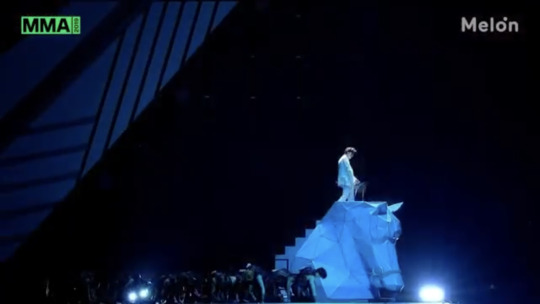


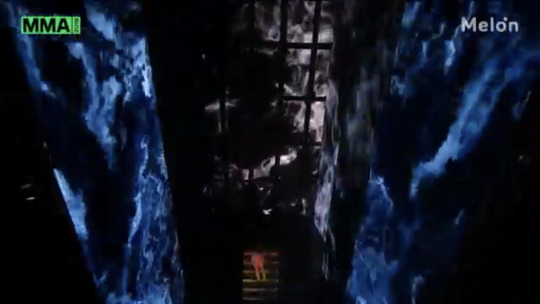

Here, you hear the acoustic version of I Need U which was actually played before unlike the other 2 versions of the songs (and actually the rest of the members’ as well), it was played at one of the year end show sin 2015 in which Yoongi actually played the piano and Jungkook was dancing, they were promoting Run at that time. But oh how this is so befitting for Jimin and his contemporary movies, it’s really so graceful, ethereal and wow. But they made this I Need U version more melodramatic with the use of strings such as violins and cello, listen to that rendition and melodies as well as the triangle I think (I literally forgot the name of that instrument) but then it moved on to Fire with Yoongi.
Honestly, I don’t think anyone knew it was Fire until it started because of the really really hard hitting bass that really became outright rock and loud cries of ‘La, La, La’ and what sounded like ‘Jin’ although I am pretty sure it’s not but you get my point here. Honestly, thought the fire in the screens looked like a dead giveaway but with how hard the beat is hitting that became rock, it almost sounded like a mantra not to mention how loud and how great the drums sound here. Also note how Yoongi isn’t doing much, just minimal dance moves like a body roll.
I must say the transition from Yoongi to Jungkook is quite abrupt because of the sharp contrast in the transition between their stages; from rock to something more pop? It’s a bit hard to adjust to, also the version for Save Me is so so different but yet so nice, it’s much more synthesized here and the choreography is centred to how the beats are in the music. To think this was done by Jungkook as well.

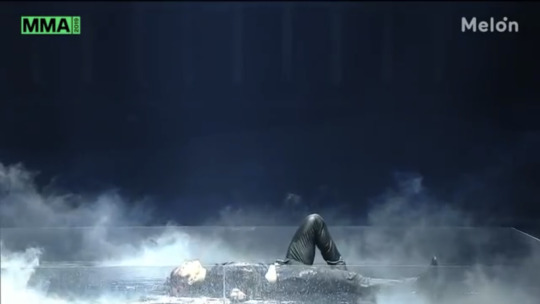
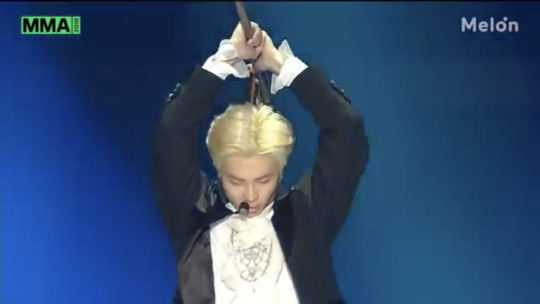
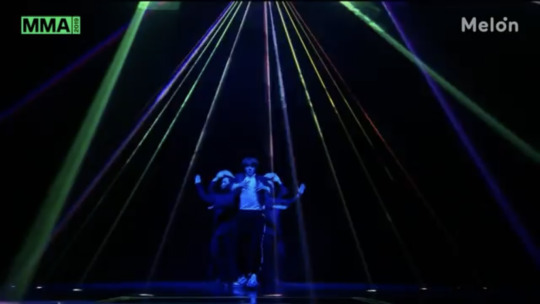
At 25:54, we are seeing 7 lights to represent 7 stars, which apparently, this constellation represents Corona Borealis. It represents the crown the Princess wore on her wedding day when she married Dionysus. (see where we are going with this). You could see that throughout all of the stages, an additional light to represent a star was added after each performance and at the end with Namjoon, the Corona Borealis was completed.

Now, going back to Hoseok’s part with Fake Love but a much more EDM version to showcase his popping and then finally, we have this version of Dionysus, but look at that intro with the chorus singing and it showcases Namjoon. Although he is walking, it reminds me when he changed his jacket in 2017 for another year-end performance as he walked across the stage but now it’s for the staff. Literally, Namjoon is not doing anything but walking, but look at his stage presence?????
And this was how Dionysus began but again with the 7 constellations, they really brought the 2 tiger balloons that they used at the concerts with them here at the MMA, with the foreign women throwing flowers which coincidentally was a Greek tradition.

Yet again, before they start their performance, we have the same guy sounding the horn. But now we have guys in fedora hats which I am still confused as to why they are there. Well I did some research and turns out the use of fedora hats originated from a popular Russian play but the word originated from the Greeks themselves.
The name Fedora is derived from the Greek word theodoros, which literally means "gift of God." -History of Fedora
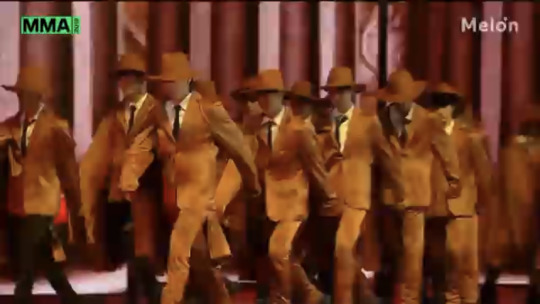


I will like to sidetrack now to talk about the guy in the veil. so someone speculated on Twitter about the use of the veil in Greek culture and so this is how i went down to do my research etc and reading a paper on it. I have highlighted the necessary parts.

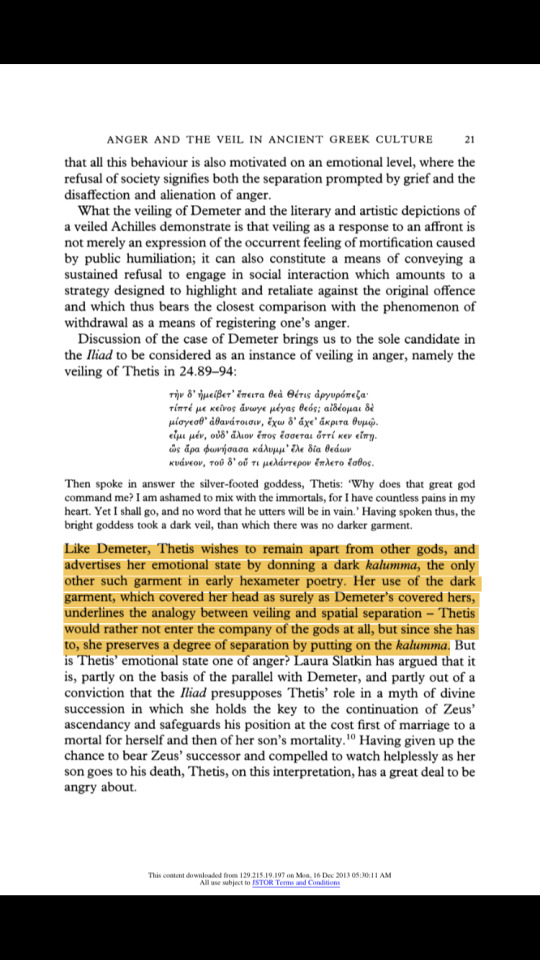



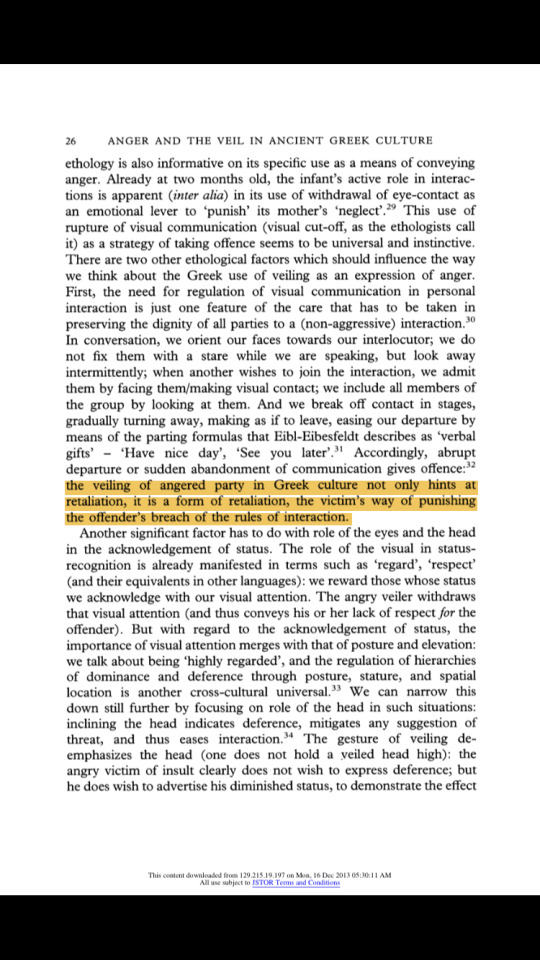
after reading this, one could say that the veil is a form of expression for anger. but mainly anger, then emotional pain and lastly grief. it can also be seen as ‘a form of retaliation, the victim’s way of punishing the offender’s breach of the rules of interaction’. you may consider seeing it as being petty, in a way of giving the silent treatment or just not giving one’s full attention but again, this goes deeper than on surface value. kinda interested to see how this would pan out in the future.
However, enough of the hat and veil talk and its history, now going back to the performance. They even brought out the horses so honestly tell me what is going on. So doing more research, I dug out some. The reason why I am focused on the symbolism of these things inn Greece is due to the consistent Greek culture that is being cultivated, perhaps prior to the Dionysus one but it seems to be well incorporated in the various stages as well such as the Trojan horse in Jin’s stage which was used to invade and win the war in Troy. But going back to the history of the horses, they symbolize wealth and status. The horse was often affiliated with heroes and Gods hence seeming to be far ‘important’ to the native Greeks. Not to mention the gladiators as well. Though gladiators were common with the Romans, the Greeks had them too but not as prevalent as the Romans. Interestingly, the Greeks refer them as ‘barbarians’.
For the Greeks, the gladiators were more of sacrifices to the Gods and those who emerged victorious during the Olympic games were blessed by Zeus and offered Zeus praise. In a way, if I were to put it in a different context, Zeus could be seen as a power play figure in terms of Big Brother (read 1984 theory here). Not entirely the same, but similarities are present.
What is the link of Dionysus in all of this? Well apart from the song of Dionysus by the boys, as well as inclusion of the iconic grapes for wine-making and thyrsus, I found something interesting that could explain the use of Dionysus in all of this.
As we all know, Dionysus was the god of wine, grape harvest and in some others fertility as well. He was known later on to be ‘androgynous youth’; not exactly a man but a ‘man-womanish’. With his long history, ‘Dionysus had crossed boundary between life and death, and he was often portrayed as the god who crossed the boundary between the civilized and uncivilized and the known and the unknown.’. Somehow this makes me think that perhaps Seokjin is Dionysus, the idea that he is the one conscious enough throughout the HYYH universe that time is rewinding itself back to the fateful day where one by one, the boys kill themselves and he is the one trying to save them all. Not to mention, I still think the theory still holds that somehow Seokjin could also be seen in purgatory where he tries to give them back their innocence through using the lilies (read I Need U JP theory here).
Interesting fact was that Dionysus was ‘born of fire and nursed by rain’. Opposites that link Yoongi and Jimin as well.
Based on here, apart from the fact that Dionysus was actually half mortal, he had the power to raise people from the dead, which was how he raised his mortal mother, Semele, from the dead.
Some others speculated about the whole Gods concept in which they claim BTS to represent of the 12 and basing it on their performance. This is what they came up with.
RM – Dionysus Jin – Athena Yoongi – Hephaestus Jimin – Artemis Taehyung – Apollo Hoseok – Zeus Jungkook – Poisedon
If we based it on this now, this could explain the certain dance breaks together here. Hoseok and Jungkook, Namjoon and Jin, Jimin and Taehyung then lastly Yoongi by himself. Yoongi is the only one being independent in a way. I guess also why they did the N.O. break was because they did not perform anything from that era (that + YNWA, BST, DNA and Answer) but then again, we are blessed by their whole discography.
so first of all, their VCR especially for MAMA was heavily reliant on time periods.
Basically, what was relayed in the video is as such. The calling; future.
It started with the damn hourglass again, when will it stop??

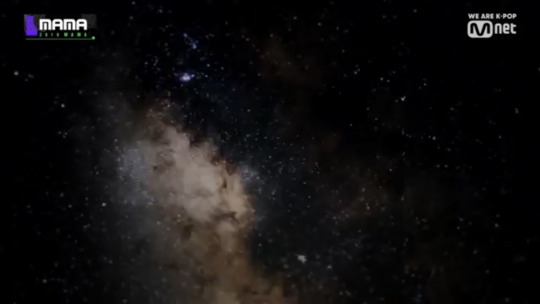
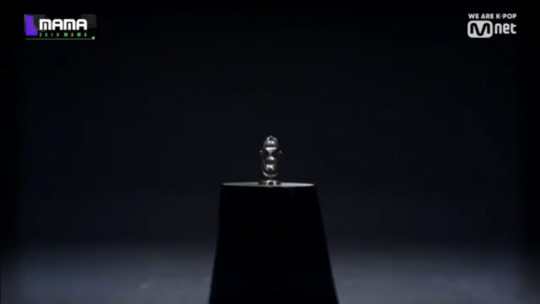

They showed in the VCR these 7 white-veiled guys who I assumed would be them and is them but is also a carry over from the MMA scene in which during Tae’s stage and before Jin’s one, you see the white veiled guy next to the horses.


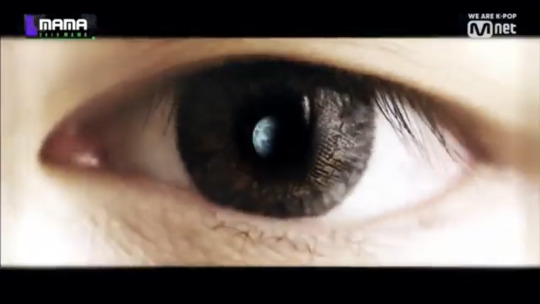
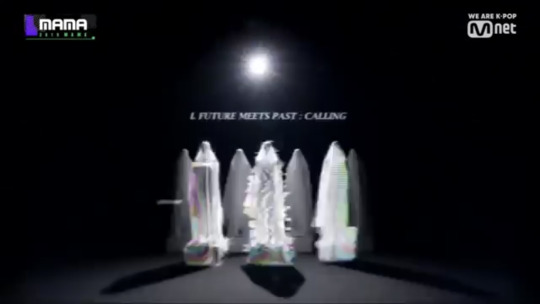
The VCR had very interesting transitions which reminded me of the Wings short stories with the various symbols, not to mention the fact it was heavily focused on Hoseok’s eyes which was similar to his short film of MAMA. The transition in and out of it. Past meets future. I will bet that this was Hoseok’s eye just by seeing the shape and also here’s a reference from MAMA.



The VCR had very interesting transitions and glitches, literally throwback to the 2017 MAMA VCR. That barren one person scene reminded me of DNA.
DNA
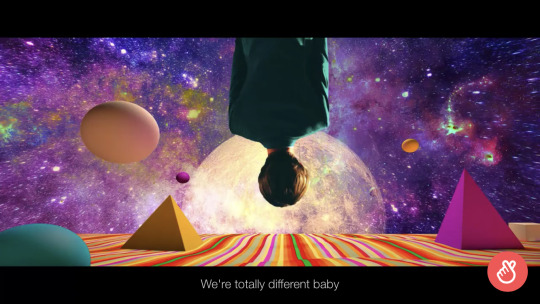
MAMA VCR Screenshots




The last picture reminds me a bit of BST, like the part where Yoongi plays the organ. Here’s a reference photo.
More VCR screenshots just giving me the vibes of BST.
MAMA VCR Screenshots
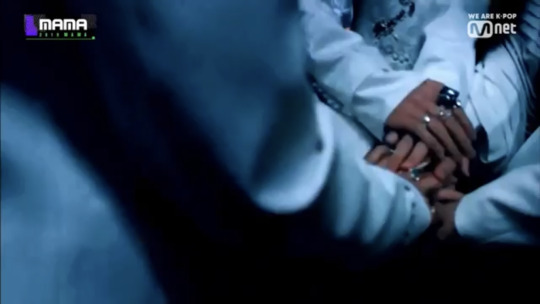

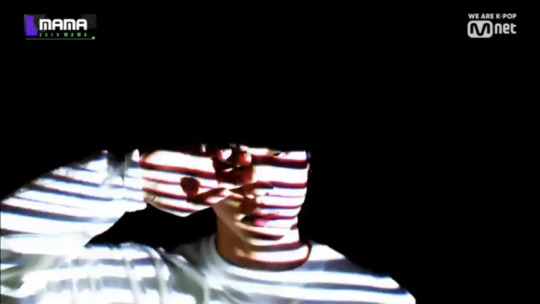

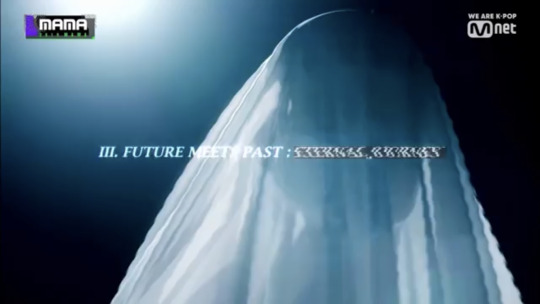



BST MV screenshots
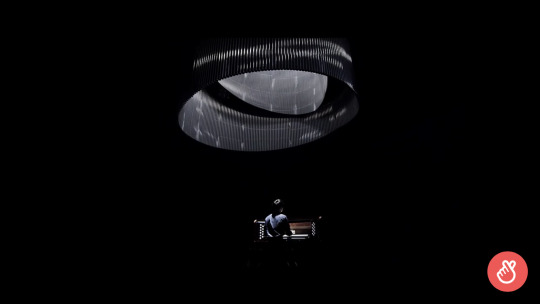


Then the VCR stopped and BTS performed N.O. a really throwback song followed by We are Bulletproof Pt. 2. Notice how the VCR changed to intro them performing N.O. the whole scratches reminds me of MAMA for some reason, MAMA being Hoseok’s short film. Honestly, I thought it was great because they showed everyone that this was their origins to their success and they never forgot about it despite being how big they are and how they got their popularity through other genres and not the original Hip-Hop kind that they were promoting back then. They had the iconic hands again.
After this, VCR continued to show the past meets the present. They showed the boys during backstage of the concert, during it and think about it as the way it was edited to be like Burn the Stage and Bring the Soul movies. Those kinds. They showed the Mnet debut showcase. ‘We doubted ourselves all the time, we tried to overcome the fear we encountered. They showed their first win on the music show with ‘I Need U’. ‘Dreams are our realities from now on.’ This was said by Namjoon. Now showing all of the Daesangs that they achieved throughout the years starting with 2016 and how Yoongi cried. ‘We are no longer sad or pain’.




Past meets present: World.
The Vcr showed the 7-veiled guys and this was their arrangement, Tae, Suga, Jin, Jungkook, Namjoon, Jimin and Hoseok.


Do you not think this positioning of the veiled guys remind you of the fake love cloak stands. So from a clothes stand to a veiled person.
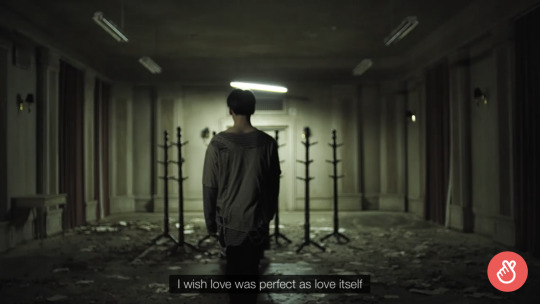
They then performed Boy with Luv and Mikrokosmos. During Mikrokosmos, they had stairs shown behind them before they pan out to the VCR again that started off with an hourglass. For some reason those veiled guys appear again and to be exact there are 7 of them. Not to mention the hourglass glitching giving me the BST JP. Vibes. When the phrase ‘all our time’ came out, they really had some collisions much like DNA.
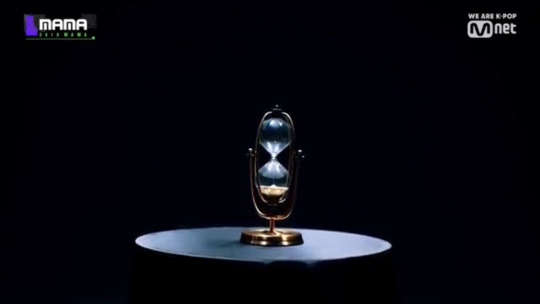
cue the fake love MV with the smeraldo flower.

Look at the stairs behind them. I went to check and do some research etc. Based on this, the ladder is most commonly known to be the connection between heaven and earth. Notice how it’s heaven and not hell. There is no mention of the underworld or hell. But if we were to look at this, I did some more research about the symbolism of stairs in Greek mythology.
A lot of the references is that the ladders/stairs are to be the connector between heaven and earth; there was no mention again of the underworld. But another closer research showed this.
In the temples that have them, it seems likely that one stair was intended for ascending, the other for descending.

Here it talks about well, it’s a one-way kind of stairs, it’s not one where you can use the stairs for both up and down but rather a separate one. Also, these stairs were commonly found in temples of Zeus, Apollo, Aphrodite, Athena, Hera etc which if referred on top, are some of the Gods that the boys were speculating to be.
Yet, looking inside the article, they talked about ‘epiphany windows’ and my brain suddenly malfunctioned because epiphany windows????? E P I P H A N Y???
Epiphany provided an inherent sacredness and enhanced the-role of the temple in expressing sanctity.36 Even without actual "windows" forrestaging or framing events, epiphanies could be expected in and around temples.
An epiphany (from the ancient Greek ἐπιφάνεια, epiphanea, "manifestation, striking appearance") is an experience of a sudden and striking realization.
Reference

so again i did more research, epiphany in Greece is like the ‘festival of light’.
On Epiphany, the Greek Orthodox Church performs
the ‘Great Blessing of the Waters’.
This ceremony is usually performed twice, once on the eve of Epiphany which is performed in the church, and then again on the actual day outdoors with priests blessing large bodies of water, sea, rivers, lakes etc.
This reminded me of Jungkook with his performance with the water. But anywa, about epiphanies, I might just do another theory for that sometime later.
Now moving on,
Future meets present: Calling
Past meets present: World
They reiterated these two concepts back again at the end of the VCR.
Present meets future: Eternal Journey
Eventually they were all of the veiled guys but particularly Jimin was the first one.
All our time.
The VCR then showed the boys with props/items.
Hoseok -> Frame Yoongi -> Hourglass Jimin -> Polaroid Camera (Retro) Namjoon -> Mic Jungkook -> Recording Camera (Retro) Taehyung -> Violin Jin -> Opera spectacles







Interestingly, these items as seen from this Twitter are considered to be retro, they still remain relevant despite them looking old. However, if you were to think of it in relation to the HYYH universe, Hoseok’s frame that he held reminds me of the MAMA portrait that was shown in the short film of his called MAMA but at the same time it reminds me the link between Hoseok and Jimin as they both stare at the same picture
Yoongi’s hourglass does not hit much of resemblance upfront but if you were to consider the meaning of the hourglass which is to tell time, specifically how much time left. You would think of the pairing between Yoongi and Jungkook; in a way Jungkook was running out of time to save Yoongi. In some alternate universe, Jungkook failed to save Yoongi hence the I Need MV, and if you read based on the notes, the incidents between Yoongi and Jungkook do not happen all on the same day, but relatively near to each other. However in the Euphoria MV, it could be seen that Jungkook managed to save Yoongi, even in the webtoon series, Jin managed to save Yoongi as he found out what time was he going to die and which motel, but though Yoongi did not want to be alive.
Jimin’s retro polaroid camera, similar to Jungkook’s retro recording camera, they do not have much resemblance to the HYYH universe but rather their true personalities in which both Jimin and Jungkook engage in these kind of hobbies. Rather these things, coincidentally are more prominently found with Jin throughout the HYYH universe. In the HYYH Prologue and later on, Jin was the one known to have both a polaroid camera and a recording camera that he uses to capture the moments with the boys hence the idea of whether or not Seokjin was reliving the moments or not. (read Prologue theory here).
Before their last stage of Dionysus, the camera panned out and you see various animals as constellations eg goat, dolphin, lion, cheetah, goblet etc. Interestingly, if you look at here and here, it seemed as though Dionysus had the power to also transform into a lion or a bull and the latter shows that his symbols were leopard skin, panther and cheetah.

But the main one was the snake eg anaconda but the backup dancers were the ones in fedoras just like in MMA. thought that was an interesting edition.
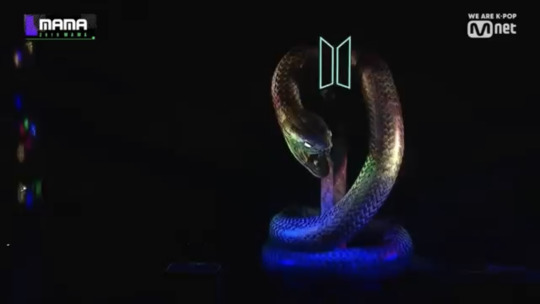
anyway, throughout these 2 award shows, one could say they are riding on the whole Greek theology and concepts without ever culture appropriating it. i am sure they have been doing their own research and I can’t wait to see what else is in store for them.
References
JOURNAL ARTICLEINTERIOR STAIRCASES IN WESTERN GREEK TEMPLESMargaret M. MilesMemoirs of the American Academy in RomeVol. 43/44 (1998/1999), pp. 1-26Published by: University of Michigan Press for the American Academy in RomeDOI: 10.2307/4238755https://www.jstor.org/stable/4238755Page Count: 26 JOURNAL ARTICLEAnger and the Veil in Ancient Greek CultureD. L. CairnsGreece & RomeVol. 48, No. 1 (Apr., 2001), pp. 18-32Published by: Cambridge University Press on behalf of The Classical Associationhttps://www.jstor.org/stable/826867Page Count: 15
[Photo Source] Bighit Entertainment Credits: maxine ☕️ DO NOT REPOST ©
#personal#bangtan#bts#faftheories#faftheory#mma 2019#mama 2019#theory#theories#bts theories#bts theory#bangtan theory#bangtan theories#namjoon#rm#rapmonster#seokjin#jin#yoongi#suga#hoseok#hobi#jhope#jimin#chimchim#mochi#taehyung#v#jungkook#kookie
8 notes
·
View notes
Note
So do you see any cognitive dissonance with worrying about internet "fascists" reblogging a post, while promoting an instrument of torture employed by the Cheka? That "cool ass knuckleduster" was likely used to beat and bludgeon innocent people marked for death by the Bolsheviks.
oh dont worry, it wasnt internet “fascists” in a sense where im talking about a conservative military historian or, say, someone i just dont get along with. i mean an honest-to-goodness fascist, i mean someone genuinely invested in the growth and spread of fascist ideology, who believes in the kind of ideology that leads to neoliberalism extending into fascism (as it does in the current structure of neoliberal hegemony, the exact kind of ideals that saw Allende deposed in favor of Pinochet, that sees Neo-Confederate police chiefs working with alphabet agencies) but has such an overflowing death drive, has such a libidinal investment in the emergence of fascism that they are unable to even keep themselves contained to the vulgarities of contemporary conservatism with its worrying about neomarxists and so on, when contemporary discourses give them as much of a fascist vocabulary as ever before
one could say that this is as good of a time as ever to look at juxtaposition, irony, and the examination of historical art-objects (paintings, films, architecture, music, and so on) as part of critique, discussing what counts as rebellious and what counts as hegemonic, and for that matter the way in which an empty condemnation of the figure of the “tankie” is something that far too many land on in an attempt at critique, an empty one at that.
Brutalist architecture, often associated with Soviet and post-Soviet governments despite its prevalence in the West and other spheres of influence, is a vastly misunderstood style of architectural development which provides numerous means of “reading” a building in the postmodern sense, an exercise which is often rejected by contemporary development as useless in favor of incredibly bland duo-postmodern architecture, the reactionary turn in architecture that various forms of gentrification have driven, the impetus to put a kind of apparent-scientific and anti-artistic touch onto architecture on college campuses, of corporate headquarters, the vaporwaveization of the architectural field into an empty exercise in signification and resignification through the writing of various corporate creeds on the very buildings within which these actions are planned. This misunderstanding, an inability to read the potentiality of the building as brutalist text, one to be overgrown with ivy and which forces certain sorts of engagement by those within, is one fundamental to contemporaneous thought, the post-postmodern, the post-socialist turn seen in NATO geopolitics as ideology.
I enjoy posting pictures of various militaries, of various armed forces, that are currently engaged in that NATO-dictated order of battle, be it American, British, French, or some other current-or-foreign colonial-unto-neocolonial force. I have some pictures ready to go of Soviet forces in Afghanistan, and have plenty of pictures like those of unified forces from Bosnia and Herzegovina deployed to Afghanistan that work as part of looking at exactly what war and moreover policing, the militarization of police over the course of the past half-century, and the police-like quality of military occupation, the transition of American forces into a hybrid of elite soldiers and stereotypical donut-eating cops before they come home and join police forces themselves, an interest in the aesthetics of these mundane, accepted brutalities as carried out specifically because of how they represent hegemony, the realization and enacting thereof, the way in which hegemony is developed and defended in a contemporary sense, as part of questioning the exact same kind of ideologies that build those new corporate monuments, apartment blocs that are only striking in how they displace already-existing expression, the way in which areas like Brighton Beach have all kinds of uneven development, an interest in exactly what kinds of ideological maneuvers are seen in how the city becomes a zone of war for neoliberal capital, how forces maneuver in ways influenced by the IDF’s readings of Deleuze and the 75th Ranger Regiment and Delta Force’s readings of their own white supremacist missions from Somalia to Syria, and the way in which technology, techniques of interaction and the very means of recognizing humanity are often dragged through this space: we would be remiss without mentioning how “Don’t Ask, Don’t Tell” became a referendum on gay personhood almost by accident it seemed, despite coming so soon after the enormous and principled antiwar movement whose common refrain seemed to be “DON’T JOIN, DON’T GO!”, who seemed to understand that there was not something “worth” joining for, that this had been true all throughout the wars of the 90s, back into Kosovo, the non-events of the Gulf War (a kind of television improvisation that set the field for discourses of Modern Warfare)
Being able to look at, examine, meet these critiques, to see objects that represent a kind of knowing self-reference like NKVD agents who received commemorative knuckledusters (ten years after the revolution began, mind) that were more likely to see use as paperweights than as actual weapons, the kind of nakedness of the ideological seen there, the parting that occurs is, very much, something worth preserving, something worth interrogating just as design and its influence goes into the very concept of weapons design: what does it say, what does it imply that derivatives of the AR-15 have become so ubiquitous alongside various Kalashnikov-patterned weapons, even to the point where one sees militaries adopting AR-patterned rifles in 7.62x39? What does the rejection of the HK416, the 5.56x23, and the 300 BLACKOUT round alike by GIGN, instead adopting CZ BREN rifles in that very same calibre, the notorious 7.62x39 say about the state of terrorist assemblages today, where GIGN is concentrated on city-based operations and 7.62x39 is especially effective against vehicles, when vehicle-based attacks have become far more common in response to developing tactic and counter-tactics? What can we learn through study of this? That police, intelligence agents, state forces of various sorts, would find some kind of rejoicing in their own actions, would band together and see themselves as a force against an indeterminable Other is hardly new, and is seen plenty in the weird company the CIA enjoyed keeping during the 1960s as it played Gladiator in Italy while scoring acid on the West Coast, examining how and why and with what means wars are fought is part of studying the enemy, learning their tactics and identity, being able to develop from this a kind of reterritorialization in culture, fashion, in antifascism.
Even the US Military admits that, in looking at counterinsurgency, the work of Mao is some of the best when it comes to proscribing a program for guerrilla warfare, and it was former Maoists in Angola who became the favorite collaborators of the CIA. World War II is perhaps the best example of recapture tactics being used on a large scale: while the PPSH was a phenomenal weapon, Russian troops were by no means against using captured MP40s, and used them well to kill plenty of Nazis. Stocks of captured MP40s were important to Yugoslav Partisans, along with cheaply-manufactured Sten guns, the likes of which we are likely to see alongside clandestine Glocks and AR-15s and M11s in any kind of upcoming insurgency within the United States. Reading gun magazines is fucking grating, given the editorial slant of even issues devoted to AK variants (which remind one of the endless brutalities of the Soviet regime while failing to mention even a single misdeed by the US or any remotely related force, many of whom ran dedicated death squads with plenty of AKs in hand!)
When it comes to the DPRK, to Cuba, to the aesthetics and philosophy and anti-philosophy of Maoism, of Maoist struggle (including Maoists against the CCP and the aesthetics of the CCP and the PLA itself throughout history, including current developments in weapons technology) and furthermore the way in which one looks at countries such as say, Russia or China as counter-hegemonies to US Hegemony (that are rearticulated as hegemonic forces themselves, reminding one that hegemony is neither good, nor bad, but again not by necessity good even in reversal, as it implies a certain strategic power as laid out by Laclau and Mouffe) and of course the Orientalist concept of power and “despotism” as occasionally named in Deleuze and Guattari but the sort of Orientalist fetishization that one sees in complete, uncritical refusal of even a cursory glance at exactly what acts such as Chinese “counter-terrorism” entails or any attempt at analyzing Hong Kong coherently (coherent analysis of such a large movement built around a spontaneous series of events, acts of assembly as part of a movement developing and demonstrating over time, one claimed across the political spectrum in Western discourses that read it in relation to numerous neoliberal forces) one must engage in an analysis that critiques state power, the enforcement thereof, and the various means by which this develops through at least some kind of act of reterritorialization due to the near-inherent liberalism and eventual fascist recapture of posting such critique on capitalist spaces like any website of note
so, as a means of questioning, as a means of presenting an alternative to those wishing to engage, question, deny, argue, and interact with an object such as those knuckledusters that is not going to implicitly support not only a fascist order of power but a fascist who themselves posted the knuckledusters with “this machine kills comrades”, who rejoices in the very kind of bloodshed you stand so principled against? I have no qualms about that.
I am not against finding new weapons, I very much want to “find” many of the weapons I post pictures of in the hands of dead cops and treat them as they deserve to be treated. That BREN in 7.62x39 I mentioned earlier? I want one! I want a Zastava M76 in 8mm because that is such a strange example of how the AK Pattern was adopted by various socialist nations based on their own doctrines, and I sure as hell wanna rob someone who has a Tavor or Galil ACE because I am not gonna break BDS just for a cool rifle. Organizations like the EZLN and the NPA have no qualms about using captured weapons, and why should they? good rifles are good rifles. And looking at the aesthetics of war and hegemony in current contexts in order to juxtapose that with the cyberpunk futures we imagined and the post-cyberpunk Virtual Hyperreality we find ourselves in now, the infinite expanse of Silicon Valley to Hipster Runoff from Brooklyn now gentrifying Queens, learning the language of the enemy is important.
7 notes
·
View notes
Text
A Convergence of Apollos Chapter 2
I studied Hoodie Apollo’s face as we all ran out of Central Park. He looked guilty and bitter, though I wasn’t sure why. Because he sent us on this quest alone last time? At least, assuming he was right about being a mortal Apollo sent back in time by some method (note to self: ask how that happened). I didn’t think he was lying. The emotions he showed were too raw and genuine for that, plus there was God Apollo’s reaction to consider. But I still had a hard time believing it. A lot of strange things had happened to me since I became a demigod, but this would DEFINITELY go in my top ten.
“So where’s the Celedon?” Meg asked as we exited. Apollo thought for a moment, slowing down as a look of embarrassment swept over his face.
“I... uh... I... don’t know,” he admitted sheepishly. “Percy and Grover found her last time, I didn’t care enough to ask about it.” A bitter tone tinged the last part of that sentence. I was beginning to worry about this guy, whoever he was. He really seemed to hate his past self, or at least who he believed was his past self. “But they found, stopped her, and brought her back to Central Park by sundown, so it can’t have taken TOO long. So, uh...? Percy, Grover... where do you think we should look?”
I blinked, caught off-guard. I’d been looking forwards to not having to lead the quest. Oh well. At least I had more help than I originally thought I would.
A diva who wanted to make a name for herself singing to the largest crowd she could...
“Times Square,” I said after a minute. “It’s in the theater district and is full of tourists just walking around, able to hear her singing.”
Apollo smiled at me and nodded appreciatively. “That makes a lot of sense. It’s where I’d go, if I was a Celedon. To Times Square it is!” He walked authoritatively for a few yards in one direction, then stopped. “Er... how do we get there again? Normally I’d just fly over there in my Sun Chariot, but right now...”
Meg sniggered. “Come on, Oh Great God of Getting Lost. I’ll show you how to use the subway.”
Apollo shot Meg a slightly annoyed look, which she ignored. He huffed and started after her, Grover and myself close behind.
As we rode the subway, I glanced at the dead-turtle-lyre God Apollo had forced onto Grover. “Hey, Grover? Do you know how to use that thing?”
“Well, uh... kind of? I learned the basics, and us satyrs have a natural affinity for music, so hopefully that’ll be enough?”
“I can play it,” Apollo chimed in.
I nearly smacked myself. OF COURSE Apollo could play his own lyre, mortal or not. Though if he was mortal...
“Hey Apollo?” I asked. “Does the lyre have any powers of its own? Will it still work if the musician is mortal?”
“Oh yes,” he said, looking like Annabeth does when someone brings up architecture around her. “This is the lyre I used the first time I was turned mortal, in fact. I helped build the walls of Troy using this lyre.”
Huh?
Did he use the lyre as some sort of divine brick-laying tool?
I mean, I’d seen stranger improvisations (I will always savor Rachel hitting Kronos in the eye with a blue plastic hairbrush), but it still seemed weird.
My confusion must have been evident on my face because Apollo continued explaining. “This lyre conjures up items based on the music you play. Back then, that meant bricks. Lots and lots of bricks. But it can summon other things too.”
“Like a cage for the Celedon?”
“Yes, like that,” he agreed.
Grover handed the lyre over to Apollo, but he hesitated a bit as he slowly held it out to Apollo, as if struck by a nervous thought.
“Er... Apollo?” he asked nervously, starting to chew his shirt in his anxiety. (He’s a satyr, he does things like that. One time he got so nervous and hungry he had eaten massive holes in his shirt before he’d realized it was even in his mouth. It couldn’t be salvaged, so he took it off and ate the rest of it.)
“Just... be careful not to scratch it, okay? Please? Apollo - er- the OTHER Apollo said he’d incinerate me if I did, and he’s really freaked out right now so I don’t know WHAT he’d do if it was damaged.”
“Incinerate..?” he said disbelievingly, his voice squeaking at the end. “I... said that?”
“if you damage it, I’ll incinerate you,” I recalled. “That’s what he said.”
“I...” the guy looked close to tears. “I... I shouldn’t have said that. I shouldn’t have even considered it. Your lives are worth more than a musical instrument. Plus you were doing a favor for ME. It was WRONG.”
He took in a shaky breath. “Grover, I know you’re not friends with me now, in this timeline. And considering how I acted, I’m surprised your counterpart is friends with ME in my timeline,” he said with a wry smile. “But I still consider you to be one of my friends, and I wouldn’t hurt you no matter HOW annoyed I was at you, even if you DO like Walt Whitman.” (I was confused at this, but Grover seemed to recognize the name at least). “I won’t allow you to be hurt either, not while I have the power to stop it.” his eyes gleamed softly, and for a moment I thought they were glowing. It was gone so quickly, I wasn’t sure whether it was a trick of the light. “If my past self gives you trouble, I’ll handle him.”
“Thanks,” Grover replied. “I thought with this quest that this would be a pretty bad birthday, but meeting you had made it less-bad than I thought.”
“It’s your birthday?” Apollo asked, looking surprised.
“Really, Apollo? You did this on Grover’s birthday?” Meg chimed in, sounding annoyed.
“I didn’t...” he closed his eyes for his moments and furrowed his brow. “I... thought it was Percy’s birthday?” he muttered to himself, eyes still closed. “Wait, but Percy’s next birthday he was turning sixteen, the Great Prophecy hinged on that, I KNEW this wasn’t his birthday...” he trailed off and opened his eyes.
He took in a deep breath and left it out, then took turns looking Grover and I each in the eyes.
“I didn’t care,” he muttered, his voice tinged with bitterness and self-hatred. “It didn’t matter to me whose birthday it was, or what you were already doing. Because I was a god, I was more important, my needs were more important than yours. So why should I bother remembering that it was Grover’s birthday? It had no effect on me, and I was the only one who mattered.”
“Then I was turned mortal again, and had to live with you, amongst you, as one of you, AS EQUALS. And I cared.”
“I don’t know what made the difference this time, exactly. I didn’t care the last two times I was turned mortal. But then again, those times, I stayed separate from most mortals and their struggles. I didn’t experience what they did. And I was still partially divine, I still looked like myself, I still had ichor in my veins. Or maybe because this time, I was with people who needed me. Not because I was a god, but for who I was.”
His eyes shimmered with unreleased tears. “My children...” he whispered. “I barely knew them, but they did everything they could to make me comfortable at Camp Half-Blood, even though I just wanted to sulk. They embraced me as family. I’d only appeared in their dreams every now-and-then. They acted more like family towards me in those few days I spent at Camp Half-Blood, than I had towards them in their entire lives. I couldn’t even REMEMBER the last time anyone had cared about me that much, AS A PERSON. I didn’t deserve them. I DON’T deserve them. I’m their father, and yet THEY took care of ME. I can’t... I can’t think of myself as their father. Not really. I haven’t earned the title. But they’re my family, and I will protect... them...”
His eyes grew wide. “MICHAEL!” he shouted, startling the other passengers.
“Huh?” I said, confused. A nauseous feeling broiled in my stomach. Why would Apollo look so frantic about his oldest son? At least the oldest one at Camp.
“He... he died. In the Battle of New York City. I... I don’t know how. I and the other gods were busy fighting Typhon at the time. I don’t know if you can change anything. I don’t know if anything that happens now can change fate. But... still, please. Look after him?”
I looked at his pleading face, remembering the last time someone had asked me to look after their family. She had died a few days later. But...
“I’ll try,” I promised. I hesitated. “You know that I don’t have a great track record with keeping people from dying though, right? I promised Nico that I’d try to keep Bianca safe. I failed.”
“I don’t have the best track record with keeping people safe either,” he admitted. “I promised Thalia I’d check in on Jason, on her little brother. He went on a quest with me to help defeat one of the emperors, Caligula. He’d gotten a prophecy a few months before that said that if he and Piper helped me, one of them would die. He could have refused to help. No one could have stopped him. I certainly couldn’t compel him too, the way I am now. But he helped anyway, because more people would die if we didn’t help take Caligula down.”
He took a shaky breath as the tears ran down his face, unable to hold them in anymore. “The... the prophecy said that it could’ve been either of them. He decided that he would be the one to die. He couldn’t bear the thought of Piper dying. I... I said that we’d succeed without either of them dying. He just smiled and made a joke. But he... he asked me to make a promise. To.. to take the designs for some shrines he’d been working on back to Camp after he died, and... and to remember... to remember what it’s like to be human.” He let out a choking sob.
“Even then, even as he was about to march to his death, he was worried about his fellow demigods, OUR FAMILY, who we’ve mistreated so, SO badly. Because they were more important to him than his own life. He was a hero.”
His puffy and bloodshot eyes took on a steely glint. “I’m keeping that promise. I WILL remember this if I survive, if I regain my godhood. And I WILL make things better. I promise.”
This guy... he’d been through so much. He had so much self-loathing and self-hatred for what he’d done, and for what he’d failed to do. He recognized his mistakes and was trying to fix them. Because he CARED.
I pulled Apollo into another hug. He stopped holding back his tears, letting out huge sobs.
“He would be proud of you,” I told him. “You’re trying. That’s enough. He wouldn’t want you to beat yourself up endlessly.” I didn’t KNOW Jason, but based on what he’d told me, I was fairly confident I was right. “Just try. That’s the best any of us humans can do.”
Apollo smiled as he pulled away, breaking my hug. “Thanks.”
As we pulled into our stop, I took another look at Apollo. He looked nothing like the god I had seen earlier. He didn’t glow when upset. Yet right now, as he stared determinedly at the doors, ready to help capture the Celedon, to make sure she didn’t harm any innocent mortals, I thought that he’d never shone brighter.
#a convergence of apollos#fanfiction#trials of apollo#percy jackson#lester papadopoulos#apollo#grover underwood#meg mccaffrey#the trials of apollo#toa
53 notes
·
View notes
Text
https://www.nytimes.com/interactive/2019/08/14/magazine/music-black-culture-appropriation.html
I'd encourage all of you to read -- actually read -- the reported essays in the #1619project. If these ideas or facts are new to you, if they upset you or make you uncomfortable, if they challenge your idea of America, ask yourself: why?
For centuries, black music, forged in bondage, has been the sound of complete artistic freedom. No wonder everybody is always stealing it.
By Wesley Morris | August 14, 2019 | New York Times | Posted August 18, 2019 7:52 PM ET |
I’ve got a friend who’s an incurable Pandora guy, and one Saturday while we were making dinner, he found a station called Yacht Rock. “A tongue-in-cheek name for the breezy sounds of late ’70s/early ’80s soft rock” is Pandora’s definition, accompanied by an exhortation to “put on your Dockers, pull up a deck chair and relax.” With a single exception, the passengers aboard the yacht were all dudes. With two exceptions, they were all white. But as the hours passed and dozens of songs accrued, the sound gravitated toward a familiar quality that I couldn’t give language to but could practically taste: an earnest Christian yearning that would reach, for a moment, into Baptist rawness, into a known warmth. I had to laugh — not because as a category Yacht Rock is absurd, but because what I tasted in that absurdity was black.
I started putting each track under investigation. Which artists would saunter up to the racial border? And which could do their sauntering without violating it? I could hear degrees of blackness in the choir-loft certitude of Doobie Brothers-era Michael McDonald on “What a Fool Believes”; in the rubber-band soul of Steely Dan’s “Do It Again”; in the malt-liquor misery of Ace’s “How Long” and the toy-boat wistfulness of Little River Band’s “Reminiscing.”
Then Kenny Loggins’s “This Is It”arrived and took things far beyond the line. “This Is It” was a hit in 1979 and has the requisite smoothness to keep the yacht rocking. But Loggins delivers the lyrics in a desperate stage whisper, like someone determined to make the kind of love that doesn’t wake the baby. What bowls you over is the intensity of his yearning — teary in the verses, snarling during the chorus. He sounds as if he’s baring it all yet begging to wring himself out even more.
Playing black-music detective that day, I laughed out of bafflement and embarrassment and exhilaration. It’s the conflation of pride and chagrin I’ve always felt anytime a white person inhabits blackness with gusto. It’s: You have to hand it to her. It’s: Go, white boy. Go, white boy. Go. But it’s also: Here we go again. The problem is rich. If blackness can draw all of this ornate literariness out of Steely Dan and all this psychotic origami out of Eminem; if it can make Teena Marie sing everything — “Square Biz,” “Revolution,”“Portuguese Love,” “Lovergirl” — like she knows her way around a pack of Newports; if it can turn the chorus of Carly Simon’s “You Belong to Me” into a gospel hymn; if it can animate the swagger in the sardonic vulnerabilities of Amy Winehouse; if it can surface as unexpectedly as it does in the angelic angst of a singer as seemingly green as Ben Platt; if it’s the reason Nu Shooz’s “I Can’t Wait”remains the whitest jam at the blackest parties, then it’s proof of how deeply it matters to the music of being alive in America, alive to America.
It’s proof, too, that American music has been fated to thrive in an elaborate tangle almost from the beginning. Americans have made a political investment in a myth of racial separateness, the idea that art forms can be either “white” or “black” in character when aspects of many are at least both. The purity that separation struggles to maintain? This country’s music is an advertisement for 400 years of the opposite: centuries of “amalgamation” and “miscegenation” as they long ago called it, of all manner of interracial collaboration conducted with dismaying ranges of consent.
“White,” “Western,” “classical” music is the overarching basis for lots of American pop songs. Chromatic-chord harmony, clean timbre of voice and instrument: These are the ingredients for some of the hugely singable harmonies of the Beatles, the Eagles, Simon and Fleetwood Mac, something choral, “pure,” largely ungrained. Black music is a completely different story. It brims with call and response, layers of syncopation and this rougher element called “noise,” unique sounds that arise from the particular hue and timbre of an instrument — Little Richard’s woos and knuckled keyboard zooms. The dusky heat of Miles Davis’s trumpeting. Patti LaBelle’s emotional police siren. DMX’s scorched-earth bark. The visceral stank of Etta James, Aretha Franklin, live-in-concert Whitney Houston and Prince on electric guitar.
But there’s something even more fundamental, too. My friend Delvyn Case, a musician who teaches at Wheaton College, explained in an email that improvisation is one of the most crucial elements in what we think of as black music: “The raising of individual creativity/expression to the highest place within the aesthetic world of a song.” Without improvisation, a listener is seduced into the composition of the song itself and not the distorting or deviating elements that noise creates. Particular to black American music is the architecture to create a means by which singers and musicians can be completely free, free in the only way that would have been possible on a plantation: through art, through music — music no one “composed” (because enslaved people were denied literacy), music born of feeling, of play, of exhaustion, of hope.
What you’re hearing in black music is a miracle of sound, an experience that can really happen only once — not just melisma, glissandi, the rasp of a sax, breakbeats or sampling but the mood or inspiration from which those moments arise. The attempt to rerecord it seems, if you think about it, like a fool’s errand. You’re not capturing the arrangement of notes, per se. You’re catching the spirit.
And the spirit travels from host to host, racially indiscriminate about where it settles, selective only about who can withstand being possessed by it. The rockin’ backwoods blues so bewitched Elvis Presley that he believed he’d been called by blackness. Chuck Berry sculpted rock ’n’ roll with uproarious guitar riffs and lascivious winks at whiteness. Mick Jagger and Robert Plant and Steve Winwood and Janis Joplin and the Beatles jumped, jived and wailed the black blues. Tina Turner wrested it all back, tripling the octane in some of their songs. Since the 1830s, the historian Ann Douglas writes in “Terrible Honesty,” her history of popular culture in the 1920s, “American entertainment, whatever the state of American society, has always been integrated, if only by theft and parody.” What we’ve been dealing with ever since is more than a catchall word like “appropriation” can approximate. The truth is more bounteous and more spiritual than that, more confused. That confusion is the DNA of the American sound.
It’s in the wink-wink costume funk of Beck’s “Midnite Vultures” from 1999, an album whose kicky nonsense deprecations circle back to the popular culture of 150 years earlier. It’s in the dead-serious, nostalgic dance-floor schmaltz of Bruno Mars. It’s in what we once called “blue-eyed soul,” a term I’ve never known what to do with, because its most convincing practitioners — the Bee-Gees, Michael McDonald, Hall & Oates, Simply Red, George Michael, Taylor Dayne, Lisa Stansfield, Adele — never winked at black people, so black people rarely batted an eyelash. Flaws and all, these are homeowners as opposed to renters. No matter what, though, a kind of gentrification tends to set in, underscoring that black people have often been rendered unnecessary to attempt blackness. Take Billboard’s Top 10 songs of 2013: It’s mostly nonblack artists strongly identified with black music, for real and for kicks: Robin Thicke, Miley Cyrus, Justin Timberlake, Macklemore and Ryan Lewis, the dude who made “The Harlem Shake.”
Sometimes all the inexorable mixing leaves me longing for something with roots that no one can rip all the way out. This is to say that when we’re talking about black music, we’re talking about horns, drums, keyboards and guitars doing the unthinkable together. We’re also talking about what the borrowers and collaborators don’t want to or can’t lift — centuries of weight, of atrocity we’ve never sufficiently worked through, the blackness you know is beyond theft because it’s too real, too rich, too heavy to steal.
Blackness was on the move before my ancestors were legally free to be. It was on the move before my ancestors even knew what they had. It was on the move because white people were moving it. And the white person most frequently identified as its prime mover is Thomas Dartmouth Rice, a New Yorker who performed as T.D. Rice and, in acclaim, was lusted after as “Daddy” Rice, “the negro par excellence.” Rice was a minstrel, which by the 1830s, when his stardom was at its most refulgent, meant he painted his face with burned cork to approximate those of the enslaved black people he was imitating.
In 1830, Rice was a nobody actor in his early 20s, touring with a theater company in Cincinnati (or Louisville; historians don’t know for sure), when, the story goes, he saw a decrepit, possibly disfigured old black man singing while grooming a horse on the property of a white man whose last name was Crow. On went the light bulb. Rice took in the tune and the movements but failed, it seems, to take down the old man’s name. So in his song based on the horse groomer, he renamed him: “Weel about and turn about jus so/Ebery time I weel about, I jump Jim Crow.” And just like that, Rice had invented the fellow who would become the mascot for two centuries of legalized racism.
That night, Rice made himself up to look like the old black man — or something like him, because Rice’s get-up most likely concocted skin blacker than any actual black person’s and a gibberish dialect meant to imply black speech. Rice had turned the old man’s melody and hobbled movements into a song-and-dance routine that no white audience had ever experienced before. What they saw caused a permanent sensation. He reportedly won 20 encores.
Rice repeated the act again, night after night, for audiences so profoundly rocked that he was frequently mobbed duringperformances. Across the Ohio River, not an arduous distance from all that adulation, was Boone County, Ky., whose population would have been largely enslaved Africans. As they were being worked, sometimes to death, white people, desperate with anticipation, were paying to see them depicted at play.
[To get updates on The 1619 Project, and for more on race from The New York Times, sign up for our weekly Race/Related newsletter.]
Other performers came and conquered, particularly the Virginia Minstrels, who exploded in 1843, burned brightly then burned out after only months. In their wake, P.T. Barnum made a habit of booking other troupes for his American Museum; when he was short on performers, he blacked up himself. By the 1840s, minstrel acts were taking over concert halls, doing wildly clamored-for residencies in Boston, New York and Philadelphia.
A blackface minstrel would sing, dance, play music, give speeches and cut up for white audiences, almost exclusively in the North, at least initially. Blackface was used for mock operas and political monologues (they called them stump speeches), skits, gender parodies and dances. Before the minstrel show gave it a reliable home, blackface was the entertainment between acts of conventional plays. Its stars were the Elvis, the Beatles, the ’NSync of the 19th century. The performers were beloved and so, especially, were their songs.
During minstrelsy’s heyday, white songwriters like Stephen Foster wrote the tunes that minstrels sang, tunes we continue to sing. Edwin Pearce Christy’s group the Christy Minstrels formed a band — banjo, fiddle, bone castanets, tambourine — that would lay the groundwork for American popular music, from bluegrass to Motown. Some of these instruments had come from Africa; on a plantation, the banjo’s body would have been a desiccated gourd. In “Doo-Dah!” his book on Foster’s work and life, Ken Emerson writes that the fiddle and banjo were paired for the melody, while the bones “chattered” and the tambourine “thumped and jingled a beat that is still heard ’round the world.”
But the sounds made with these instruments could be only imagined as black, because the first wave of minstrels were Northerners who’d never been meaningfully South. They played Irish melodies and used Western choral harmonies, not the proto-gospel call-and-response music that would make life on a plantation that much more bearable. Black artists were on the scene, like the pioneer bandleader Frank Johnsonand the borderline-mythical Old Corn Meal, who started as a street vendor and wound up the first black man to perform, as himself, on a white New Orleans stage. His stuff was copied by George Nichols, who took up blackface after a start in plain-old clowning. Yet as often as not, blackface minstrelsy tethered black people and black life to white musical structures, like the polka, which was having a moment in 1848. The mixing was already well underway: Europe plus slavery plus the circus, times harmony, comedy and drama, equals Americana.
And the muses for so many of the songs were enslaved Americans, people the songwriters had never met, whose enslavement they rarely opposed and instead sentimentalized. Foster’s minstrel-show staple “Old Uncle Ned,” for instance, warmly if disrespectfully eulogizes the enslaved the way you might a salaried worker or an uncle:
Den lay down de shubble and de hoe,
Hang up de fiddle and de bow:
No more hard work for poor Old Ned —
He’s gone whar de good Niggas go,
No more hard work for poor Old Ned —
He’s gone whar de good Niggas go.
Such an affectionate showcase for poor old (enslaved, soon-to-be-dead) Uncle Ned was as essential as “air,” in the white critic Bayard Taylor’s 1850 assessment; songs like this were the “true expressions of the more popular side of the national character,” a force that follows “the American in all its emigrations, colonizations and conquests, as certainly as the Fourth of July and Thanksgiving Day.” He’s not wrong. Minstrelsy’s peak stretched from the 1840s to the 1870s, years when the country was as its most violently and legislatively ambivalent about slavery and Negroes; years that included the Civil War and Reconstruction, the ferocious rhetorical ascent of Frederick Douglass, John Brown’s botched instigation of a black insurrection at Harpers Ferry and the assassination of Abraham Lincoln.
Minstrelsy’s ascent also coincided with the publication, in 1852, of “Uncle Tom's Cabin,” a polarizing landmark that minstrels adapted for the stage, arguing for and, in simply remaining faithful to Harriet Beecher Stowe’s novel, against slavery. These adaptations, known as U.T.C.s, took over the art form until the end of the Civil War. Perhaps minstrelsy’s popularity could be (generously) read as the urge to escape a reckoning. But a good time predicated upon the presentation of other humans as stupid, docile, dangerous with lust and enamored of their bondage? It was an escape into slavery’s fun house.
What blackface minstrelsy gave the country during this period was an entertainment of skill, ribaldry and polemics. But it also lent racism a stage upon which existential fear could become jubilation, contempt could become fantasy. Paradoxically, its dehumanizing bent let white audiences feel more human. They could experience loathing as desire, contempt as adoration, repulsion as lust. They could weep for overworked Uncle Ned as surely as they could ignore his lashed back or his body as it swung from a tree.
But where did this leave a black performer? If blackface was the country’s cultural juggernaut, who would pay Negroes money to perform as themselves? When they were hired, it was only in a pinch. Once, P.T. Barnum needed a replacement for John Diamond, his star white minstrel. In a New York City dance hall, Barnum found a boy, who, it was reported at the time, could outdo Diamond (and Diamond was good). The boy, of course, was genuinely black. And his being actually black would have rendered him an outrageous blight on a white consumer’s narrow presumptions. As Thomas Low Nichols would write in his 1864 compendium, “Forty Years of American Life,” “There was not an audience in America that would not have resented, in a very energetic fashion, the insult of being asked to look at the dancing of a real negro.” So Barnum “greased the little ‘nigger’s’ face and rubbed it over with a new blacking of burned cork, painted his thick lips vermilion, put on a woolly wig over his tight curled locks and brought him out as ‘the champion nigger-dancer of the world.’ ” This child might have been William Henry Lane, whose stage name was Juba. And, as Juba, Lane was persuasive enough that Barnum could pass him off as a white person in blackface. He ceased being a real black boy in order to become Barnum’s minstrel Pinocchio.
After the Civil War, black performers had taken up minstrelsy, too, corking themselves, for both white and black audiences — with a straight face or a wink, depending on who was looking. Black troupes invented important new dances with blue-ribbon names (the buck-and-wing, the Virginia essence, the stop-time). But these were unhappy innovations. Custom obligated black performers to fulfill an audience’s expectations, expectations that white performers had established. A black minstrel was impersonating the impersonation of himself. Think, for a moment, about the talent required to pull that off. According to Henry T. Sampson’s book, “Blacks in Blackface,” there were no sets or effects, so the black blackface minstrel show was “a developer of ability because the artist was placed on his own.” How’s that for being twice as good? Yet that no-frills excellence could curdle into an entirely other, utterly degrading double consciousness, one that predates, predicts and probably informs W.E.B. DuBois’s more self-consciously dignified rendering.
American popular culture was doomed to cycles not only of questioned ownership, challenged authenticity, dubious propriety and legitimate cultural self-preservation but also to the prison of black respectability, which, with brutal irony, could itself entail a kind of appropriation. It meant comportment in a manner that seemed less black and more white. It meant the appearance of refinement and polish. It meant the cognitive dissonance of, say, Nat King Cole’s being very black and sounding — to white America, anyway, with his frictionless baritone and diction as crisp as a hospital corner — suitably white. He was perfect for radio, yet when he got a TV show of his own, it was abruptly canceled, his brown skin being too much for even the black and white of a 1955 television set. There was, perhaps, not a white audience in America, particularly in the South, that would not have resented, in a very energetic fashion, the insult of being asked to look at the majestic singing of a real Negro.
The modern conundrum of the black performer’s seeming respectable, among black people, began, in part, as a problem of white blackface minstrels’ disrespectful blackness. Frederick Douglass wrote that they were “the filthy scum of white society.” It’s that scum that’s given us pause over everybody from Bert Williams and Bill “Bojangles” Robinson to Flavor Flav and Kanye West. Is their blackness an act? Is the act under white control? Just this year, Harold E. Doley Jr., an affluent black Republican in his 70s, was quoted in The Times lamenting West and his alignment with Donald Trump as a “bad and embarrassing minstrel show” that “served to only drive black people away from the G.O.P.”
But it’s from that scum that a robust, post-minstrel black American theater sprung as a new, black audience hungered for actual, uncorked black people. Without that scum, I’m not sure we get an event as shatteringly epochal as the reign of Motown Records. Motown was a full-scale integration of Western, classical orchestral ideas (strings, horns, woodwinds) with the instincts of both the black church (rhythm sections, gospel harmonies, hand claps) and juke joint Saturday nights (rhythm sections, guitars, vigor). Pure yet “noisy.” Black men in Armani. Black women in ball gowns. Stables of black writers, producers and musicians. Backup singers solving social equations with geometric choreography. And just in time for the hegemony of the American teenager.
Even now it feels like an assault on the music made a hundred years before it. Motown specialized in love songs. But its stars, those songs and their performance of them were declarations of war on the insults of the past and present. The scratchy piccolo at the start of a Four Tops hitwas, in its way, a raised fist. Respectability wasn’t a problem with Motown; respectability was its point. How radically optimistic a feat of antiminstrelsy, for it’s as glamorous a blackness as this country has ever mass-produced and devoured.
The proliferation of black music across the planet — the proliferation, in so many senses, of being black — constitutes a magnificent joke on American racism. It also confirms the attraction that someone like Rice had to that black man grooming the horse. But something about that desire warps and perverts its source, lampoons and cheapens it even in adoration. Loving black culture has never meant loving black people, too. Loving black culture risks loving the life out of it.
And yet doesn’t that attraction make sense? This is the music of a people who have survived, who not only won't stop but also can’t be stopped. Music by a people whose major innovations — jazz, funk, hip-hop — have been about progress, about the future, about getting as far away from nostalgia as time will allow, music that’s thought deeply about the allure of outer space and robotics, music whose promise and possibility, whose rawness, humor and carnality call out to everybody — to other black people, to kids in working class England and middle-class Indonesia. If freedom's ringing, who on Earth wouldn't also want to rock the bell?
In 1845, J.K. Kennard, a critic for the newspaper The Knickerbocker, hyperventilated about the blackening of America. Except he was talking about blackface minstrels doing the blackening. Nonetheless, Kennard could see things for what they were:
“Who are our true rulers? The negro poets, to be sure! Do they not set the fashion, and give laws to the public taste? Let one of them, in the swamps of Carolina, compose a new song, and it no sooner reaches the ear of a white amateur, than it is written down, amended, (that is, almost spoilt,) printed, and then put upon a course of rapid dissemination, to cease only with the utmost bounds of Anglo-Saxondom, perhaps of the world.”
What a panicked clairvoyant! The fear of black culture — or “black culture” — was more than a fear of black people themselves. It was an anxiety over white obsolescence. Kennard’s anxiety over black influence sounds as ambivalent as Lorde’s, when, all the way from her native New Zealand, she tsk-ed rap culture’s extravagance on “Royals,”her hit from 2013, while recognizing, both in the song’s hip-hop production and its appetite for a particular sort of blackness, that maybe she’s too far gone:
Every song’s like gold teeth, Grey Goose, trippin’ in the bathroom
Bloodstains, ball gowns, trashin’ the hotel room
We don’t care, we’re driving Cadillacs in our dreams
But everybody’s like Cristal, Maybach, diamonds on your timepiece
Jet planes, islands, tigers on a gold leash
We don’t care, we aren’t caught up in your love affair
Beneath Kennard’s warnings must have lurked an awareness that his white brethren had already fallen under this spell of blackness, that nothing would stop its spread to teenage girls in 21st-century Auckland, that the men who “infest our promenades and our concert halls like a colony of beetles” (as a contemporary of Kennard’s put it) weren’t black people at all but white people just like him — beetles and, eventually, Beatles. Our first most original art form arose from our original sin, and some white people have always been worried that the primacy of black music would be a kind of karmic punishment for that sin. The work has been to free this country from paranoia’s bondage, to truly embrace the amplitude of integration. I don’t know how we’re doing.
Last spring, “Old Town Road,” a silly, drowsy ditty by the Atlanta songwriter Lil Nas X, was essentially banished from country radio. Lil Nas sounds black, as does the trap beat he’s droning over. But there’s definitely a twang to him that goes with the opening bars of faint banjo and Lil Nas’s lil’ cowboy fantasy. The song snowballed into a phenomenon. All kinds of people — cops, soldiers, dozens of dapper black promgoers — posted dances to it on YouTube and TikTok. Then a crazy thing happened. It charted — not just on Billboard’s Hot 100 singles chart, either. In April, it showed up on both its Hot R&B/Hip-Hop Songs chart and its Hot Country Songs chart. A first. And, for now at least, a last.
The gatekeepers of country radio refused to play the song; they didn’t explain why. Then, Billboard determined that the song failed to “embrace enough elements of today’s country music to chart in its current version.” This doesn’t warrant translation, but let’s be thorough, anyway: The song is too black for certain white people.
But by that point it had already captured the nation’s imagination and tapped into the confused thrill of integrated culture. A black kid hadn’t really merged white music with black, he’d just taken up the American birthright of cultural synthesis. The mixing feels historical. Here, for instance, in the song’s sample of a Nine Inch Nails track is a banjo, the musical spine of the minstrel era. Perhaps Lil Nas was too American. Other country artists of the genre seemed to sense this. White singers recorded pretty tributes in support, and one, Billy Ray Cyrus, performed his on a remix with Lil Nas X himself.
The newer version lays Cyrus’s casual grit alongside Lil Nas’s lackadaisical wonder. It’s been No.1 on Billboard’s all-genre Hot 100 singles chart since April, setting a record. And the bottomless glee over the whole thing makes me laugh, too — not in a surprised, yacht-rock way but as proof of what a fine mess this place is. One person's sign of progress remains another’s symbol of encroachment. Screw the history. Get off my land.
Four hundred years ago, more than 20 kidnapped Africans arrived in Virginia. They were put to work and put through hell. Twenty became millions, and some of those people found — somehow — deliverance in the power of music. Lil Nas X has descended from those millions and appears to be a believer in deliverance. The verses of his song flirt with Western kitsch, what young black internetters branded, with adorable idiosyncrasy and a deep sense of history, the “yee-haw agenda.” But once the song reaches its chorus (“I’m gonna take my horse to the Old Town Road, and ride til I can’t no more”), I don’t hear a kid in an outfit. I hear a cry of ancestry. He’s a westward-bound refugee; he’s an Exoduster. And Cyrus is down for the ride. Musically, they both know: This land is their land.
Wesley Morris is a staff writer for the magazine, a critic at large for The New York Times and a co-host of the podcast “Still Processing.” He was awarded the 2012 Pulitzer Prize for criticism.
Source photograph of Beyoncé: Kevin Mazur/Getty Images; Holiday: Paul Hoeffler/Redferns, via Getty Images; Turner: Gai Terrell/Redferns, via Getty Images; Richards: Chris Walter/WireImage, via Getty Images; Lamar: Bennett Raglin/Getty Images
#archives#music#must reads#african american history#american history#history#arts and entertainment#entertainment#entertainers#news#latest news#trending news#hip hop news source#1619#1619project
1 note
·
View note
Text
Gryffindor
• pranksters bursting through the portrait door laughing loudly and holding a finger to their lips when kids ask what they did
• screams from the corner where the shared decks of Exploding Snap cards are kept
• roasting s'mores every Saturday (a tradition started by Lily Evans and the Marauders)
• braid trains a mile long (that both Sirius Black and Bill Weasley had been known to participate in in their time)
• the random illegal animal or object popping up and making the rounds for everyone to look at (and then sent to the Ravenclaws because they like those kinds of things)
• loud, Jeopardy style review games using muggle flash cards
• snitches, tiny dragons and Quidditch player models flying through the air and charmed toy cars and the kittens of some firsties cat tumbling underfoot
• popular music playing from a record player or radio in the corner
• a warm and rambunctious place full of kids determined to change the world
Ravenclaw
• a table set up specifically for late night studiers, with constantly refilling coffee, tea, and snacks
• building intricate, architecturally sound pillow forts on the weekends so they can look at the stars through their own personal enchanted ceiling
• art in every corner - typewriters on desks in one of the alcoves filled with bookshelves, every instrument imaginable tucked into a corner for anyone to use, one wall completely devoted to being painted on and over and a ballet bar across from it
• tripping over groups of kids and scattered papers arguing over the latest decisions on the political state of werewolves or how best to fold a paper airplane
• knocks from the Gryffindors delivering illegal animals and objects to be studied and sometimes kept or otherwise sent away to Ravenclaw alumni who would be interested in them
• trivia nights, poetry slams, concerts, or rallies whenever people start feeling a little burnt out
• feeling eerily quiet when you first enter, especially if there’s no musicians practicing loudly, until you realize that half the kids are shouting at each other inside giant bubble charms out of respect to the other ones who like to study in silence
• the biggest homework racket in the school - saved quizzes from teachers known to reuse theirs, charms that slightly alter essays so only one kid has to do them, pre used textbooks with sticky notes where the stuff that’s important for exams is - all hidden away in hollow books, holes in the walls, and under floorboards
• a busy and disorganized place full of kids determined to add something to the world
Hufflepuff
• plants hanging from the ceilings and perched on windowsills that everyone checks the water levels on once in a while
• comfy blankets over every armchair and a cupboard stocked with sweets
• bingo night every saturday
• different sections for kids who study differently - by reading, listening, discussing, practicing, whatever
• start the most midnight quidditch games where houses don’t matter and kids team up based on whose there that night
• a table with self help and mental health pamphlets tucked away to browse and pass out to kids in other houses
• raising money or supplies for a different charity every month
• house wide secret santa every christmas
• a bright and open place full of kids determined to help the world
Slytherin
• weekly competitions on any range of topics, from who can get the most house points to who can cross-stitch the prettiest handkerchief
• a binder with the names of all the fish in the lake sitting by the windows, in case you want to identify something
• intense games of chess with expensive sets left behind by alumni as gifts
• velvety chairs with fur throws (fake fur, after one student made it their goal to save all animals)
• a message board with a sheet that has different therapists on it that kids can call when their ambition gets the best of them
• gossip central for the whole school
• the best backup squad for anything ever available at any time
• monthly truth or dare sessions that are taken more seriously than any other activity
• a quiet and assuring place full of kids determined to lead the world
94 notes
·
View notes
Text
Tonebase – Catching the Moment
Interview With tonebase’s Piano Executive Ben Laude
In late 2019, tonebase Piano was launched, with the aim of giving amateur pianists access to high level music education through premium online content featuring great artists. Since then, education has been trending even more in a digital direction because of the pandemic. Piano Street’s Patrick Jovell has talked to Ben Laude about the challenges he faced building tonebase’s piano platform, but also about how to forge a unified music education, reconciling our physical and virtual realities.
Piano Street: Dear Ben, thank you for letting us interview you! From what I know you are responsible for the Piano at Tonebase. But you are not alone. I could count fifteen people working in your team. Among the founders I find Chris Garwood who is a guitarist. Can you tell me how it all started and how it has developed?
Ben Laude: First of all, thank you Patrick and to everyone at Piano Street for the resources you’ve been providing us pianists for decades now! I used to frequent the forums back in my conservatory days, mostly looking to pick fights with people about whose Rach 3 recording was the greatest (it was Horowitz and Reiner from 1951, I was convinced).
I joined tonebase in medias res about two years ago with a simple mandate: build the piano platform. The model I had at the time was tonebase’s original pilot classical guitar platform, which had been launched in 2017. Our three founders met at Yale, where two of them (Chris Garwood and Igor Lichtmann) were pursuing their master’s in guitar. They took their ‘Music and Business’ course more seriously than most, it seems, and ended up with a germ of a business plan. They connected with a comp-sci/econ double major whiz kid (Abhi Nayar), and the three of them officially founded tonebase in the summer of 2017. Their savvy and initial success led to getting involved with some Silicon Valley investors, with whom they secured funding to expand to another instrument. Piano was the obvious choice. At the time I was hired, I was busy teaching and performing, and continued to assist David Dubal in curating his NYC piano performance series (a gig I had going back to my early grad work at Juilliard). I figured it was time to put the doctorate I earned in piano to proper use, and had started applying to tenure-track jobs in higher ed when the call for a tonebase ‘Head of Piano’ fell into my lap. It seemed a bit too good to be true, as I’ve had a second passion for media production dating back to high school, especially video editing. I’ve always enjoyed Bruno Mosaingeon’s interviews at the piano with Glenn Gould and wished more films like this existed with more pianists.
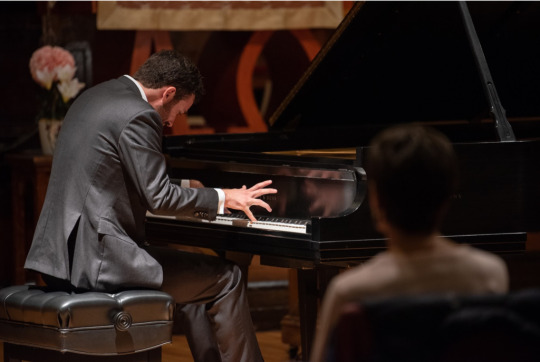
Ben Laude performing in concert
My first six months at tonebase were a mad scramble to recruit as many high calibre pianists and professors as I could and coordinate productions on various repertoire and pianistic topics. Garrick Ohlsson was one of the first major artists to say ‘yes’ – he and I met for coffee in New York the summer of 2019 and got lost in conversation about piano. He was clearly a great fit for our longform style of in-depth tutorial videos, and I owe a lot to him for being willing to contribute lessons to our launch. The next big challenge was organizing our post-production workflow with my teammates – editing the video and adding corresponding scores and workbooks to the platform. (I watched Ohlsson teach Chopin’s First Ballade and Third Scherzo over and over again for so many hours while editing those lessons, that I must have learned both pieces by osmosis – they’re now in my active repertoire and I can’t account for that based on practice-time alone.) We launched in late 2019 with about 30 videos and to-date we’re approaching 300 released, plus dozens more in our backlog waiting to be processed and released.
2020 was a bittersweet. It started off in January and February with some unforgettable productions, including two extended sessions with Leon Fleisher, just months before he passed. While Covid led to a higher demand for streaming services, it also became quite difficult to continue productions as before. I also began to direct my energies towards developing foundational musicianship content, beginner courses, and live programming, while continuing to pursue new collaborations with great concert artists and professors where possible. 2021 couldn’t have arrived soon enough. Our subscriber count has by now risen to over 5000; among our active users, about 40% are ‘serious amateurs’, 40% teachers/professionals, and another 20% or so younger students. We’re aiming to keep pace with our expanding base as we grow, and continue to provide a really exceptional and unique product to pianists of very different backgrounds. There’s also some major concert artists who will be added to our roster soon, including a few based in the UK/EU, and I look forward to producing with them later this year (hopefully in person, fingers crossed). We’re still a young platform, and I’m excited to see where we can go from here.
PS:You are a Juilliard trained pianist and you also function as a tutor, also on Tonebase. Which key questions on piano playing and interpretation have you nourished through the years and which come out in your function as a Masterclass moderator?
BL: While at Juilliard I grew fascinated by one of the core questions, or mysteries, of piano playing: that is, what is the relation between physical technique and musical expression. The more I investigated the problem, the more I discovered that musicianship training – i.e., deeply internalizing musical relationships in one’s mind, ear, and voice – can foster better interpretive ideas while also contributing directly to overcoming physical obstacles. In my tonebase lessons, I’ve tried to emphasize the importance of integrating music theory and aural skills into our practice at the keyboard, and we’ve been releasing more and more practical musicianship content for our users’ benefit.
These musicianship subjects are often taught in isolation, especially in the American conservatory systems I’m familiar with, so that your typical piano major will sleep through music theory class on Monday, mumble through solfege exercises on Tuesday, and show up on Wednesday for a private lesson. This results in an unfortunate separation between the intellectual comprehension of harmony and form, the aural recognition of musical relationships, and the physical realization of these principles in performance. (I should also mention a vital fourth element, the study of music history and culture, which takes place on Thursday and is forgotten about by the weekend!) It is no wonder why so many one-sided musicians have emerged from this state of affairs. How often have we encountered a pianist with “great technique, but nothing to say” or with “great ideas, but no chops,” or those who have great ears or analytical minds but never applied them at the piano?

Producer and tutor. Ben Laude is also featured in instruction videos at Tonebase.
The remedy, I have found, is a kind of well-rounded musicianship training where playing the piano is treated as a means for developing your musical personality, rather than as an end in itself. I don’t claim to know the best way to get there! But, I have familiarized myself with some traditions that I believe can help a great deal – for one, I’ve always found Nadia Boulanger’s method of keyboard skills training, with solfege and harmonic analysis mixed in, to be very useful. (The first time I ever performed Bach without a memory slip came after painstakingly working through the Fugue phrase-by-phrase, singing one voice while playing the others, then switching.) Committing to such training transforms our connection to the instrument, and over time a kind of holistic awareness starts to develop, which is just awesome. It becomes nearly impossible to play a given figuration or progression on the piano without hearing its component elements and knowing something about how they relate. Scores can be processed faster and memorization becomes much more rapid and reliable. Furthermore, these new sensitivities instantly inform how passages might be played, conjuring all sorts of possibilities about voicing, texture, phrasing, rubato, etc. Physically, the instrument begins feeling more like an extension of your arm, hand, and fingers, relieving tension and promoting facility.
There’s much more to this, but these are the basic contours of a kind of “musical fluency” at the keyboard that I believe all pianists should develop more thoroughly (including myself!), and which I hope to spread through tonebase.
PS: The line-up of artists and pedagogues on Tonebase is impressive as are the productions in question. The technology used is a proof of your ambition to give the viewer the best possible chance to get into the contents of the Masterclasses. One easily thinks about carefully directed momenta in order to secure the core message. As a “stage director”, how do you manage the different artists and personalities which all have their own fields of expertise and own articulated artistic/pedagogical universes?

Leon Fleisher teaching pianist Rachel Naomi Kudo Brahms’ B-flat major Piano Concerto.
BL: Pianists can be temperamental, particular people, and each of the artists on tonebase has a singular vision at the instrument that has been honed over decades. I’m lucky to work with one pianist at a time, since their perspectives often rub against each other. In some cases, they appear to be in direct opposition. For example, Leon Fleisher preached a rhythmically-strict, architectural approach to building phrases; Jerome Lowenthal insisted on a rhythmically flexible, narrative approach to interpretation. Who is right? Both, and neither, I suppose. What matters to me is that both have the floor, and are given a platform to demonstrate and defend their perspectives at the instrument. Then, it’s up to viewers to watch, absorb, and find what resonates with them. Pianistic wisdom comes in many varieties, sometimes contradictory!

Ben Laude in interview and Chopin session with Emanuel Ax.
In terms of stage direction, I do my best to steer and structure lessons without leaving my fingerprints all over them. Some artists, like Boris Berman, preferred to work more carefully with me in advance to develop a carefully articulated lesson plan. In other cases, artists were more comfortable speaking extemporaneously about their piece or topic. Garrick Ohlsson, for example, had a marvelous ability to spontaneously manifest highly structured lessons on the spot with very few retakes. One of the trickiest parts of the job has to do with building an ideal viewer in the mind of the artist. Professors are used to the give and take of engaging directly with a student in person, so speaking to an anonymous future student inside a camera can be alienating. If I can manage to make artists comfortable and be themselves, they forget about the artificial environment they’re in and their personalities shine through.
PS: This last year’s Pandemic situation has shown a necessary increase in consulting digital resources in music education. Institutions are now much more open to include such alternatives in their regular curricula. How do you predict the future for Tonebase and similar resources on the Internet?

One of the Scarlatti takes with Claire Huangci.
BL: I should say that I’m familiar enough with dystopian literature and film to be suspicious of the rallying cry to thoroughly digitize education. It has seemed inevitable since the advent of the internet and streaming services, but brick and mortar educational institutions were too thoroughly entrenched in social life to be uprooted like Blockbuster Video. Nevertheless, education had been trending in a digital direction when 2020 arrived. It seems like the pandemic just sped things up by a decade.
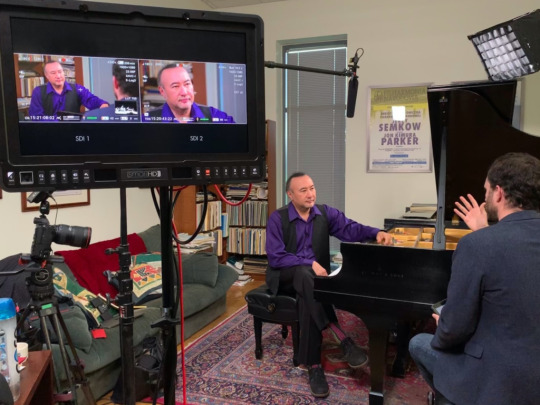
Discussing the piano concerto repertoire with John Kimura Parker.
The original mission of tonebase was about connecting amateur pianists to the otherwise insulated worlds of conservatory and concert hall. Therefore it relied on the coexistence, and separation, between offline institutions and online individuals. The amateur’s relative isolation from centers of high level music making and education was the problem we were solving by making the wisdom of great artists accessible and affordable. But what we found even before the pandemic was a widespread general interest in such premium online video content, from more amateurs on the periphery to professionals at the center of these institutions, plus many students and teachers in between. Now that the pandemic has created a situation in which everyone is isolated, including from their own institutions, there has been a need for virtual experiences of all kinds. Some are surrogates that will disappear once social restrictions are lifted, but it seems like others are here to stay. I see lots of potential for tonebase and other online resources to become staples of music education in the post-Covid future, both in institutional settings and private teaching.
You might think a subjective, sensuous discipline like music requires the flexibility of “offline” learning and would find less use in incorporating digital resources into the classroom or studio. Yet what I’ve found in observing tonebase’s appeal is that it’s precisely the elusiveness of music education that increases the value of any given artist’s video lessons. Whereas it might be interesting to hear the same calculus concept explained by five different math instructors, ultimately they’re each trying to communicate the same bit of knowledge. This is never quite the case with piano instructors, as there’s a wonderful lack of consensus about even fundamental principles of technique and interpretation. There are no axiomatic proofs to musical understanding or scientific laws to piano technique, there are only more-or-less-successful approaches developed and passed down through lineages of mentorship. Under the right circumstances, piano teachers should embrace this healthy relativism and utilize our video archive as discussion material during lessons. Having students weigh different approaches will help them think critically about piano playing, find solutions faster, and ultimately foster original artistry to a degree not possible if you only had access to the perspectives of one or two professors.

Screen capture from a digital workshop with Simone Dinnerstein.
On the other hand, often the point of a lesson is not to encourage an exploration of different viewpoints, but to focus on solving a student’s specific problems without the distractions of a second opinion. Even here, a digital resource like tonebase offers a lot of promise down the road. Private teachers often wonder what goes on during the 167 hours between lessons with a student, and having trusted, high quality video lessons and training videos available for the student to watch and practice along with could be a game changer. Teachers could be spending valuable lesson time working on the particular problems a student is facing while they entrust tonebase’s virtual instructors to do the job of introducing or reinforcing concepts and skills in the interim. Along these lines, I believe piano departments and music school libraries will find great value in making tonebase available to both students and faculty as a versatile teaching and training resource.

Garrick Ohlsson preparing for filming momentum.
Of course, in-person learning environments bring benefits that can’t or shouldn’t be reproduced by digital technologies, such as direct feedback from instructors and social interaction with peers. Music, as Boris Berman exclaims in a tonebase lesson, is “the art of sound,” and there’s something irreplaceable about experiencing sonic vibrations in person – making, sharing, and commenting on music together in the same space. Feedback can be digitally mediated to a degree, and tonebase has been increasing its live workshops and developing community feedback channels. But ultimately, the power of digital resources utilized in combination with in-person instruction remains unrealized, especially in music. The goal is to make tonebase a constructive force in reconciling our physical and virtual realities and forging a unified music education that draws from the best of both worlds. (And if all hell breaks loose and the machines do try to take over, I would expect the humanizing forces of music education to tame the robots and for tonebase to help keep our priorities straight!)
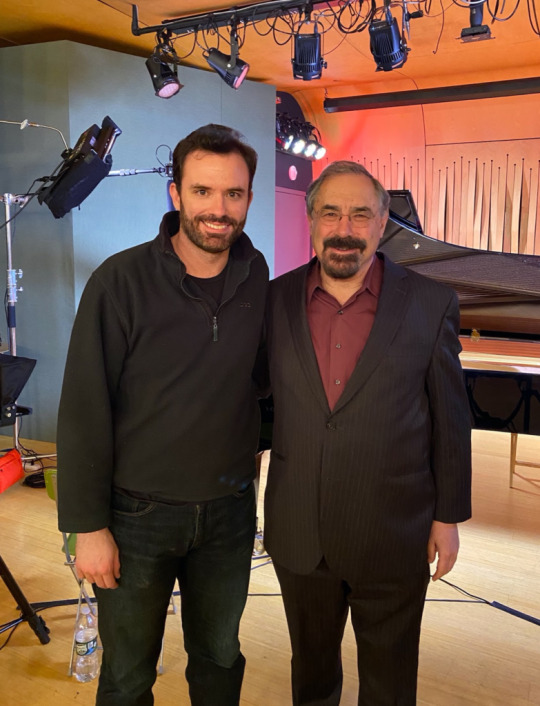
After filming session series with Boris Berman.
Emanuel Ax on Learning Chopin in Lockdown
tonebase recently visited the 7-time GRAMMY Award-winning pianist at his breathtaking home in the Berkshires for an extended interview and recording session.
youtube
from Piano Street’s Classical Piano News https://www.pianostreet.com/blog/articles/catching-the-moment-11172/
0 notes
Text
Dust Vol. 4, Number 11

Blink and 2018 is just about over, at least in terms of music releases, at least if you don’t follow best ofs, mainstream hip hop or holiday music. As we close in on another year of amazing music—but what year isn’t, really?— Dusted takes a moment to dig through the piles and write some short, mostly positive reviews of albums that might have gotten slept on. As usual, writers follow their interests through expansive drone, transcendental folk, incendiary free-jazz, metal, punk and gospel-tinged Americana. Contributors this time included Ethan Covey, Justin Cober-Lake, Jennifer Kelly, Bill Meyer and Jonathan Shaw.
Bitchin Bajas — Rebajas (Drag City)
youtube
Bitchin Bajas are a band made for deep exploration. Their hallucinatory, drone-based excursions are like an old couch — sink in, stretch out and stay a while. Rebajas, released this fall by Drag City, makes that task simple. The seven CD set features most everything the band has released since their debut in 2010: eight full albums and their contribution to various split albums. If you’re dipped into Bitchin Bajas previously, you’ll know what you’re getting. (And if you haven’t there’s little chance this package, or this review of it, is where you’d start.) That said, for those with a long drive, or a monk-like attention span, settling in and tracking the territory of the band’s evolution is rewarding. While the themes — of drone, calm, repeating bass and synth figures — remain constant, the band isn’t a one trick (or one note?) pony. Deep listening uncovers the variety between shorter, bloop-and-hum pieces from Tones/Zones (Disc 1) and the meditative, cycling layers of “2303” from last year’s Bajas Fresh (Disc 7). And there are moments that peek up from the soup: “Bajas Ragas” adds hand percussion and a loping bass line for one of their most engaging concoctions—fit for a slow-motion dance floor in a submerged city of the future. Missing, unfortunately, is their 2016 collaborative album with Bonnie “Prince” Billy, the excellently-titled Epic Jammers And Fortunate Little Ditties. As is this intriguing gem of Rolling Stones covers. Yet, with just shy of seven hours of music, I doubt many will sweat their absence. There’s more than enough to disappear into. And, if this review hasn’t spelled it simply enough, this is quite possibly the trippiest music out there. So, set your intentions and bon voyage.
Ethan Covey
Nathan Bowles—Plainly Mistaken (Paradise of Bachelors)
Plainly Mistaken by Nathan Bowles
Nathan Bowles, banjoist, percussionist and citizen of New Weird America, departs from his plain-spoken directness in this fourth album and makes a welcome detour into open-ended psychedelia. Right from the dreamy, drifty “Now If You Remember,” you sense a soft-focus open-ness to otherworldly experience. The cut, written by the seven-year-old Jessica Constable and included on Julie Tippett’s 1976 Sunset Glow, shifts and shimmers in ways that Bowles percussive banjo ditties have rarely done. Yet the album’s transcendental heart comes in “The Road Reversed,” where a pounding, dancing rhythm kicks among long, velvety bowed tones, and banjo notes bend into raga-like half-tones. Folk Americana frolics amid deep-toned Eastern meditation, and where one begins and the other ends is hard to say and, also, beside the point. There are, for sure, some traditional touchpoints—“Elk River Blues” (a tune by Ernie Carpenter that Bowles revisits here), “Fresh and Fairly So” and “Stump Sprout” will all satisfy fans of the twang and the twitch. Yet what lingers, for me, are the ones that stray from past experience, the slow, solo ambiguities of “Umbra,” the shadowy flurries and shifting dissonances of “Girih Tiles.” What Bowles’ well-turned work has lacked till now is mystery, and here it is at last.
Jennifer Kelly
Mike Farris — Silver & Stone (Compass)
youtube
Mike Farris's long, strange career flamed briefly with the alt-rockers Screamin' Cheetah Wheelies in the 1990s. After that, Farris rejected his rock 'n' roll lifestyle and grungy sound in a move toward gospel and soul. The surprise of the transition wasn't the partier-to-Christian story but the discovery of how strong Farris's vocals are. On Silver & Stone, he has less of a gospel focus, but down in some swampy soul music (with bits of brighter pop), he shows off that voice. He's willing to take on Bill Withers (“Hope She'll Be Happier”) and Sam Cooke (“I'll Coming Running Back to You”) — not tasks usually recommended — and he comes out of it just fine.
The album fits a sort of arc for his solo career. It lacks the new-convert punch and joy of Salvation in Lights, but it shifts into more thoughtful reflection. Where he had been celebrating, now he's considering how to live. The explicit religion has mostly disappeared, but Farris's songs still run on hope and a big heart. The sorts of ideas at work on Silver & Stone synthesize on “When Mavis Sings,” a tribute to Mavis Staples and serves as a sort of musical and personal model. Farris, whether in rock or soul, the church or the club, presents a focused vision with enough groove to carry it through.
Justin Cober-Lake
Tim Feeney — Burrow (Marginal Frequency)
MFCS K | Tim Feeney - Burrow by Marginal Frequency
Burrow can be read as both an explanation and an instruction. Percussionist Tim Feeney begins each of this tape’s four pieces (two per side, and if you purchase a download you’ll get a file of each side, not each piece) in similar fashion, beating out a pattern with minimal variation. As the performance progresses monotony gives way to fascination as Feeney slowly reveals a beat’s potential variations. At a certain point things change. Are you hearing more because he threw something on the drum skin, or because your concentration is unlocking that drum-strike’s secrets, or maybe both? Treat this tape like a meditation guide, one that helps you to dig into the sound and see what treasures you find.
Bill Meyer
Forever House — Eaves (Infrequent Seams)
Eaves by Forever House
Forever House makes wildly complicated songs whose improvisatory flights and furies are held together, barely, by Meaghan Burke’s keening, swooping melodies. A lurid aura hangs over these difficult, jarring compositions, witchy incantations invoking freaks, body doubles and spiders. Burke’s voice is velvety dark, draping over odd-shaped rhythms, jutting stabs of violent sound. The drumming is particularly good in an off-putting, against-expectations manner; along with throbs of cello and throes of feedbacked dissonance, it constructs a weird fun house architecture where everything tips and distorts and unsettles.
Forever House’s oddities work because they’re powered by formidable skills – this is a band with a serious NY downtown pedigree. Burke, a cellist and composer, commutes between classical orchestra work and solo material that skitters along the boundary between archaic pop and free-wheeling art song. Both guitarist James Moore and bassist James Illgenfritz have played with John Zorn, as well as other downtown luminaries (in Illgenfritz’s case Anthony Braxton, John Zorn, Elliott Sharp and Pauline Oliveros and others, in Moore’s with the electric guitar quartet Dither). Drummer Pete Wise has left less of an internet trail but seems to have Bang on a Can connections. You get the sense that Forever House is their spooky busman’s holiday, a chance to play against type and raise some unruly ghosts. Boo!
Jennifer Kelly
German Army — Kowloon Walled City = (Null Zone)
Kowloon Walled City by German Army
German Army is neither an established military entity nor some reenactment clique, but a low-flying, California-based combo that (according to their Facebook page) “uses art to document disappearing cultures and wildlife while critiquing imperialism in all forms.” Kowloon Walled City certainly qualifies as a disappearing culture, since most of the semi-autonomous, mob-run neighborhood that sat at the edge of Hong Kong’s airport has been cleaned up or knocked down. Since there’s nothing particularly Chinese-sounding about this tape’s perky synth/drum jams and the rare spoken vocals are in distinctly American-accented English, the proclaimed mission may be a failure or just a red herring. But if you need some catchy tunes limned with coded mystery to jam in your old jalopy (if you have tried to get a car stereo with a tape deck in the last ten years, you know what I’m talking about), German Army is at your service.
Bill Meyer
Gong Gong Gong—Siren (Wharf Cat)
Siren 追逐劇 by Gong Gong Gong 工工工
Two songs from the duo of Joshua Frank and Tom Ng make a case for an intriguing Beijing punk-noise underground. The a-side, “Siren” abstracts the electric blues into a single clattering guitar riff, a zooming, looming roar of bass and a searing call (no response) vocal from Ng, in sing-song-y Chinese. “Something’s Happening” is meatier and more conventionally rock, still built on sharp, stinging guitar clamor, but buzzing with Hendrix-y solo-ry (if Hendrix played the bass). Both tracks employ the minimum number of parts to maximal impact, the construction loose enough for friction, sparks and gnashing aggression.
Jennifer Kelly
Gerrit Hatcher / Peter Maunu / Julian Kirschner — The Raven and the Dove (JAKI)
The Raven and the Dove by Hatcher/Maunu/Kirshner
Chicago’s built on drained swampland, so when the next wave of free jazz rolls up, it can travel. Certainly this trio, which comprises two younger musicians and one more who seems to be doing exactly what he wants with his retirement, covers a lot of ground. Gerrit Hatcher is an extroverted tenor saxophonist with a raw tone and a willingness to depart from his default setting of muscular tune-grinding into passages of tentative flutter and delicate counterpoint. Good drummers never lack for work, so it’s saying something that you can find Julian Kirschner on a Chicago stage pretty much every week of the year. He comes from a post-free jazz conception of his instrument that favors color, space and movement over pulse or swing. Joining these youngsters is Peter Maunu, whose past life playing fusion and new age music seems quite irrelevant to the unpredictable stream of savage scraping, subliminal humming, and acidic rocking that issues from his guitar, violin and mandolin. This group is brand new, but it won’t be for long; they’ve been touring around the Midwest this fall, so you can expect them to add seasoned rapport to band new promises before long. Catch them if you can, and catch this promising debut if you can’t.
Bill Meyer
Kidd Jordan / Alvin Fielder / Joel Futterman / Steve Swell — Masters of Improvisation (Valid Records)
Masters of Improvisation by Kidd Jordan, Alvin Fielder, Joel Futterman & Steve Swell
It takes a particular orneriness to be a musician in a musical city and stake your claim to a style that the city has never embraced. You can say a lot of things about New Orleans, but it’s never really been a free jazz town. But that hasn’t stopped tenor saxophonist Kidd Jordan, who has made his crust playing and teaching every style that a jobbing musician must play, from playing a particularly uncompromising variety of free jazz. Two of his accompanists here are long-time partners. Drummer Alvin Fielder, who like Jordan is in his 80s, has likewise carried the free jazz torch in southern environs where the muggy air of indifference would douse a fainter spirit. Pianist Joel Futterman is a decade younger and his darting technique and forays inside the piano imply that his roots are sunk in different turf than his mates, but he’s been playing with them long enough to be able to bring empathy as well as energy to the table. New York-based trombonist Steve Swell is the newcomer, and his ability to shift effortlessly between sere exhalations and brash attacks allows him to complicate the combo’s late-Coltrane vibe without betraying it, and then be equally persuasive when they turn around and wring the last blue drops out of Doc Pomus’ “Lonely Avenue.” This concert recording lingers long on the stormy side; go on, stick your face into the wind, you won’t be sorry.
Bill Meyer
No Love — Choke on It (Sorry State)
Choke On It by No Love
No Love, from Raleigh, NC, play punk rock that conjures the ragged toughness of the mid-1970s NYC downtown scene and the pace of early-1980s Southern Cali hardcore. It’s a potent mix, and when guitarists Seth Beard and Daniel Lupton make a bit of space for vocalist Elizabeth Lynch, the record really kills it. The record’s title track and “Dogs//Wolves” — released back in 2015 as the A-side of a terrific single — are frantic punk burners that scrap and sizzle, teetering on the brink of perilous chaos. The band manages to channel the energy without disciplining it, like the Heartbreakers in those magical months in 1975. “Back Taxes & Anaphylaxis” is even better, mostly because Lynch takes an aggressive lead on the song, showing what she can do. On “Drama Fever,” she manages to keep pace with the guitars’ slashing intensity, but on some of the other tracks, she’s drowned out by all the frenzied riffage. The raw sound of the record gives it a low-grade charm, but the noise sometimes obscures the tunes, which are pretty great. Still, the band’s vigor and verve are undeniable. More, please.
Jonathan Shaw
One Tail, One Head — Worlds Open, Worlds Collide (Terratur Possessions)
Worlds Open, Worlds Collide by One Tail, One Head
Norway’s One Tail, One Head have been playing black metal since 2006, but this year’s Worlds Open, Worlds Collide is the first full-length record the band has ever released. They’ve made a career on their reputation as a live act, pairing their orthodox blackened sound and songs with a stage show only slightly less theatrical than Watain’s (that’s all stage blood, right guys?). It seems that this first LP will be their last, as One Tail, One Head have announced their intent to call it quits after a tour supporting the record. That sense of finality may have prompted the band to round the stylistic bases, pairing truculent, muscular songs reminiscent of the early demos (“Firebirds” is a good example) with more chaotic, swirling work typical of the recent EPs. Songs in the former mode are more successful here, especially the record’s title track, which thunders and crackles with convincing menace. But One Tail, One Head could have given themselves a better sendoff. Few of these tunes feel fully realized, and none is near the equal of the band’s intense performing presence. It’s too bad — but a wise (or wise-ass) kid from Chicago once observed that “breaking up is an idea that has occurred to far too few groups, sometimes the wrong ones.” Via con Satàn, fellas.
Jonathan Shaw
Vanessa Peters — Foxhole Prayers (Idol)
Foxhole Prayers by Vanessa Peters
Singer-songwriter Vanessa Peters could have settled for the smart folk-rock she’s been doing for almost two decades, but on Foxhole Prayers she stretches herself, looking at the cultural landscape without relinquishing her personal lyrics. “Carnival Barker” offers her most direct political track, but “Trolls” is more effective, capturing the patience and perseverance needed to defeat the title characters. The song has personal and political resonances, and it's that dual thinking that drives much of the album. “Fight” takes on extra meaning in the context of the album. Peters unveils her own fears and her own need to press on, but with enough space in the lyrics that she could be speaking to herself, a young artist, or someone afraid of venturing into the public eye in any sense; calls to bravery aren't limited to those on stage and Peters situates her song as someone who knows that.
As her view expands, so does her music, particularly as she incorporates electronic elements into her sound. The dance-pop influences of “Before it Falls Apart” surprise, but Peters' tasteful use of the new sounds allows everything to fit in naturally with what she does. The album, inspired in part by comparing the world of The Greaty Gatsby with today's political climate, has its roots in crisis, hence the title track, and Peters uses her art to search for something better.
Justin Cober-Lake
Shells—Shells 2 (Gingko)
Shells 2 by Shells
The evidence suggests that Shelley Salant is not a loner. She’s been booking shows in Southeast Michigan for a decade. She’s the sort of record store clerk who greets you with a recommendation that you’d best consider. She’s played guitar in Tyvek and Swimsuit. She’s the sort of person who makes communities happen by doing what she does.
But she also has pretty strong instincts about what makes a guitar worth hearing — liquid tone, phrases that are concise unless they need to wander, pithy hooks, gritty noise and reverb for days. She’s got some things to say on her own, and that’s where Shells comes in. Shells 2 contains 14 tracks, each a brief and lucid lesson about one or more of the aforementioned virtues. Some of them comprise layers of loops, some follow a single snaking line, and a couple have been overdubbed into an approximation of a band. Similarity spotters may point out the bits that sound like Link Wray or Roy Montgomery or the Feelies, but that would require looking past all the bits that sound like Shelley Salant rocking essentially.
Bill Meyer
Various Artists — Chebran Volume 2: French Boogie 1979-1982 (Born Bad)
This superlative collection of funk, disco and proto-rap documents the cross-hybridization of bootleg tapes of Grandmaster Flash, Eurovision-style dance music and sounds from the African and Arabic colonies that bubbled up in working class neighborhoods at the dawn of the 1980s all over France. Here on cuts like Ethnie’s “De Chagrin En Chagrin” synths take up the serpentine non-western melodies, while Bootsy-style funksters slap and pop out the boogie. Likewise, the ponderous stomp of bass and percussion anchors Ganawa’s “Yamna” in present day disco, but its wheeling woodwinds and haunting call and response transport you to sand swept deserts in North Africa. Ettika, both the track name and the artist name for a one-hitter from the early 1980s, nudges a disco synth into twisty arabesques and flits from French to Arabic in its emphatic, female-powered raps. Forget the melting pot, these cuts bubble like sour dough starter, when errant spores of yeast find a home in a dull white flour soup and create something marvelous.
Jennifer Kelly
Otomo Yoshihide / Paal Nilssen-Love — 19th of May 2016 (PNL)
19th of May 2016 by Otomo Yoshihide & Paal Nilssen-Love
Conventional wisdom holds that when Paal Nilssen-Love gets on stage with an electric guitarist, fillings will loosen. That certainly holds true when he pairs up with Terrie Ex, his preferred six-string slinger of recent years, and there are parts of this encounter with Japanese guitarist Otomo Yoshihide that could be cited as supporting evidence. Otomo brings plenty of volume, distortion and ferocity; there are passages where it sounds like he’s demolishing some metallic structure while Nilssen-Love erects an impregnable surrounding whirlwind. But neither man stays in one gear, and some of the most involving moments come when they drop to a scrape and a shimmer.
Bill Meyer
#dusted magazine#dust#ethan covey#bitchin bajas#jennifer kelly#nathan bowles#justin cober-lake#mike farris#tim feeney#bill meyer#forever house#german army#gong gong gong#' Gerrit Hatcher#Peter maunu#Julian Kirschner#kidd jordan#Alvin Fielder#joel futterman#steve swell#no love#jonathan shaw#one tail one head#vanessa peters#shells#chebran#otomo yoshihide#paal nilssen-love
5 notes
·
View notes
Text
A Boundless and Ideal Life Experience Center, Shenzhen
A Boundless and Ideal Life Experience Center, Shenzhen Building, Chinese Architecture Images
A Boundless and Ideal Life Experience Center, Shenzhen
14 Jan 2021
A Boundless and Ideal Life Experience Center, Shenzhen
Design: CCD / Cheng Chung Design
Location: Shenzhen, China
A Boundless and Ideal Life Experience Center at CCD Headquarters
The First Destination at the Greater Bay Area This era embraces integration between design and art, work and life, beauty and practicality. Traditional boundaries and rules are broken, and lifestyle keeps evolving. A Boundless and Ideal Life Experience Center at CCD Headquarters was created under such context. It sits on 48F of a high rise in Shenzhen — a key part of the Greater Bay Area. By combining a playful spirit of exploration with technological elements, the project shows a creative and fantastic image.
A Wonderful Living Lab This is a workspace that reverses traditional office form. Occupying one floor, it accommodates office area, coffee bar, open kitchen, book bar, single-person soundproof pods, amphitheater, floating conference rooms, salon area, etc. Besides, it’s an exhibition hall of world-class products as well as a product museum, through which we’re going to build an online and offline technology platform. Here, we can not only work, but also host events like art salon, movie party, academic seminar, coffee tasting, or business and leisure activities. We intend to let communication naturally happens here, so as to create infinite possibilities between oneself and others.
A Modern Art Complex Classic Chinese garden is a diversified art complex, which integrates literature, painting, calligraphy, carvings, bonsai, drama and others into one, and provides an ideal venue for a variety of cultural activities such as reciting poetry, playing instruments, painting, singing, drinking, etc., thereby enhancing the exchanges and development of all walks of life. The project inherits the charm of classical Chinese gardens and interprets traditions in a new way. This space can be regarded as a modern art complex.
“Time Gate” (Elevator Hall) The hall gleams when the elevator door opens. It’s flanked by environmentally friendly bamboo grilles, which help to create a tranquil and elegant ambience and give the space “a sense of time”.
Coffee Bar By thinking out of the box, CCD adopted a mix-and-match design approach to create a cozy, relaxing environment in the coffee bar. This area brings in greenery, outdoor CBD landscape, sunshine, industrial-style elements as well as eye-catching paintings, making it appear like a small art gallery.
With a strong sense of design, thoughtful services, gentle jazz music, delicious food, etc., it offers leisurely multi-sensory experiences.
Book Bar The book bar is a pleasant venue for both private time and social gatherings. It features the dialogue of furniture, close connection of different scenes, and the mix of modern atmosphere and aroma of coffee, enabling people to appreciate the appeal of the Greater Bay Area while tasting coffee.
The bar has a collection of items from around the world, such as the large sofa, chairs and books. Each object, no matter how large or small, has its own story or carries the past, which creates opportunities for sharing and communication and spices up the space as well.
Amphitheater The stairs not only connect 48F to the office area on 49F, but also function as an amphitheater for training and salon activities, as CCD is a training base of Guangzhou Academy of Fine Arts. Training salons, sharing activities as well as art and lifestyle aesthetics lectures are hosted at irregular intervals, allowing students to cultivate aesthetic taste from different aspects and discover an ideal attitude towards life.
The wooden artwork “Big Fish” is an eye-catcher, because of its unconventional size. The fish’s powerfully swaying body and piercing eyes inject vitality into this area that is full of an academic atmosphere. The artwork also implies CCD’s new sub-brand “Fish Eye Design (FED).”
Open Kitchen The open kitchen on the other side of the coffee bar incorporates oriental catering culture and etiquette. The island provides a space for drinking or buffet dinner, satisfies multiple demands and shows versatility of the space.
It’s a place that connects people with gourmet food and allows them to communicate in a relaxing manner. Delicious food, refreshing wines and beautiful cityscape out of the window will ease you down. The open kitchen is filled with laughter and cheerful voices. It dissolves the tense business atmosphere of the CBD and generates a home-like cozy atmosphere.
Office Area (People-Oriented Space) The layout of office area features appropriate density, twists and turns, and brightness.
The arrangement of diverse furniture breaks with conventional layout, and achieves a spatial pattern with appropriate density as well as twists and turns, just like that of classical Chinese gardens. There are large desks, integrated desk and chair combinations, crystal box-like meeting rooms and so on. Subtle spatial division makes each section independent from yet connected with each other. The entire space embraces sunshine that penetrates the windows. The concept of “sharing” is realized and executed to the extreme.
Floating Crystal Boxes (Conference Rooms) Like crystal boxes, several conference rooms are cleverly set in the office area. Transparent glass walls make the rooms look like floating in the air. Lightweight and fun, those structures are a perfect combination of functionality and aesthetics.
Product Exhibition Hall The product display room in CCD’s 49F office has a reputation in the industry, and has been used as a shooting site of promotion videos for renowned enterprises for many times, while the product museum on 48F aims to create a space for showcasing the newest superior brand products worldwide. Exhibits are displayed along the wall so that visitors can appreciate them as they walk through the long gallery. Every exhibit is a novel and creative product strictly selected by CCD based on consideration of the newest technology and sustainability, with a view to creating an online and offline technology platform, realizing connection of different things, and hence promoting cooperation and innovation.
The space filled with a variety of exhibits will never fail to surprise you. You can find distinct lighting fixtures, diverse floor designs, furniture of different brands, etc. CCD takes you to walk in the memory and shows you the big world from the perspective of a collector who has travelled around the world. There is a thousand-year-old Buddha head art installation from Thailand, hand-made carpets from Turkey, Chinese-style antique chairs and objects whose origin can’t be traced…A kaleidoscopic and magic space is displayed in front of you. It keeps changing, turns the intangible into the tangible, and creates infinity from the finite.
A Boundless and Ideal Life Experience Center in Shenzhen, China – Building Information
Design firm: CCD / Cheng Chung Design
Project Location: 48F, Shenzhen ICC Tower, No. 168 Fuhua 3rd Road, Futian CBD, Shenzhen, China Project Area: 1924 sqm
Photo Credit: CCD
A Boundless and Ideal Life Experience Center, Shenzhen images / information received 140121
Location: Shenzhen, People’s Republic of China
China Designs by Zaha Hadid Architects
Recent Architecture in China by Zaha Hadid Architects – selection:
Shenzhen Science & Technology Museum, Shenzhen, China rendering © Brick Shenzhen Science & Technology Museum
Xi’an International Football Centre, Xi’an, China render by Atchain Roatán Próspera Residences Honduras
Leeza SOHO, Lize Financial Business District, Beijing, China Design: Zaha Hadid Architects (ZHA) photograph : Hufton+Crow Leeza SOHO in Beijing
Architecture in China
Contemporary Architecture in China
Chinese Architecture Designs – chronological list
Chinese Architecture News
Chinese Architecture Offices
Wormhole Library, Haikou, Hainan Province Design: MAD Architects image courtesy of architects Wormhole Library
Changzhou Culture Center Architect: gmp · von Gerkan, Marg and Partners · Architects photography © Schran Images Changzhou Culture Center Building
Industrial Service Centre in Jinwan Aviation City, Zhuhai Architects: 10 DESIGN image courtesy of architects office Industrial Service Centre in Jinwan Aviation City
Chinese Architecture
Chinese Architects
Comments / photos for A Boundless and Ideal Life Experience Center, Shenzhen page welcome
Website: China
The post A Boundless and Ideal Life Experience Center, Shenzhen appeared first on e-architect.
0 notes
Text
SECRET RADIO | Aug.31.20
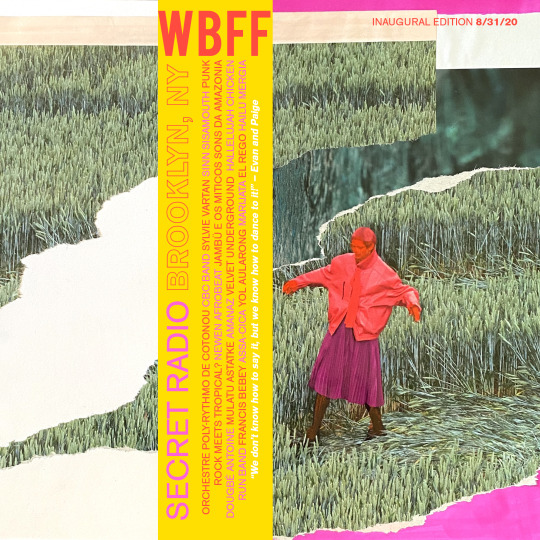
Inaugural edition of WBFF, secret radio Kensington Brooklyn (Hear it here.)
Before it comes up: No, we don’t speak most of these languages. We definitely don’t even know how to pronounce most of the song titles. And while we keep reading up on em, some of this stuff we’ll never know. And that’s fine. That doesn’t need to slow us or you down. If you dig it, you dig it!
So here’s what you’re listening to, and detailed notes below:

1- T.P. Orchestre Poly-Rythmo de Cotonou w Sagbohan Danialou- The Kings of Benin Urban Groove 1972-1980 - “Gbeto Vivi”
T.P. stands for “tout poissant,” or “all powerful,” and right from the jump you can hear why this band is so exciting: it’s pure funk and pure Africa at the same time — super funky drums all wound in hand drums, a royal horn section, and an electric guitar holding down the rhythm stabs. The fact that you have no idea what he’s talking about barely even matters. It’s amazing how the song moves between an African dominance and a Western dominance from section to section.
2- CBC Band - Saigon Rock & Soul - “The Greatest Love”
This is exactly the tone that I always wanted the term “acid rock” to mean. Every instrument is so hot it’s melting over the other instruments. The organ is such a classic West Coast flavor, the whole band takes every opportunity to go crazy together, and the vocal is a truly mysterious character. But in the end, anyone can sing along to “yeah yeah, yeah yeah, yeah yeah yeah yeah yeah yeah,” yeah?
3- T.P. Orchestre Poly-Rythmo De Cotonou Benin - “Mille Fois Merci”
Apparently, in the ‘70s one of the things that started happening with records in the Benin region was that the bands would not only write super badass songs, but when it came time to record, they would skip the spaces between songs and just record the whole side in one unbroken flow. It certainly sounds like that’s what happened with “Mille Fois Merci” — where we start is definitely not where we end up, though it’s not even clear, without close listening, when we shift into the song with the chorus lyrics. One of the best elements of African music is that influence is flowing in from France and America in completely different ways, and mixing more in Africa than they ever seemed to in the US. “Mille fois merci” = “a thousand thank yous.” So many great guitar parts over the course of the song, all wound tightly around each other, alternately improvising and contributing to the drone underlying huge passages.
4- Vicky & T.P. Poly-Rythmo - “Au Bord de l’Eau”
Vicky is one of the central members and I think songwriters of T.P., and he’s constantly getting call-outs from the other members of the band. This song’s melody reminds Paige of:
5- Sylvie Vartan - “La Plus Belle pour Aller Danser”
In the movie “Peppermint Soda,” there’s a scene in which all of the schoolgirls have gone bonkers, singing this song and clapping and dancing on their desks, and the teacher has no control over the class at all. This is the song they’re singing.
6- Cambodian Rocks - Volumen 1 - Sinn Sisamouth - “Quando, My Love”
I love the drum machine — Optigan? — throughout, but the guitar playing is what just drops my jaw every time. It’s so Les Paul in its fluid inventiveness, shimmering and sliding through the song until it crescendoes and dissolves into light. Meanwhile, all I can picture is a dark, mostly deserted bar verging on last call, on the forgotten edge of an army base deep in Cambodia, where this guy and his guitarist deliver a timeless memory that can never be sufficiently described or even remembered, only ever conjured in a cloud at the edge of sleep.
7- Gasper Nali - “A Bale Ndikuwuzeni”
“Punk Rock meets Tropical? Music is everywhere.” That’s the tag on the YouTube video that I ran across a couple of years ago, and damned if that’s not exactly the thing. I must’ve watched the video of the singer playing his giant one-stringed instrument a dozen times the first time I found it. How can one dude on a beach encapsulate the feeling of playing in a punk band? It’s the essentialism. I did eventually find a video of him doing this song in the studio, and it turns out that the version he has in his head includes beautiful harmonies and a delicacy that is completely absent from the video filmed at Nhakta Bay in Malawi — but this version to me is the real one.
https://www.youtube.com/watch?v=bdhoeK9Gs34
8- Newen Afrobeat feat. Seun Kuti & Cheick Tidiane Seck - “Opposite People”
Another one that is enhanced by watching the video. The drummer looks like he’s 16 years old, but his patterns and fills are just unstoppable, and as everyone plays you can pretty much smell the studio funk. The bent-note keys solo is Cheick Tidiane Seck. So much percussion! And the vocals don’t even kick in until the ninth minute, but when they do, it only gets even better.
https://www.youtube.com/watch?v=mFSRCG4DrmI
9- Jambü e Os Miticos Sons Da Amazonia - Magalhaes e Sua Guitarra - “Xango”
10- Dougbé Antoine et l’Orchestre Poly-Rythmo - Ye Ko Gni Me Towedea
Antoine Dougbé is one of our all-time favorite composers. This track is such a freakin banger — the funky drums, the guitars, the keys, all the sweat flying everywhere. “Legends of Benin” is an absolutely essential collection, and Dougbé’s tracks are the standouts. The arrangements are by Melomé Clement, whose work we’ve been getting into as well. Dougbé was, according to Melomé, a Vodoun priest who referred to himself as “The Devil’s Prime Minister.”
11- T.P. Orchestre - “Se Ba Ho”
This band was known by more than a dozen names and played on tons of records. This track is from an Analog Africa collection of T.P. Orchestre songs called “Echos Hypnotiques,” which is great from beginning to end. Check out the video of them playing this song live on TV — when the dude cuts loose on the Farfisa it’s a clinic!
https://www.youtube.com/watch?v=M0c34HLss-w
12- Mulatu Astatke - Tezeta
We don’t know much about this guy except that he’s Ethiopian. This song has a sense of such delicate, fleeting beauty.
13- Amanaz - “Khala My Friend”
Amanaz stands for Ask Me About Nice Artistes from Zambia, and that sense of sincerity seems entirely appropriate to this Dylanesque track. There are more great tracks where this came from.
14- The Velvet Underground - “Sweet Jane” (demo)
How could we not, after “Khala My Friend”? This is an early demo version. I love the snare hits in the first verse.
15- T.P. Orchestre - “Malin Kpon O”
This is just a perfect example of Beninese and American rock sensibilities. Also from “Echos Hypnotiques.” It’s so gotdamn hip with its funk guitar and discordant keys that slip into a heavy, hooky chorus. It’s so rockin!
16- T.P. Orchestre Poly Rythmo de Cotonou & Bentho Gustave Titiou - “Gbe Sou Ve Gnin (La Vie Semble Facile Mais…)”
I feel like this is the first track we found on our own, without the (invaluable) help of Analog Africa and other able curators. Bentho Gustave is T.P. Orchestre’s bassist and built into the core of the band. This track comes on with some reggae-ish aspects, but to me it’s ultimately completely different thing. The singalong choruses just feel so good, like the best night of the summer.
17- Hallelujah Chicken Run Band - “Tamba Zimba Navashe”
Analog Africa’s second release was this collection of tracks from the great Zimbabwean band. It includes b-sides and stuff plus a studio album — a lot of the African tracks were recorded live or outside at night or in variously improvised settings, but this one was in a classic studio setting. The whole album is full of 3s against 4s and interlocking rhythms, but this track’s endless tumble is somehow special. I always think that the singer’s voice has the timbre of Tupac Shakur, which makes me like him so much. This whole album feels like it could be a hit today.
18- Francis Bebey - “Sanza Tristesse”
19- Francis Bebey - “The Coffee Cola Song”
Surely our electronically oriented friends have been hip to Francis Bebey for years, but this guy’s whole body of work has been a revelation to us. He was Cameroonian, living in Paris and working at the embassy there before he quit to work on music full time. Though he was a librarian of traditional African music and architecture, he believed that African music was absolutely alive and part of the future of music, and needed to not get bogged down in Western versions of “authentic” music untouched by other influences. His albums and collections are, so far as we’ve found, all full of true weirdness and insight — if you need a place to start, “African Electronic Music 1975-1982” is it.
20- Assa-Cica - self-titled - “Mi Man So Gbeme We Fide”
21- Assa-Cica - Echos Sonores du Benin - “Yokpo Wa Non Kpo Ha Mi”
“Echos Sonores du Benin” is the first physical record that we actually tracked down and bought online. “Yokpo” was the song that convinced us we had to have it. This summer, when the record finally arrived from Benin to our place in the woods, we spent the day assembling a table and chairs outside on the porch, so that we could invite our friend Brad over for the first listen among the fireflies and the hooting of nearby juvenile barred owls. The title translates from Yoruba to “I Couldn’t Help You.”
Man, this performance is a showstopper.
22- Yol Aularong - Cambodia Rocks Volumen 1 - “Whiskey Whiskey” (House of the Rising Sun)
This guitar tone absolutely slays, and gets right to the heard of “House of the Rising Sun,” whether or not the Cambodian lyrics have anything to do with New Orleans (I don’t think they do).
23- Marijata - “No Condition Is Permanent”
It’s been fascinating listening to music in so many other languages — no matter how many hooks the song has, if you can’t sing along, there’s just a different thing happening in the brain. So when we get to a song like “No Condition Is Permanent,” it really digs in deep. Luckily it’s also not just an excellent song but a very relevant one too. As far as I can tell this is a phrase that originates in Nigeria, though Marijata is from Ghana. This song is a stone classic. When they’re trading phrases in the middle, right before the singer just goes off the deep end, it feels like it has always existed and is never going to end.
24- El Rego - “Feeling You Got”
And straight back to James Brown. El Rego’s got the shriek, he’s got the attitude, and he’s got the… accordion? Yes indeed, the accordion. Wow. I honestly didn’t know the accordion could be funky til this track. I love how it feels like he learned the syllables but may very well not speak English at all.
25- Hailu Mergia - “Wede Harer Guzo”
Speaking of accordion, apparently that is Hailu Mergia’s instrument, though it sure doesn’t sound like an accordion to me. The story of Hailu Mergia is inspirational, in the proof that you can’t always keep a good musician down.
FYI, there are 5 minutes of dead air at the end of this “broadcast.” Chalk that up to learning as we go.
See you next time. Stay healthy, stay safe, stay friends!
0 notes